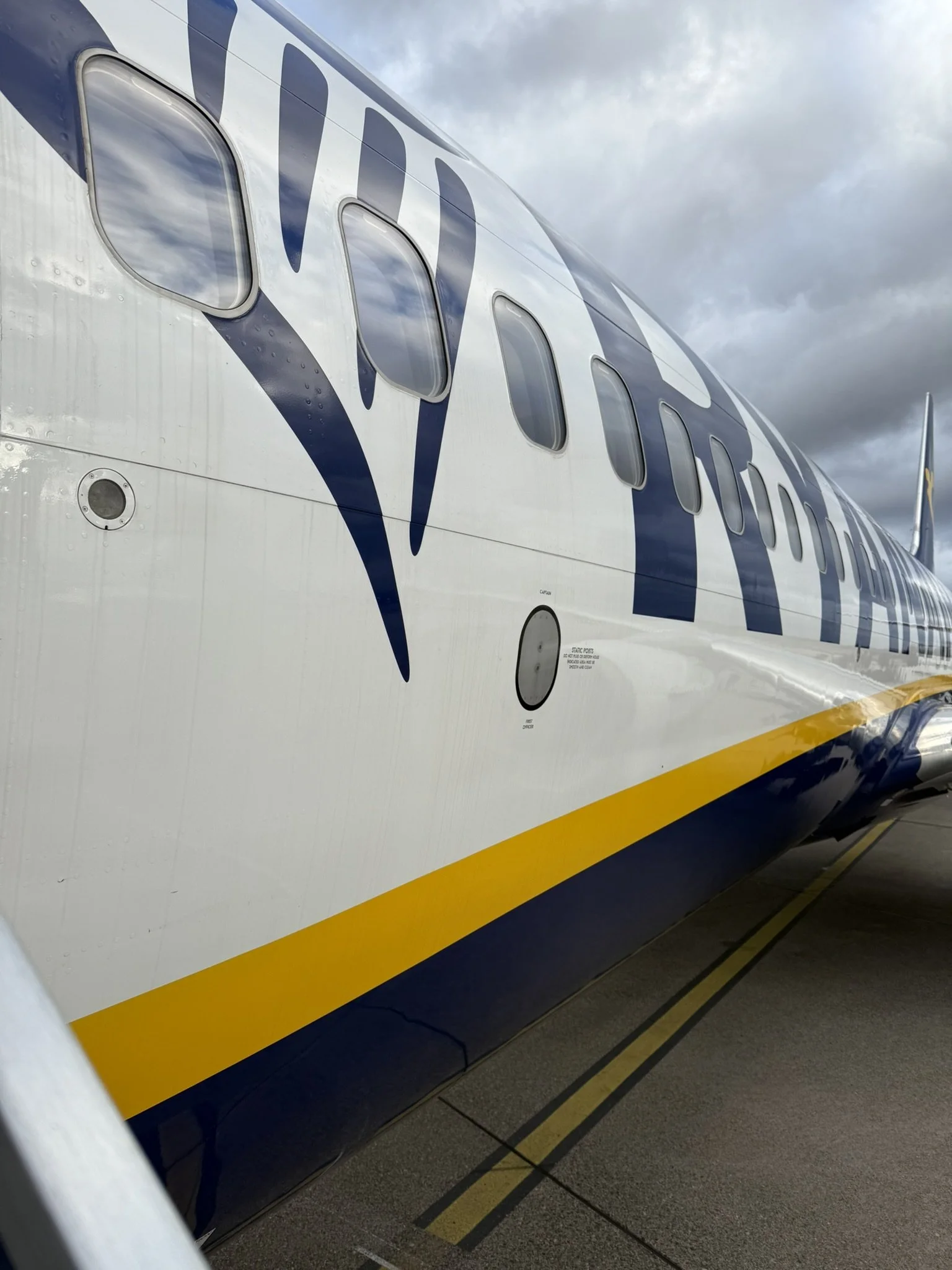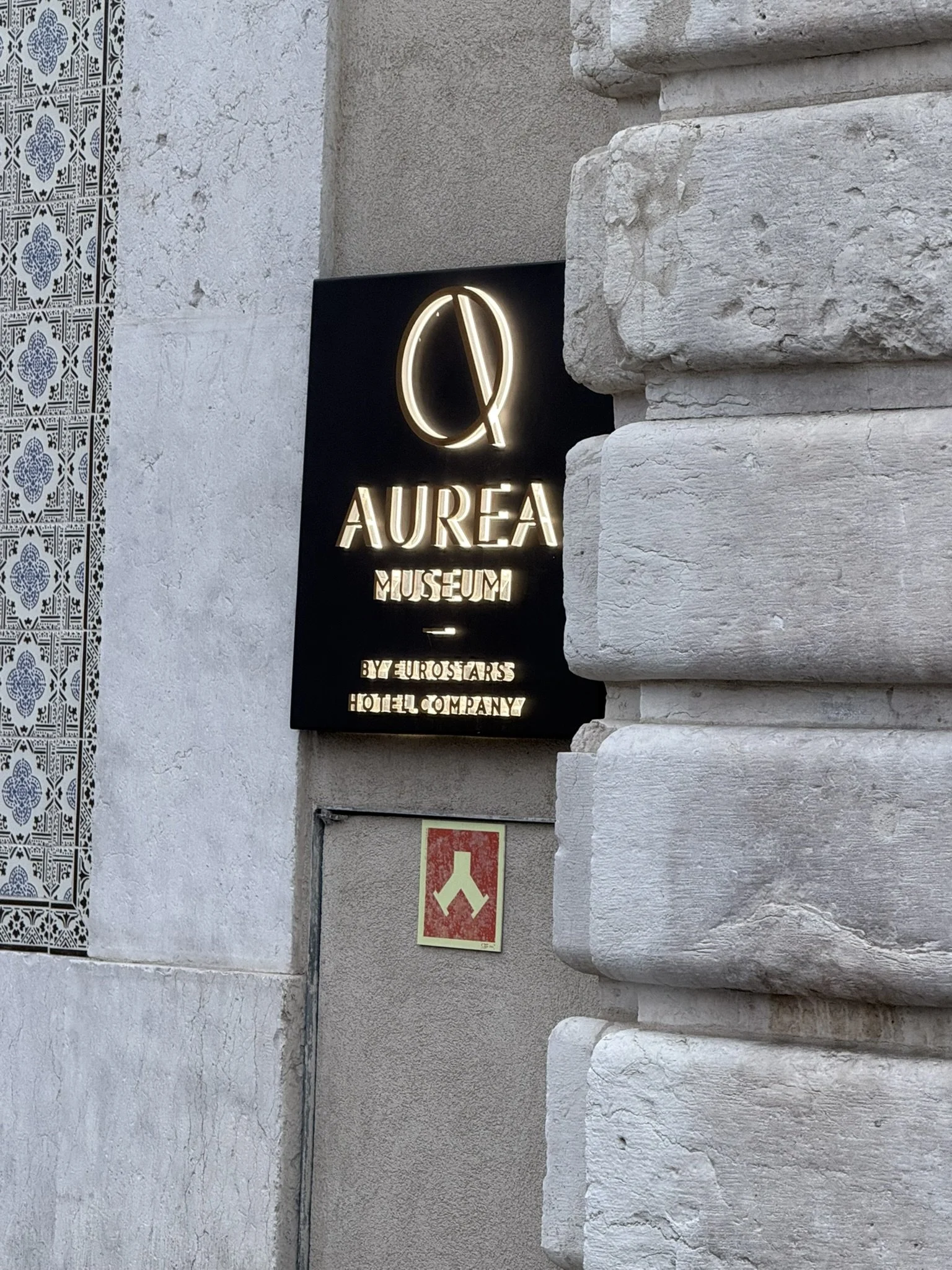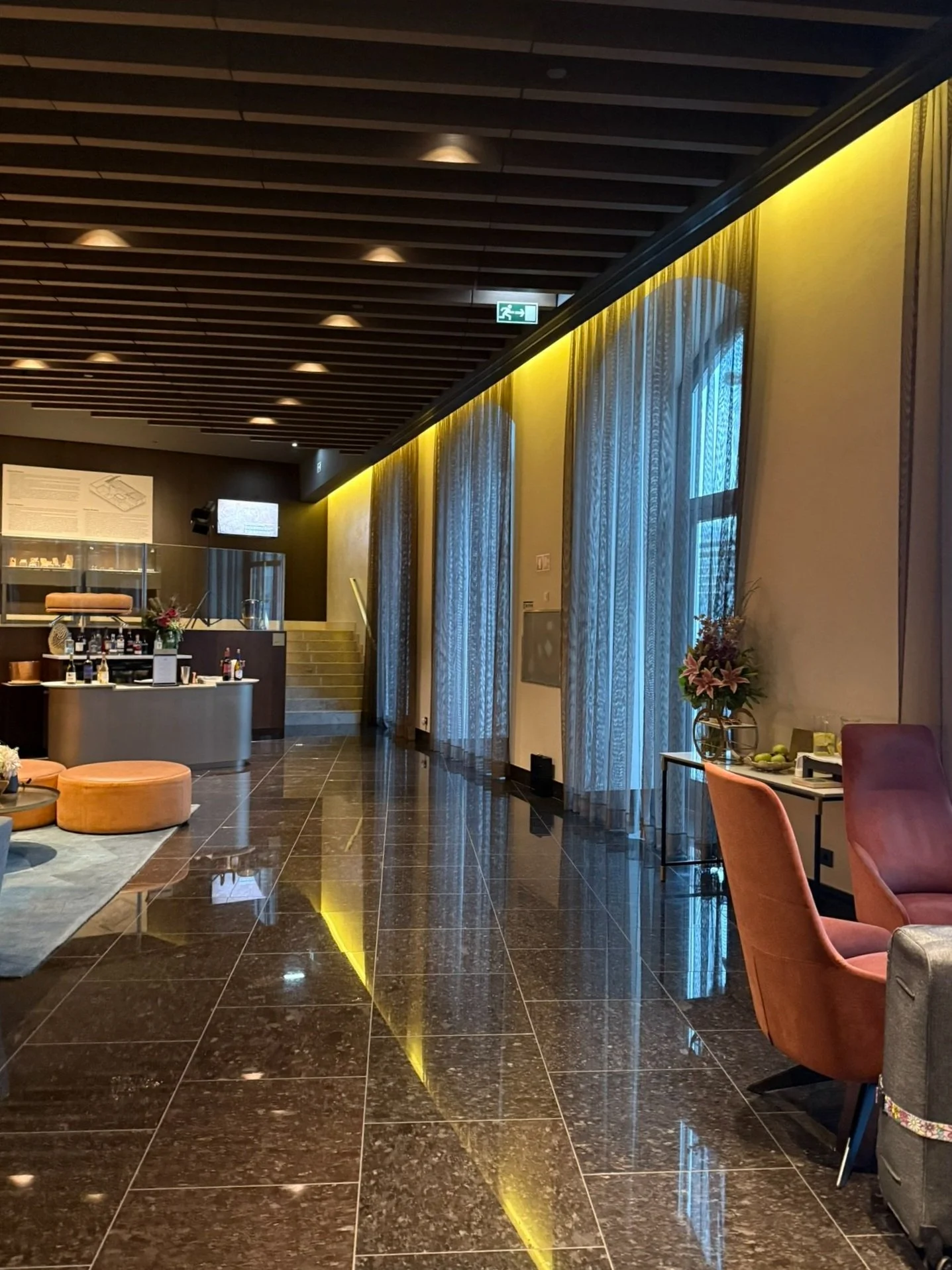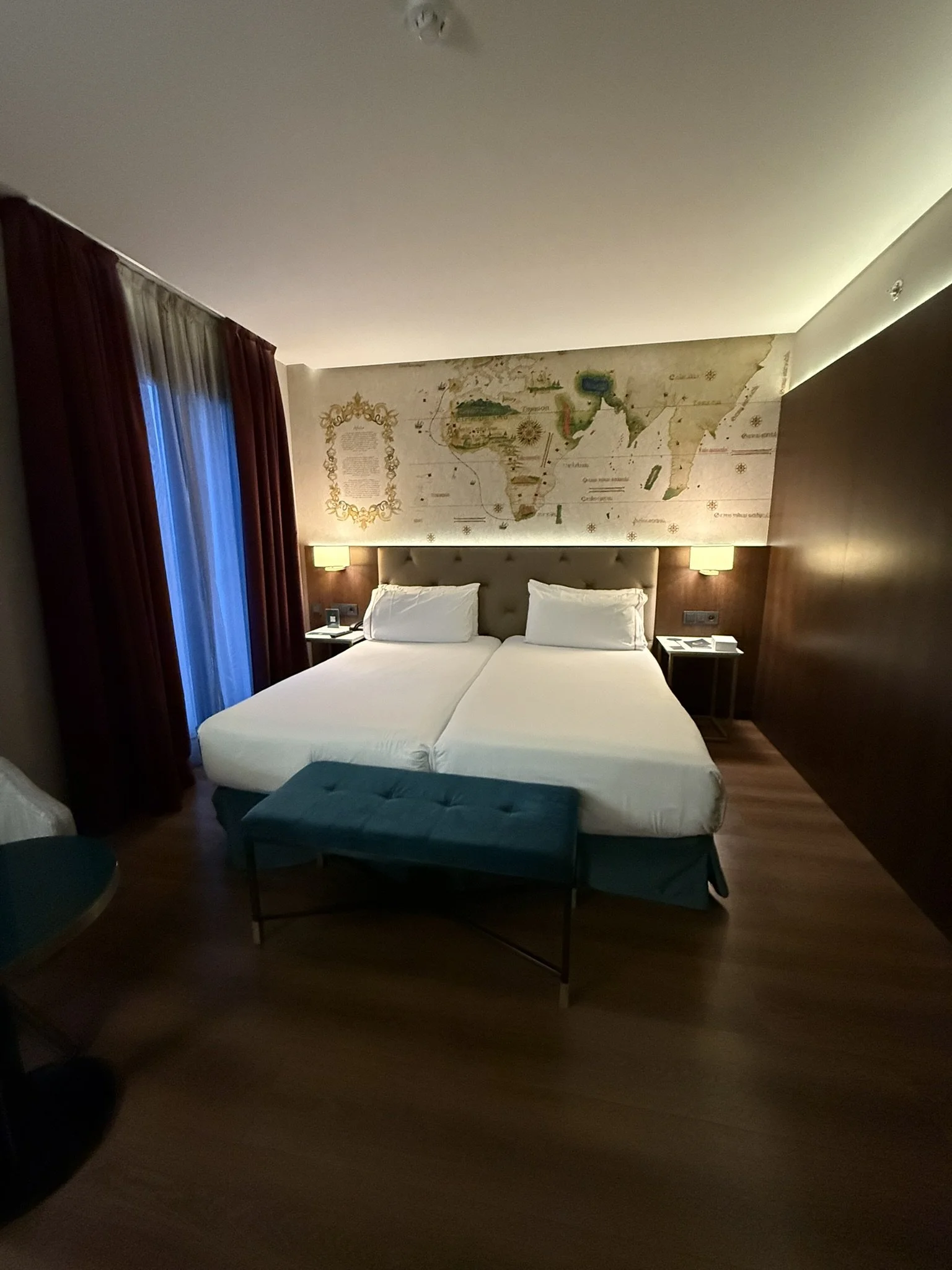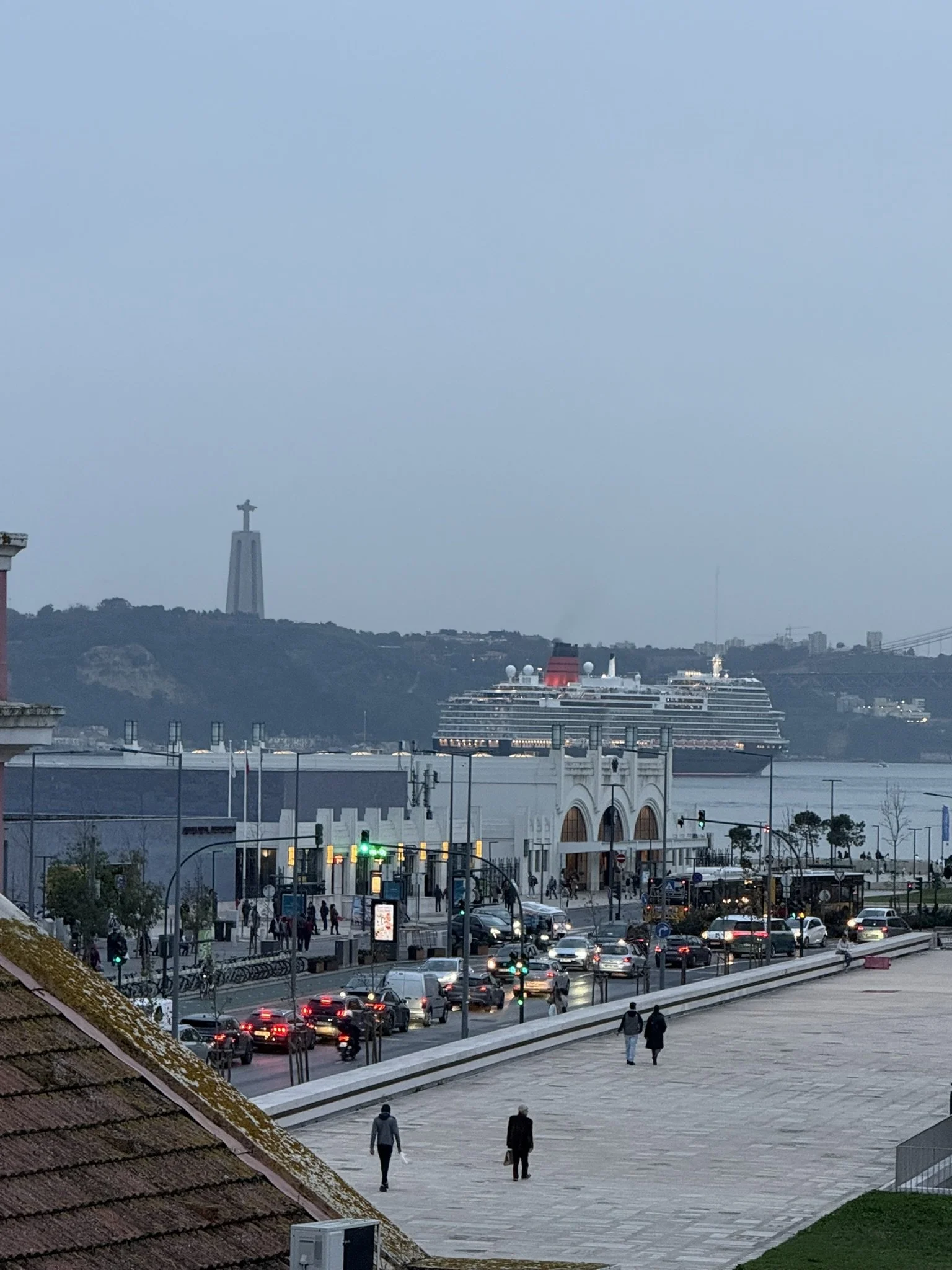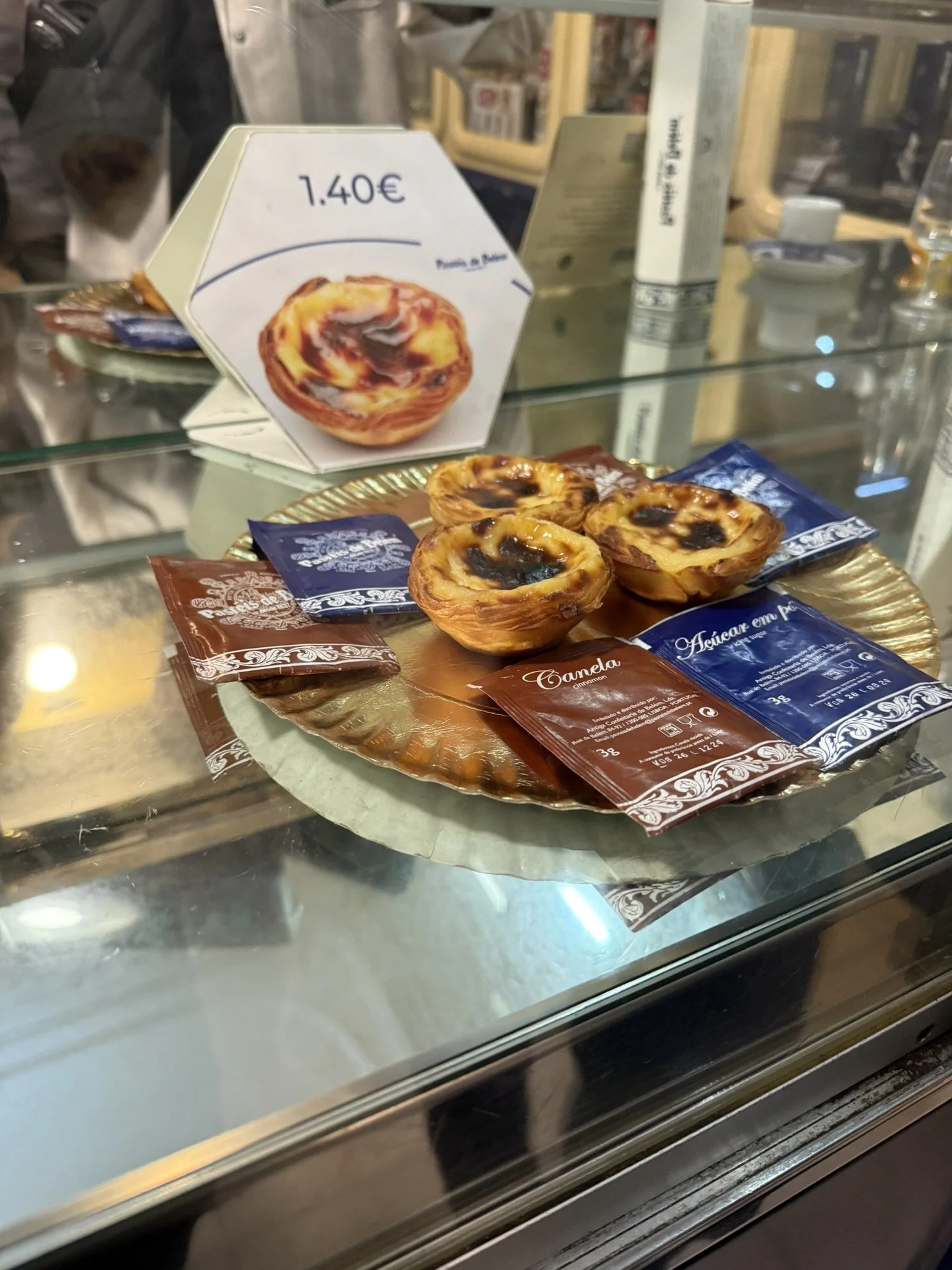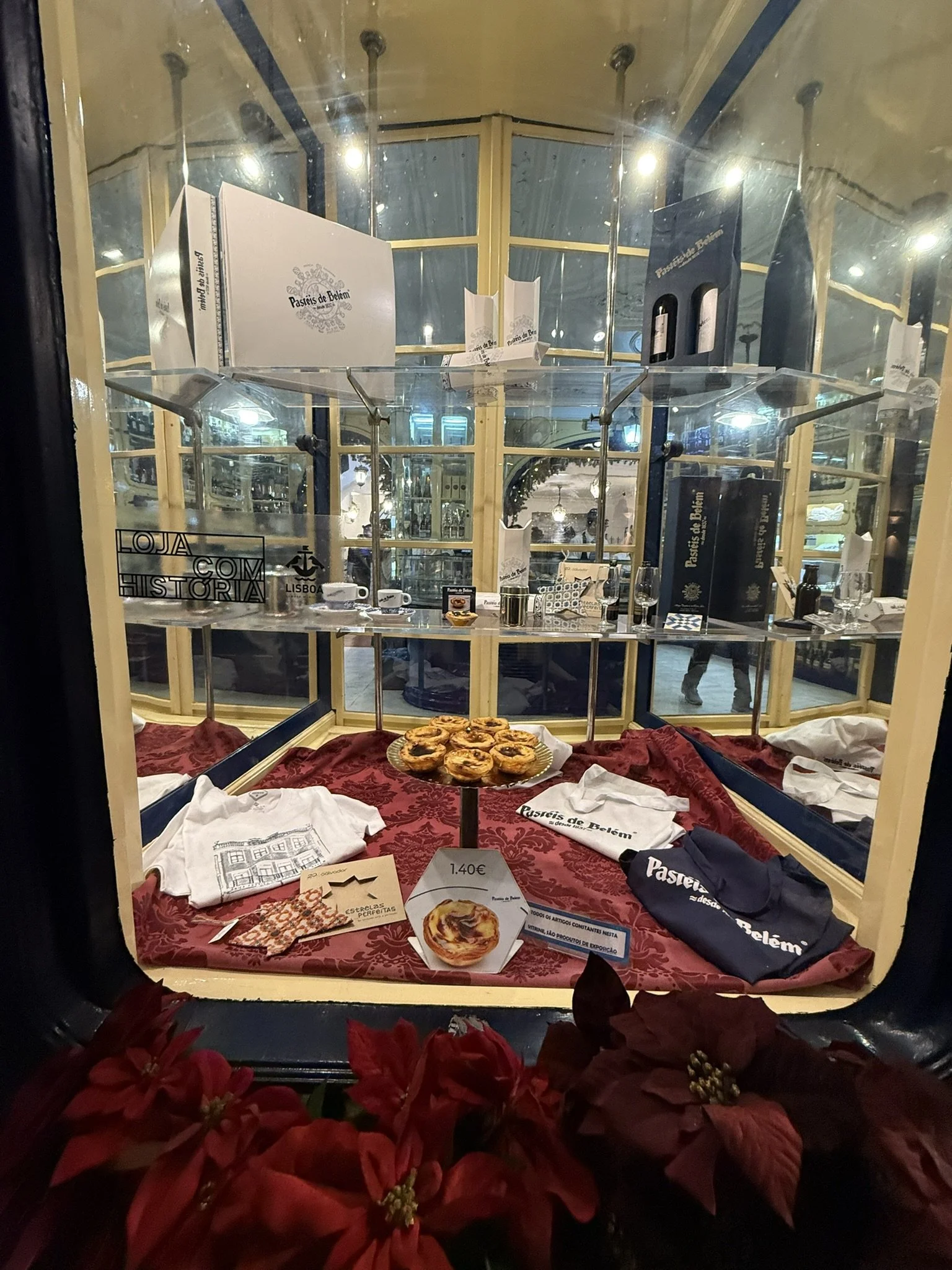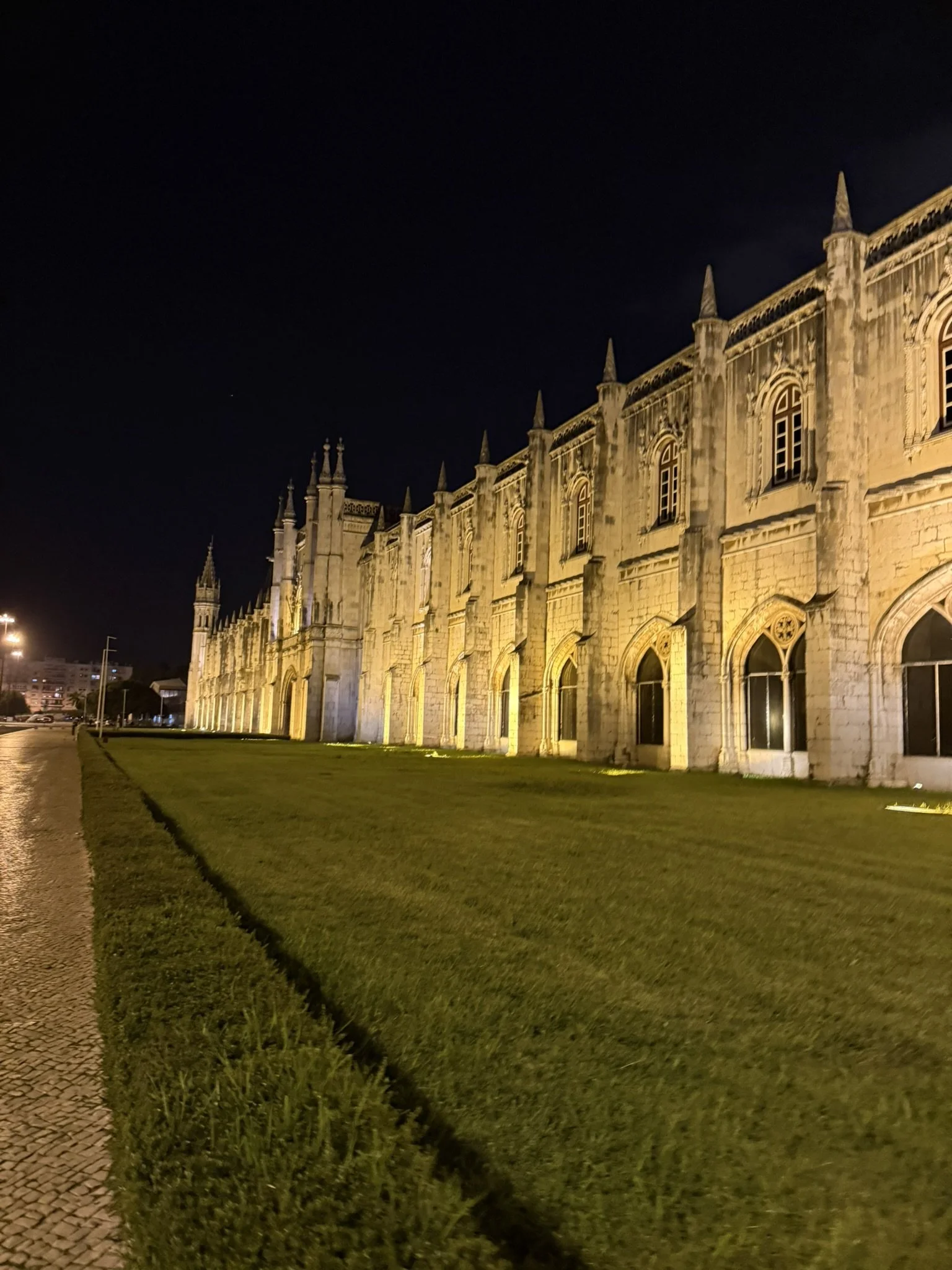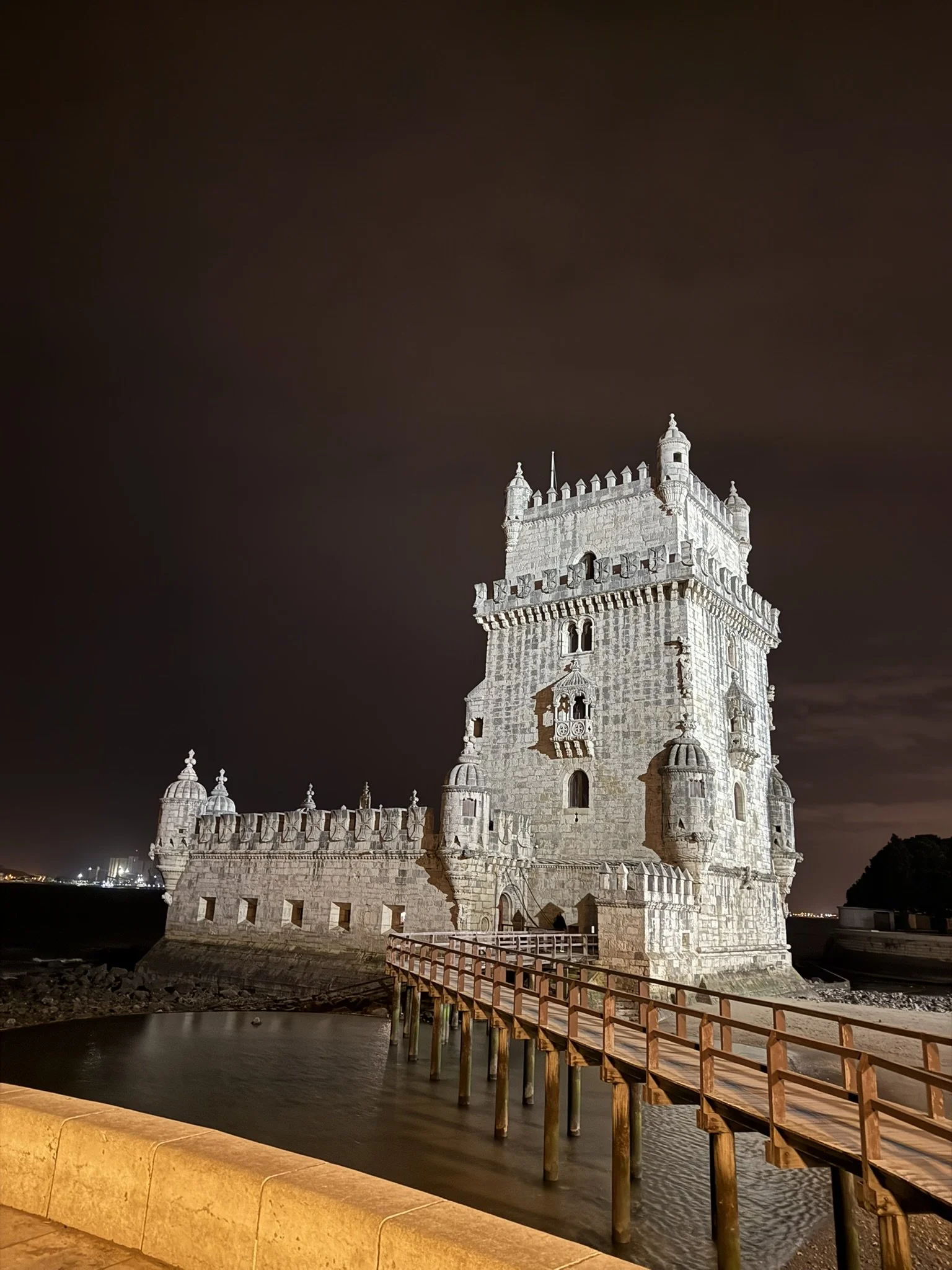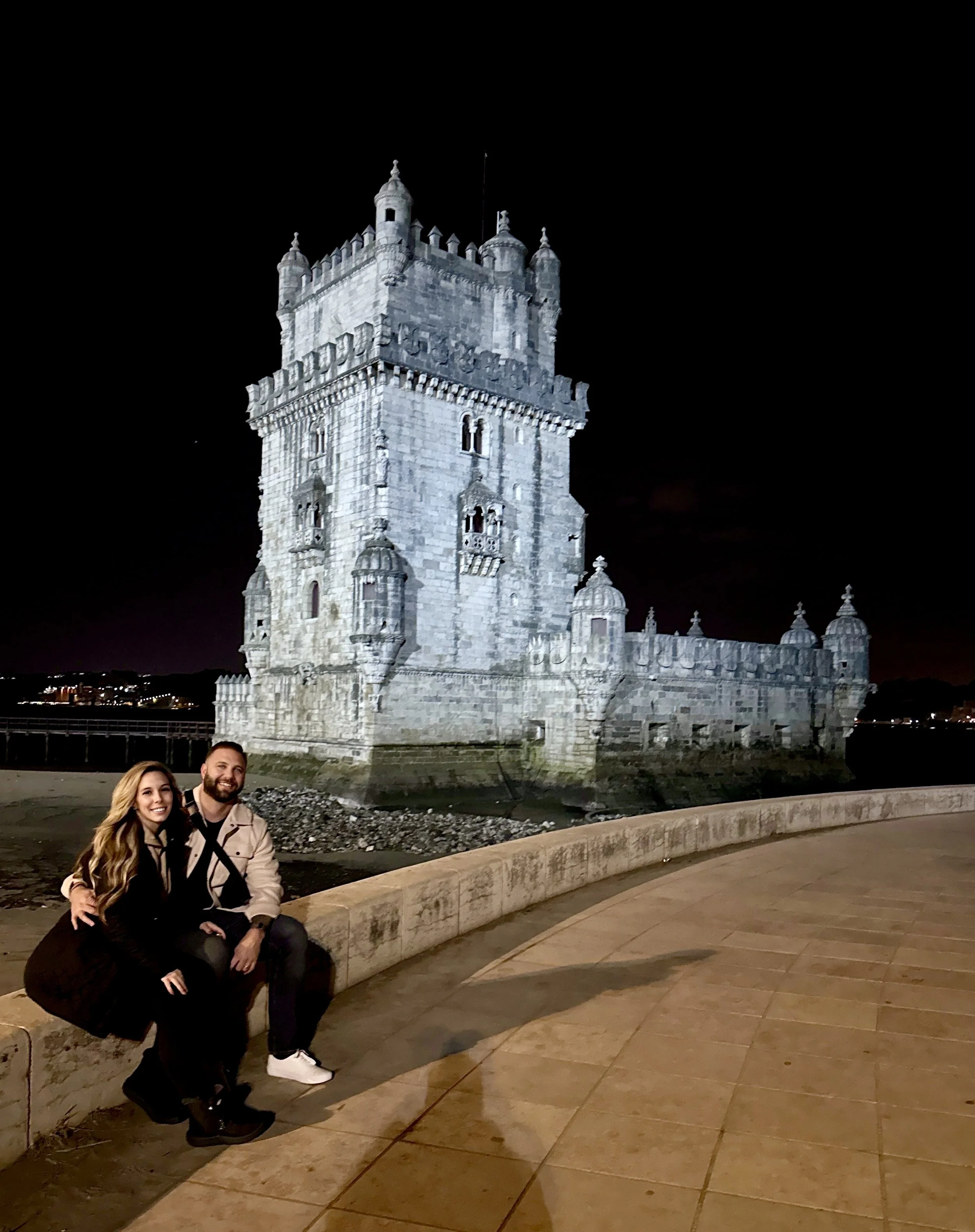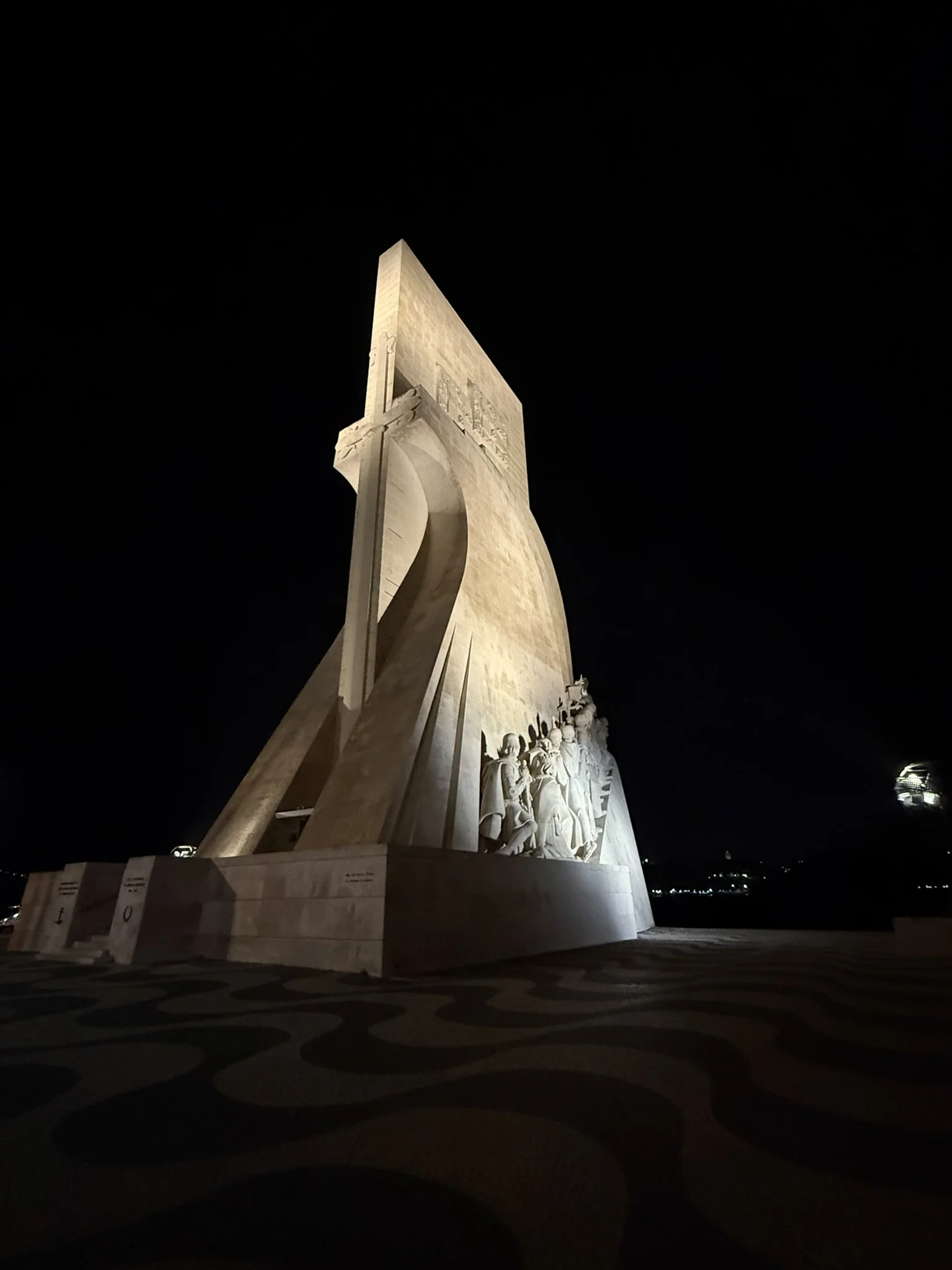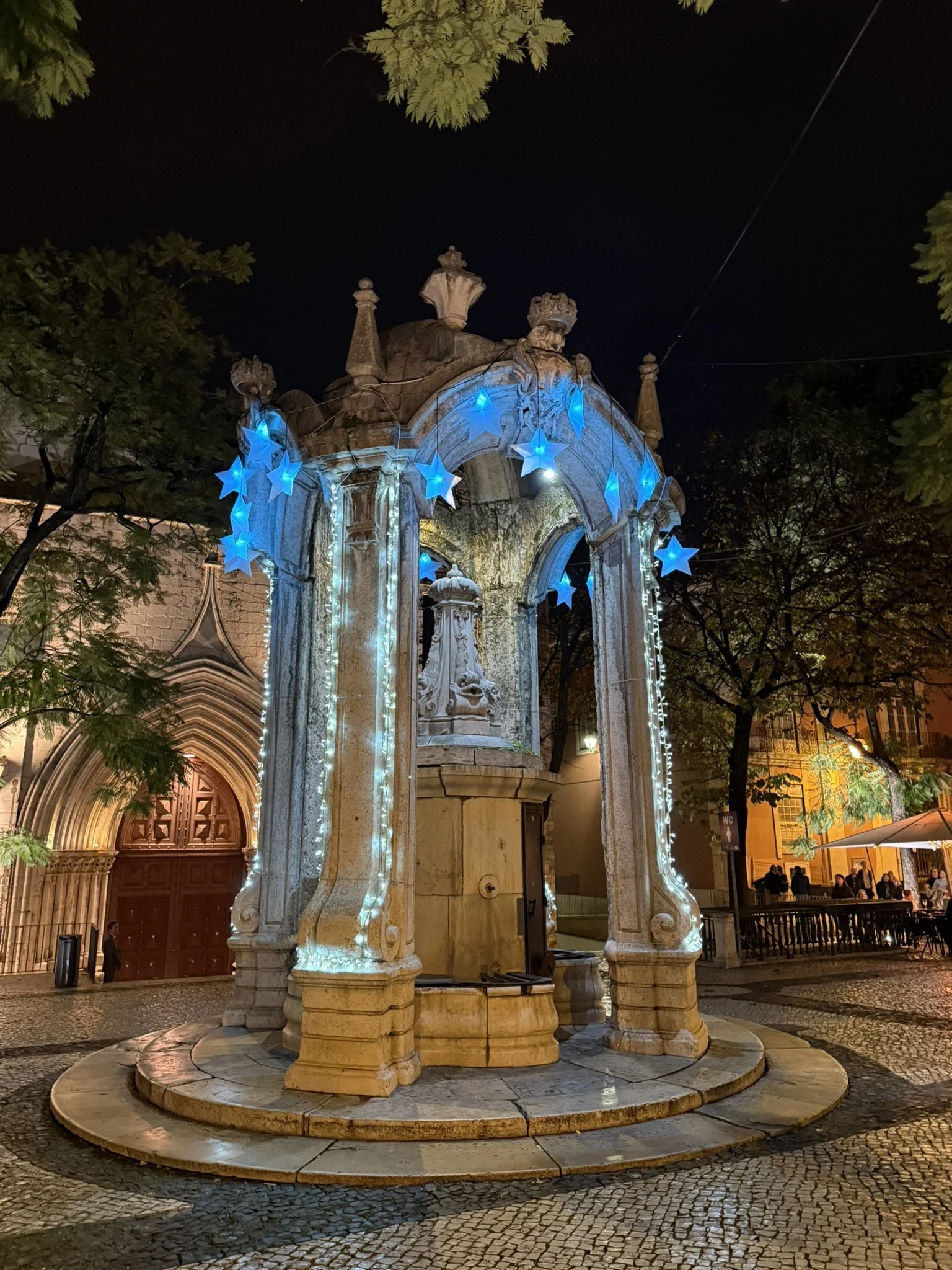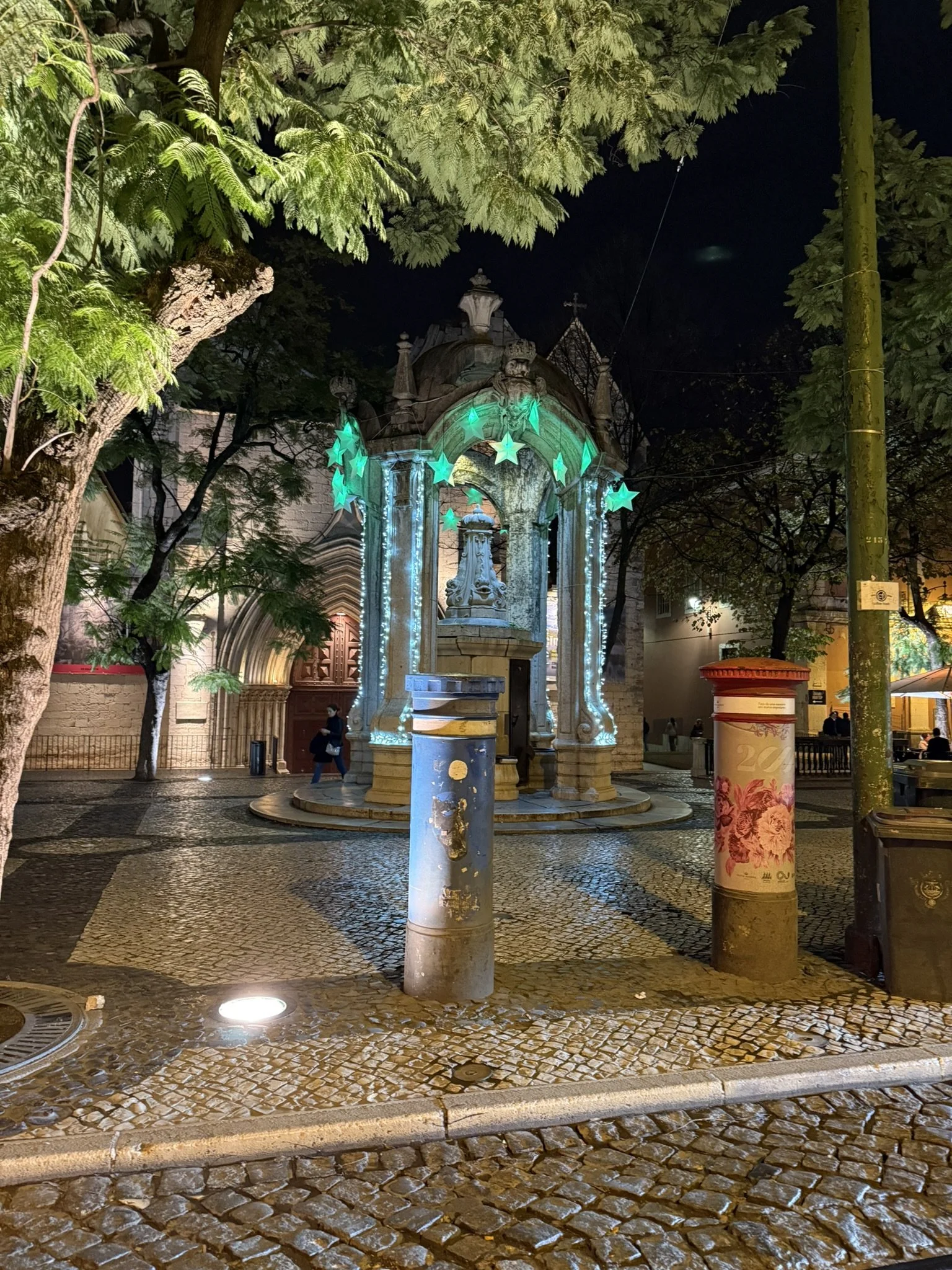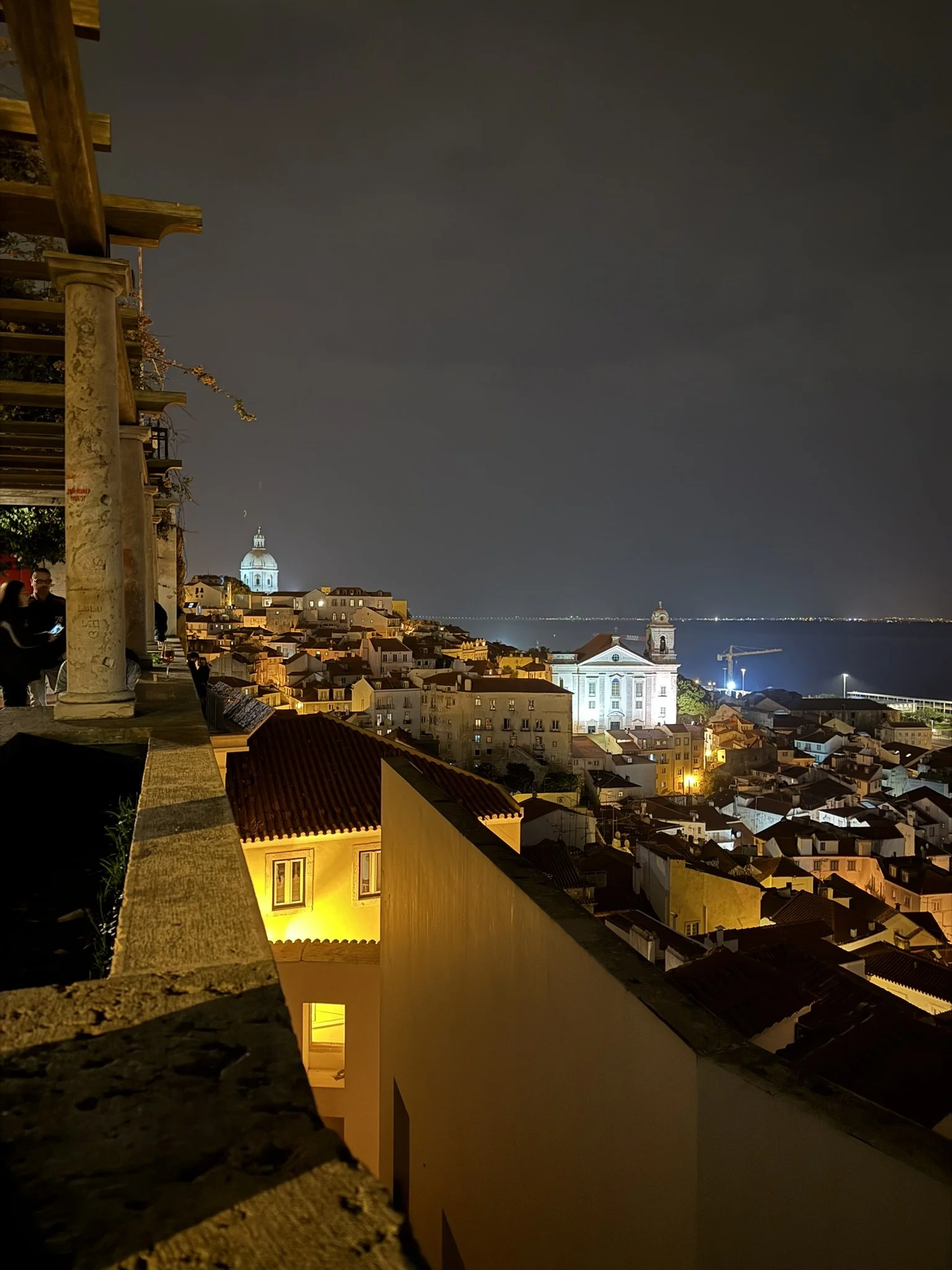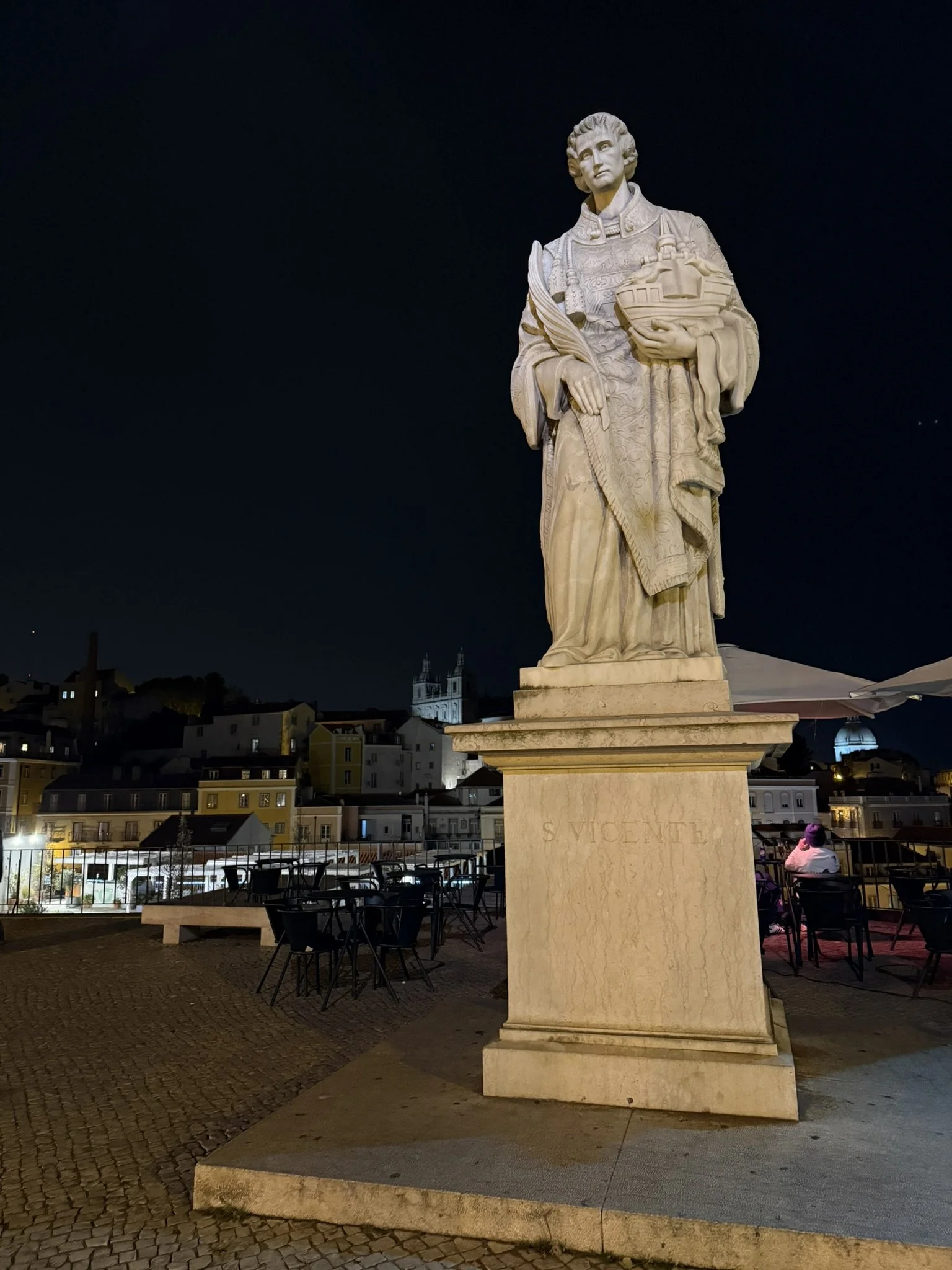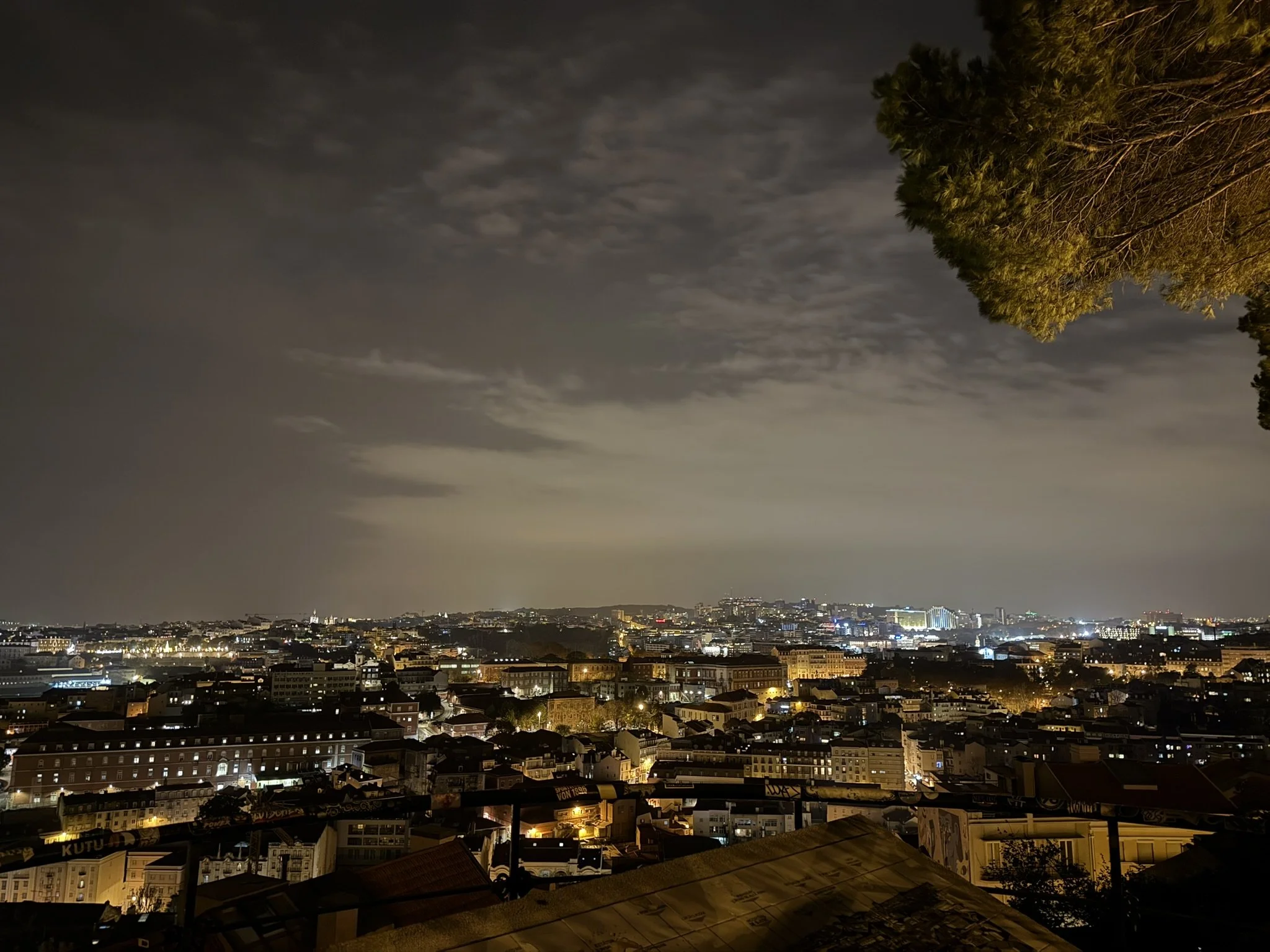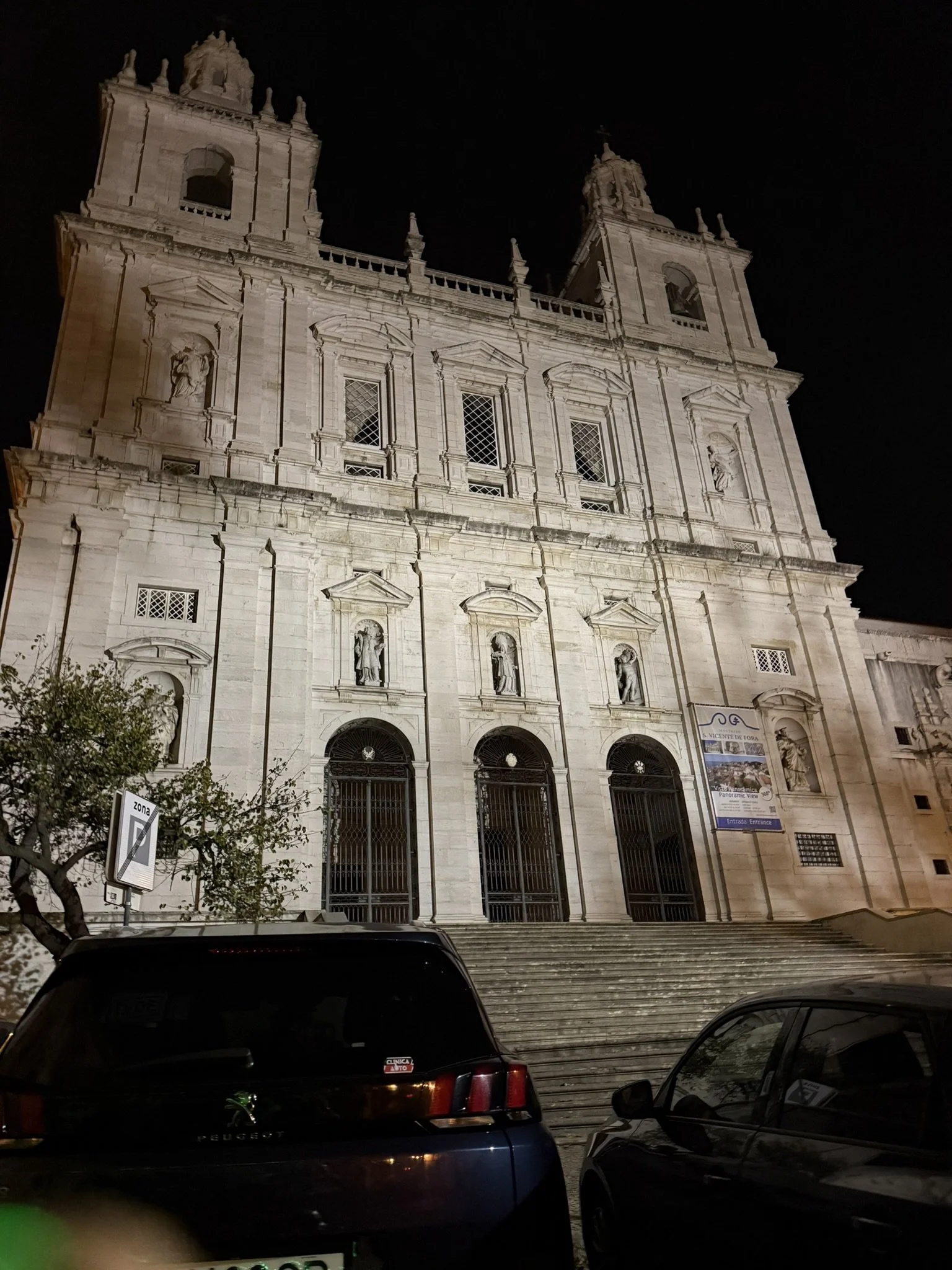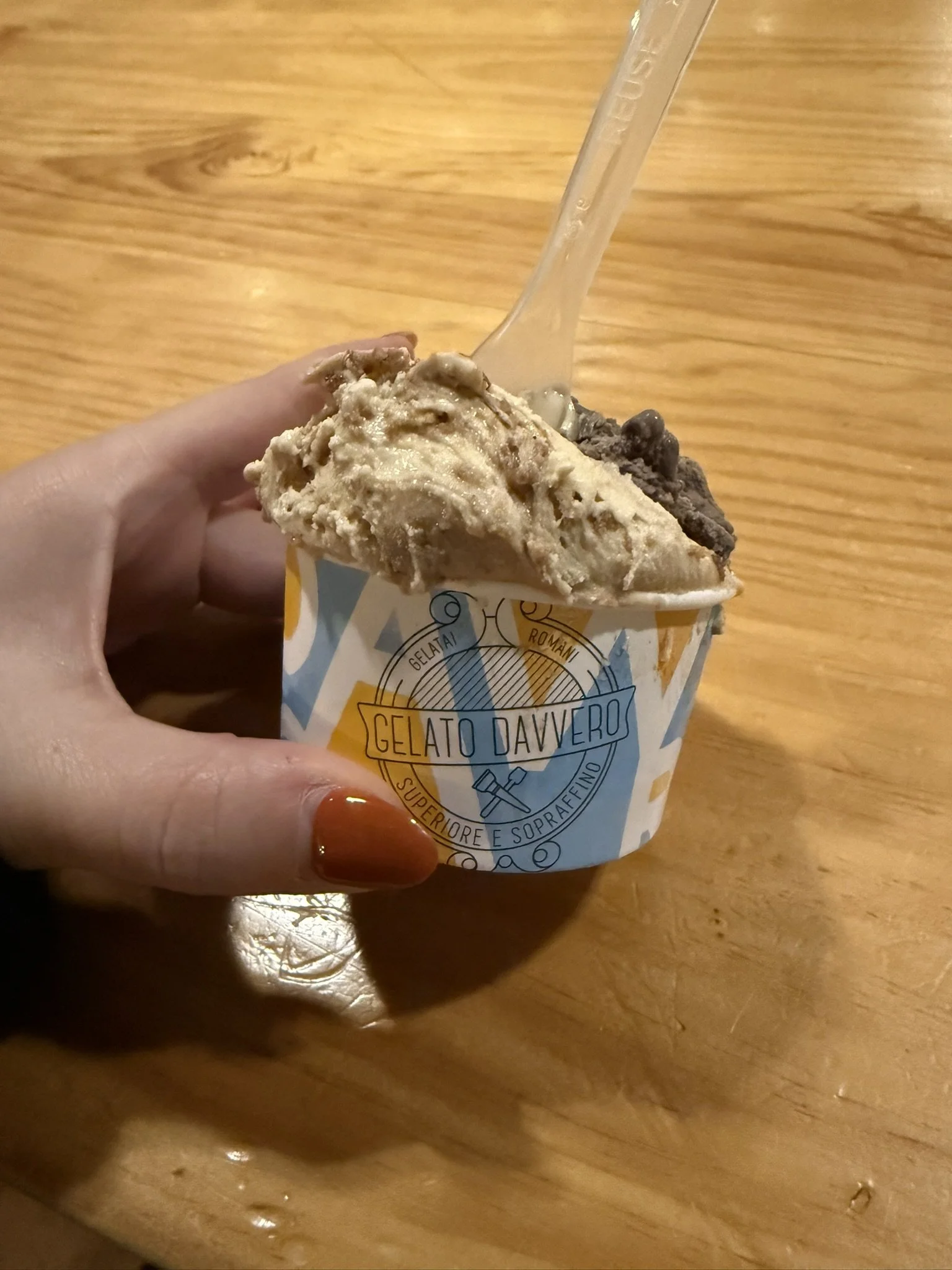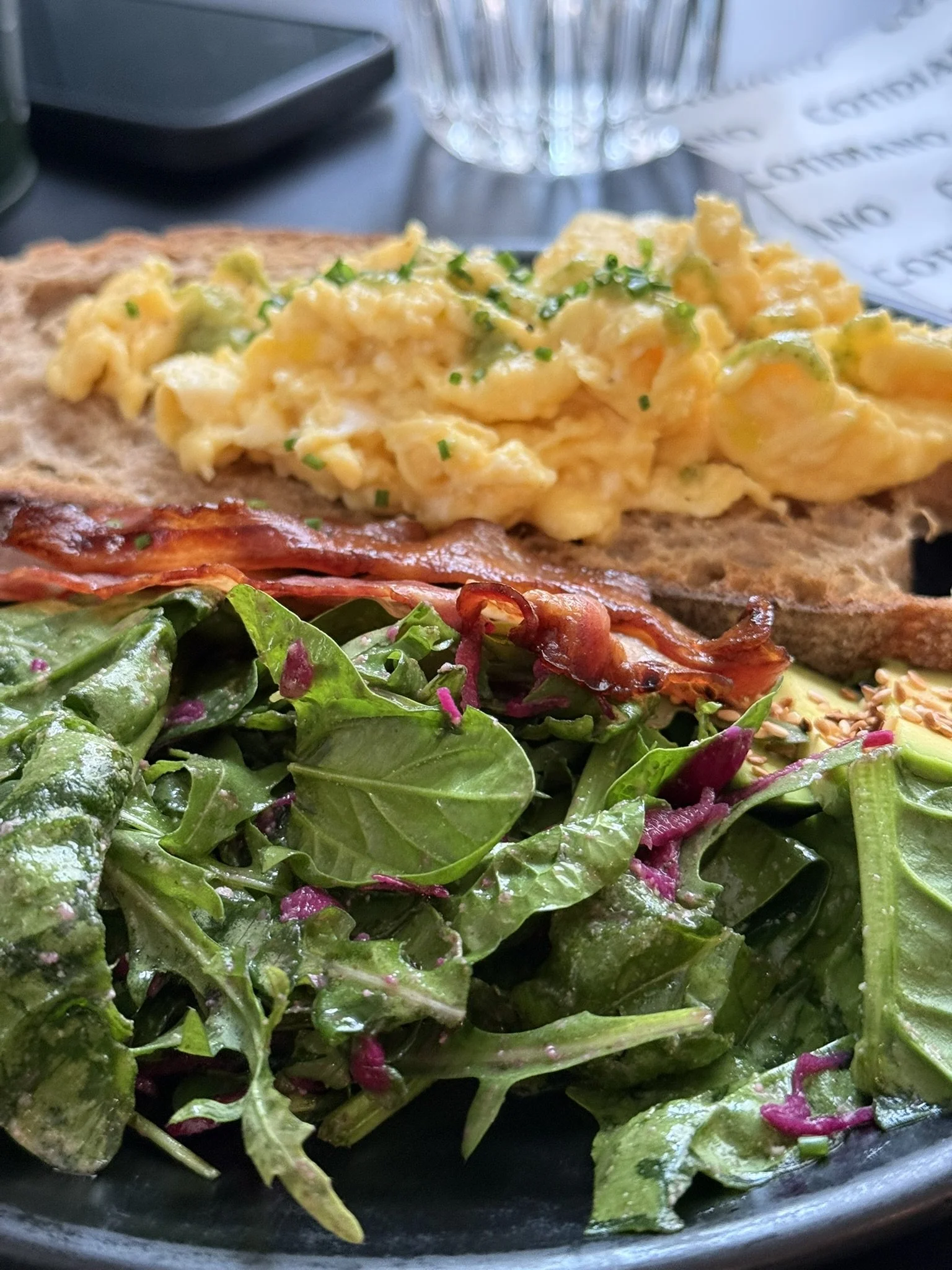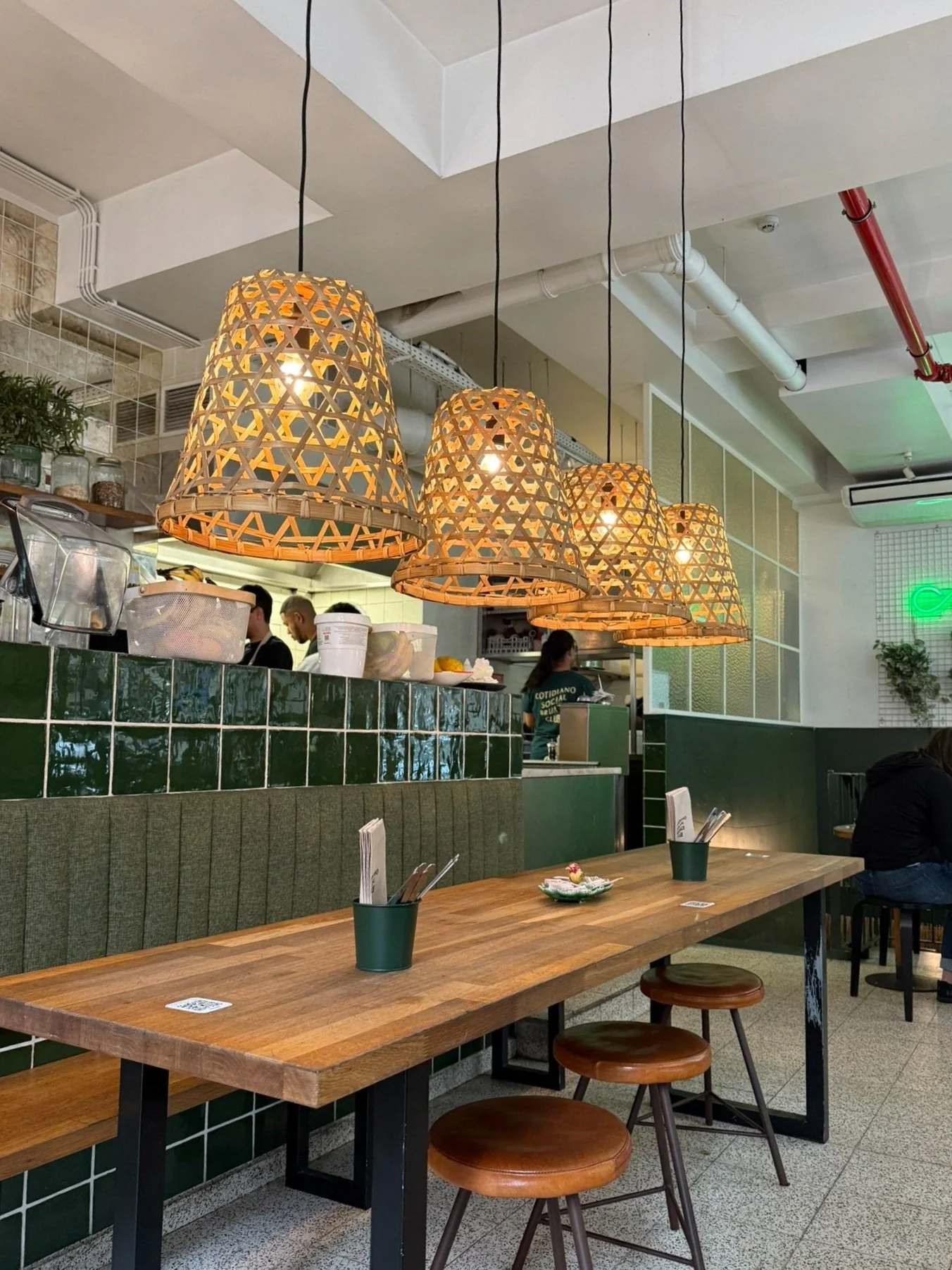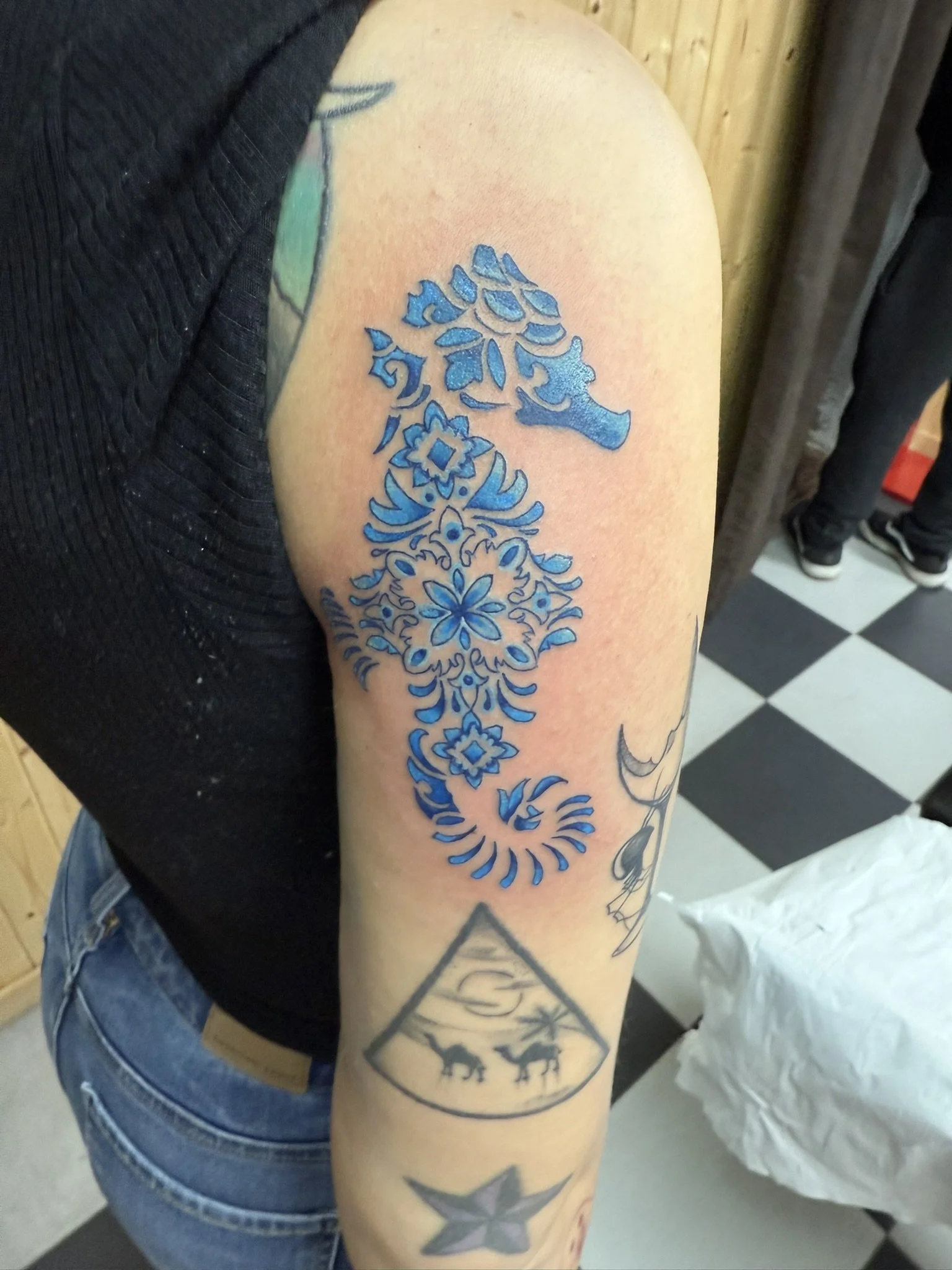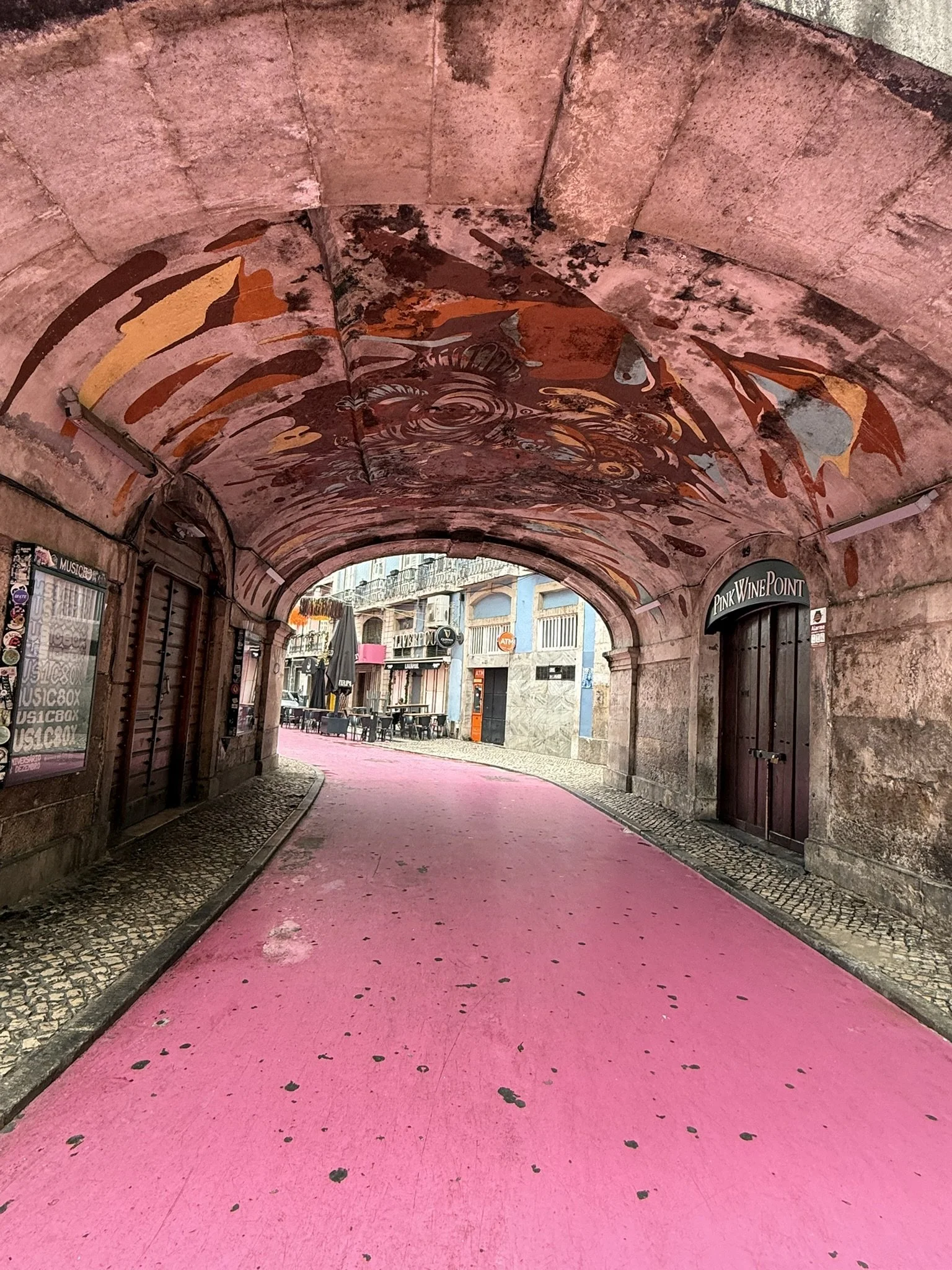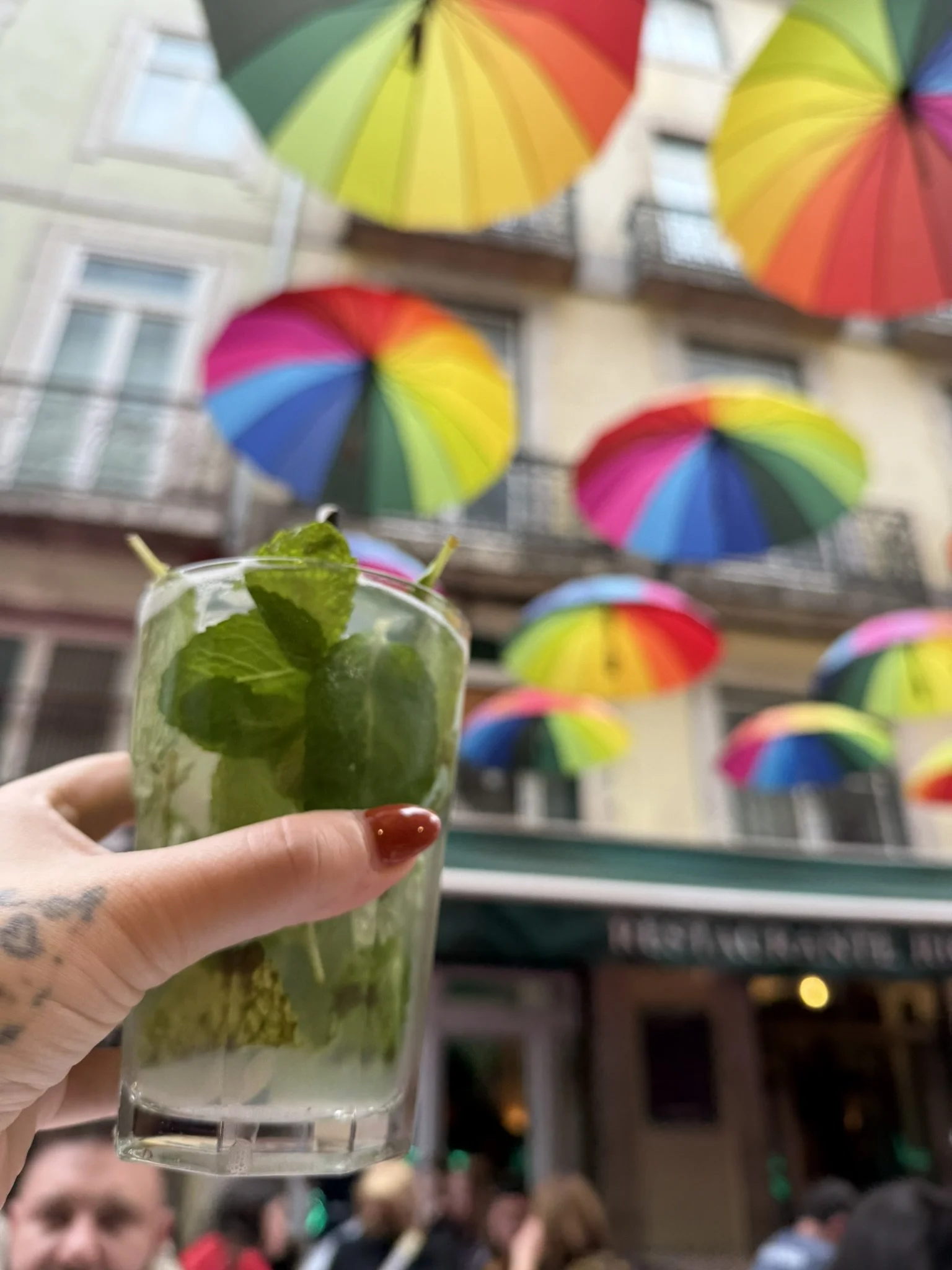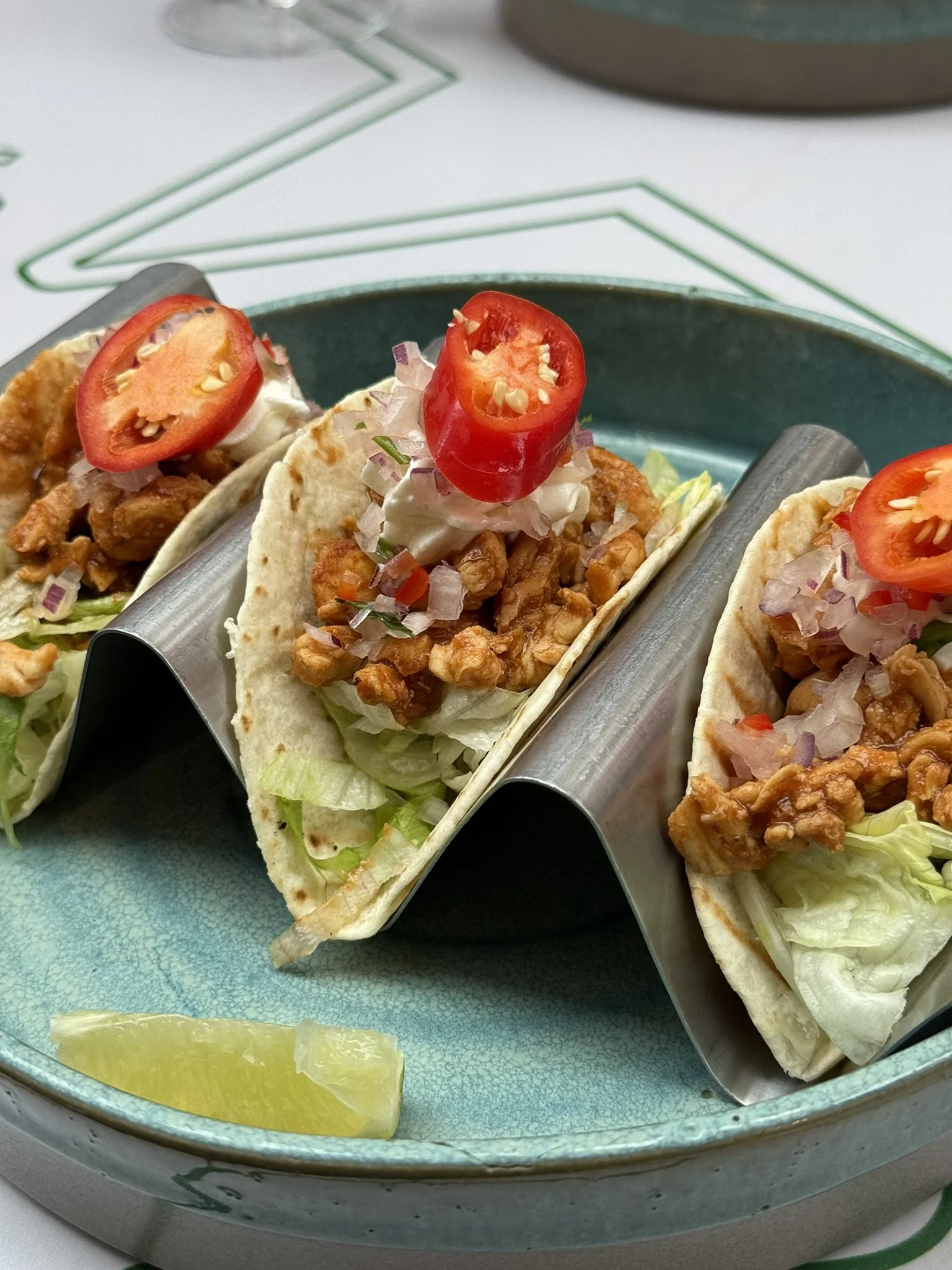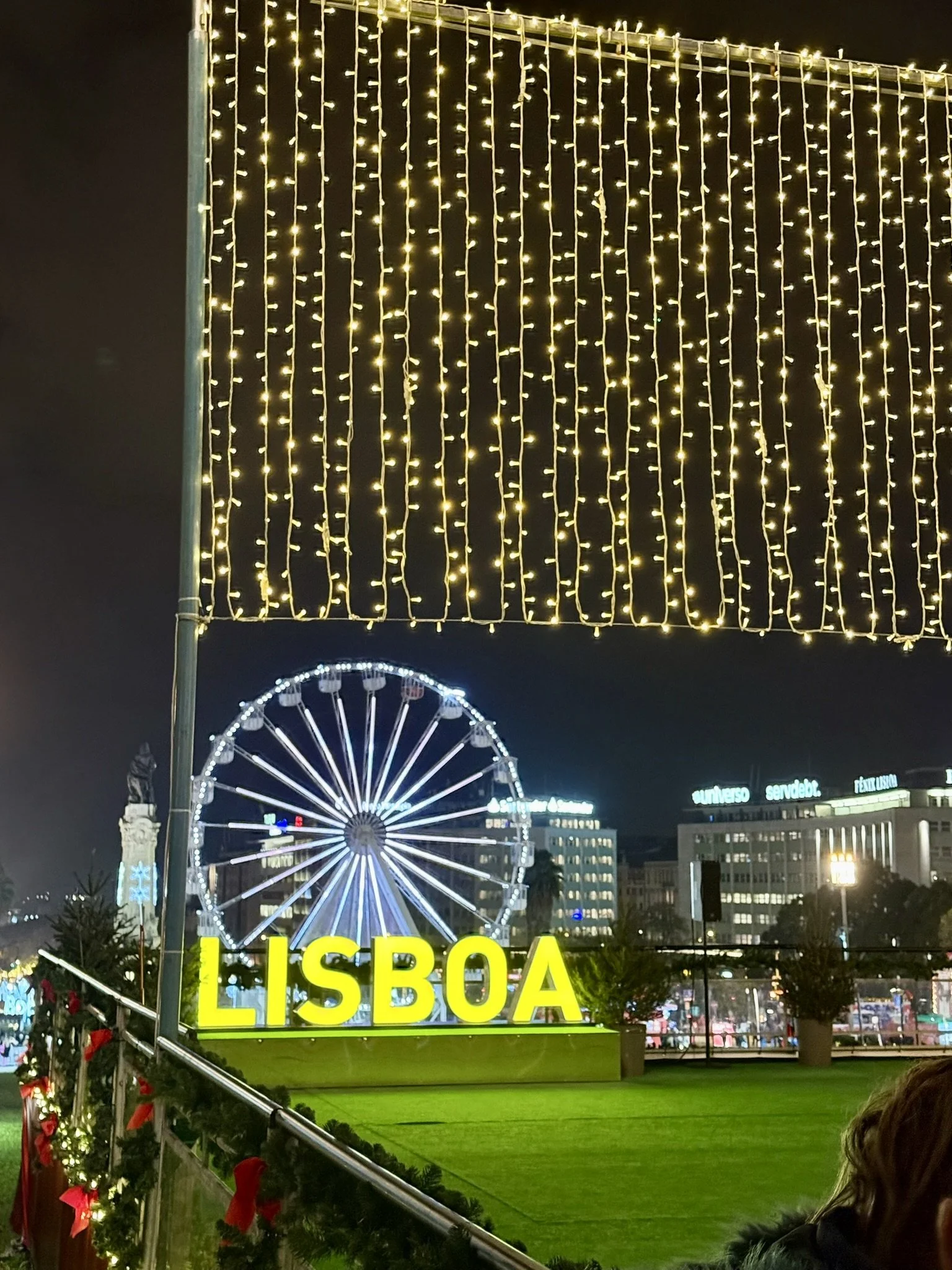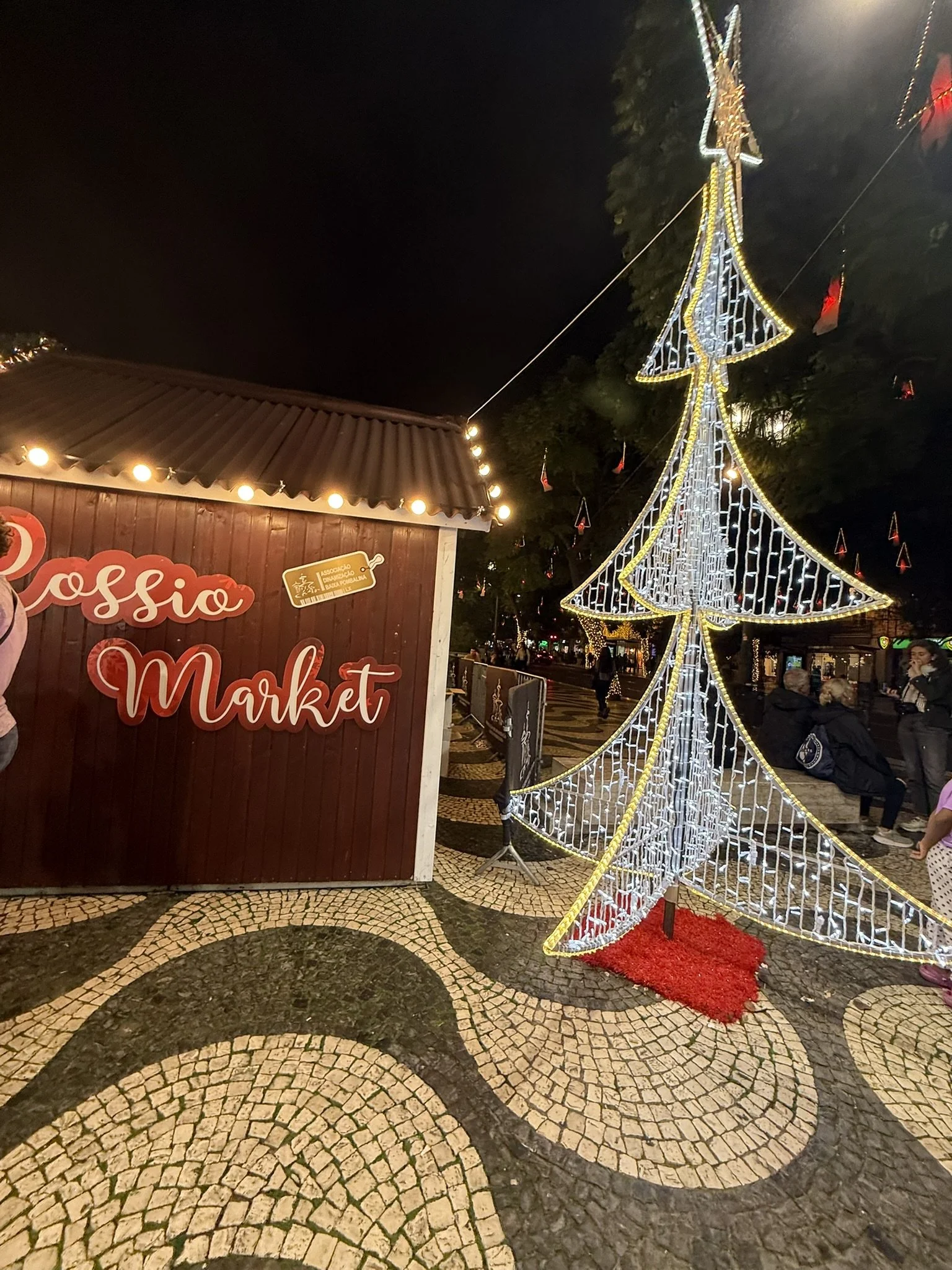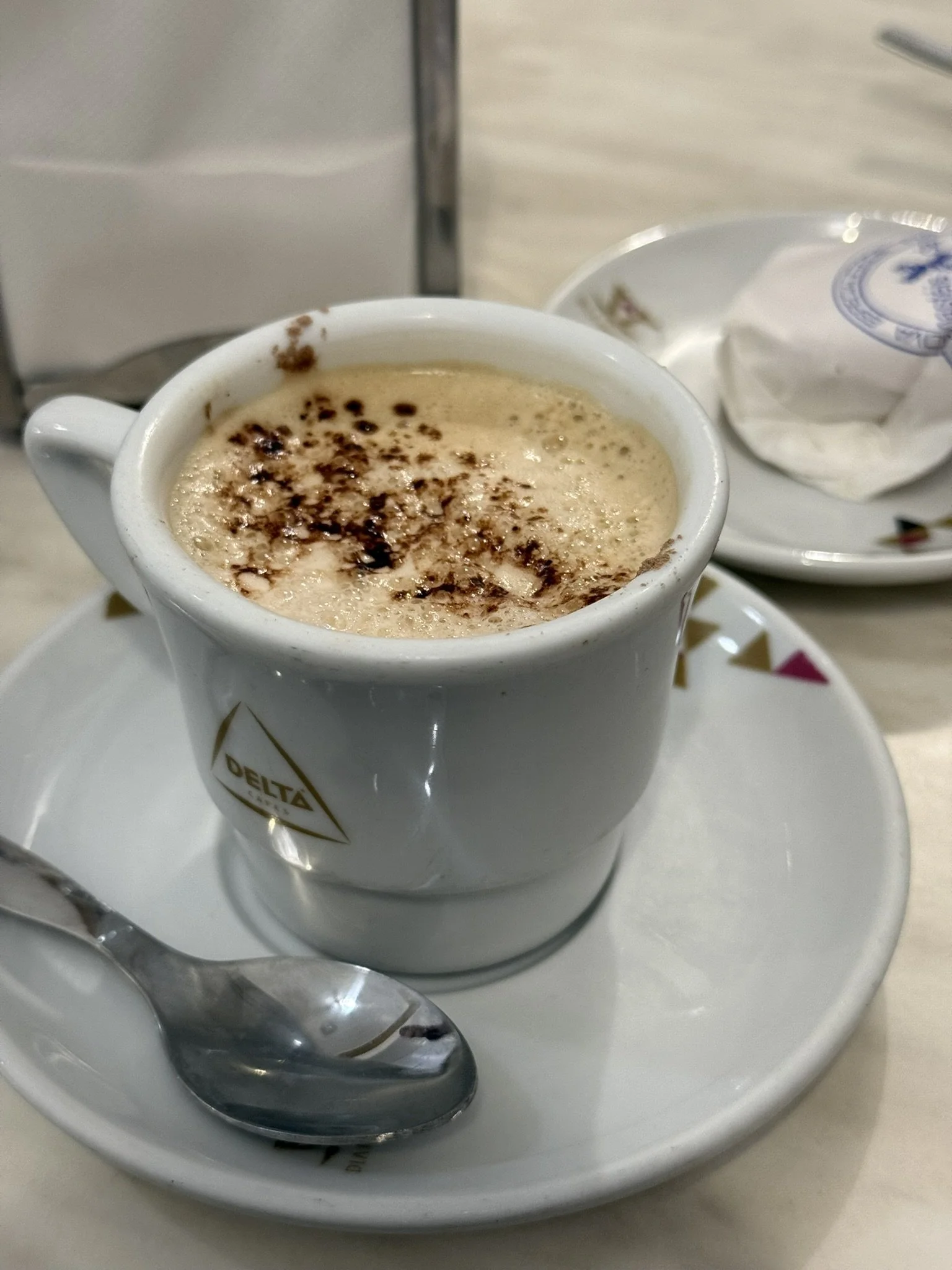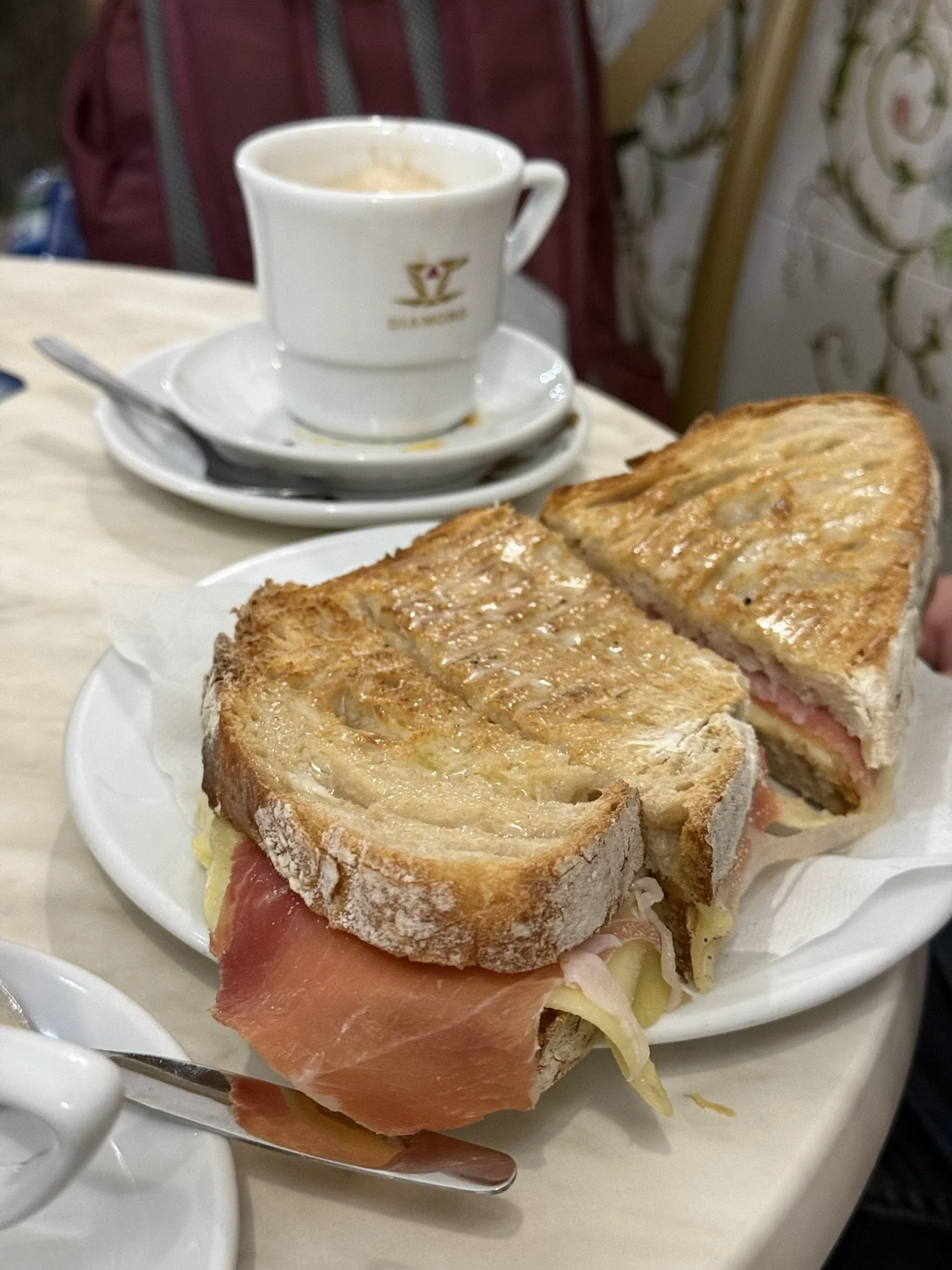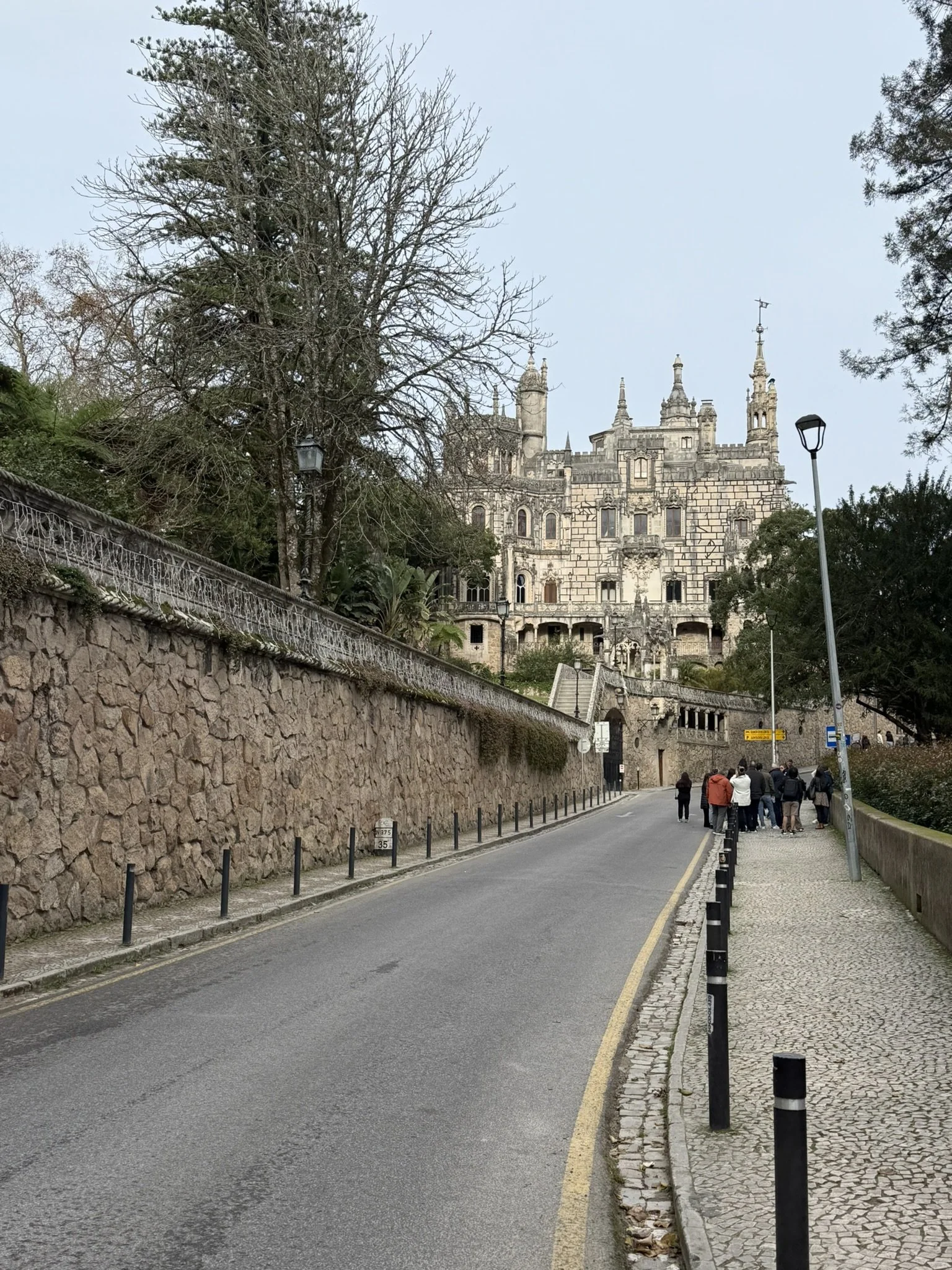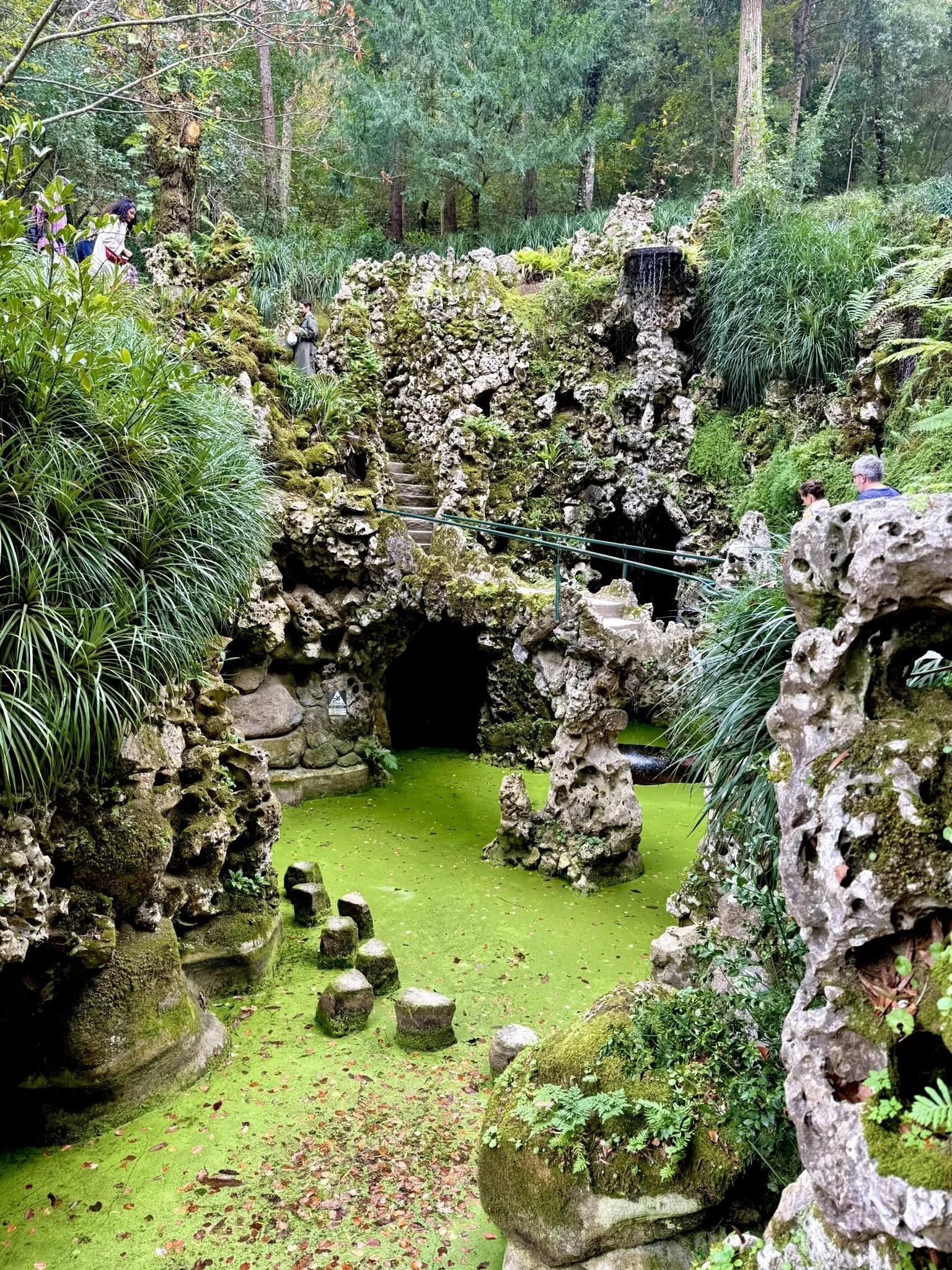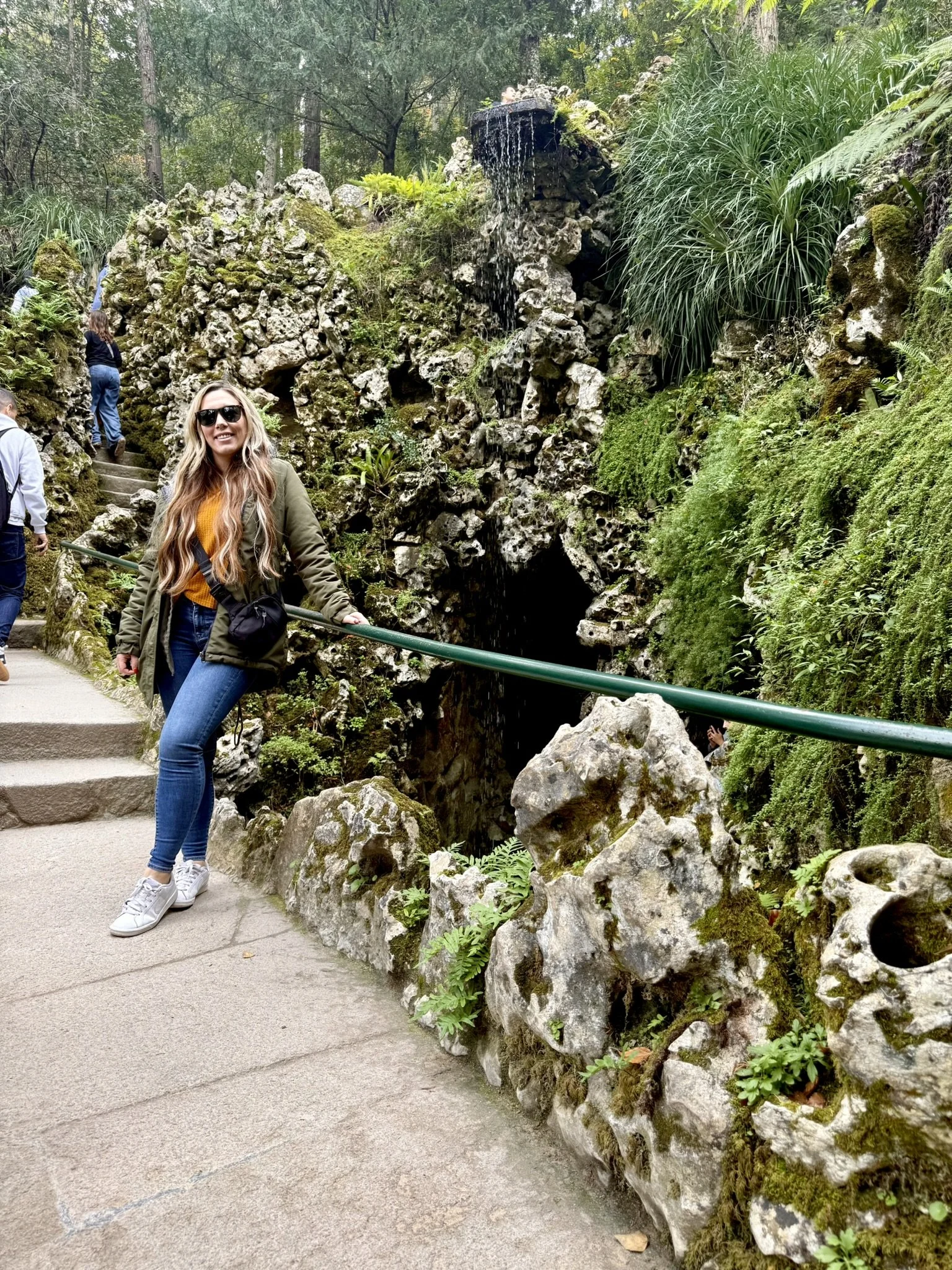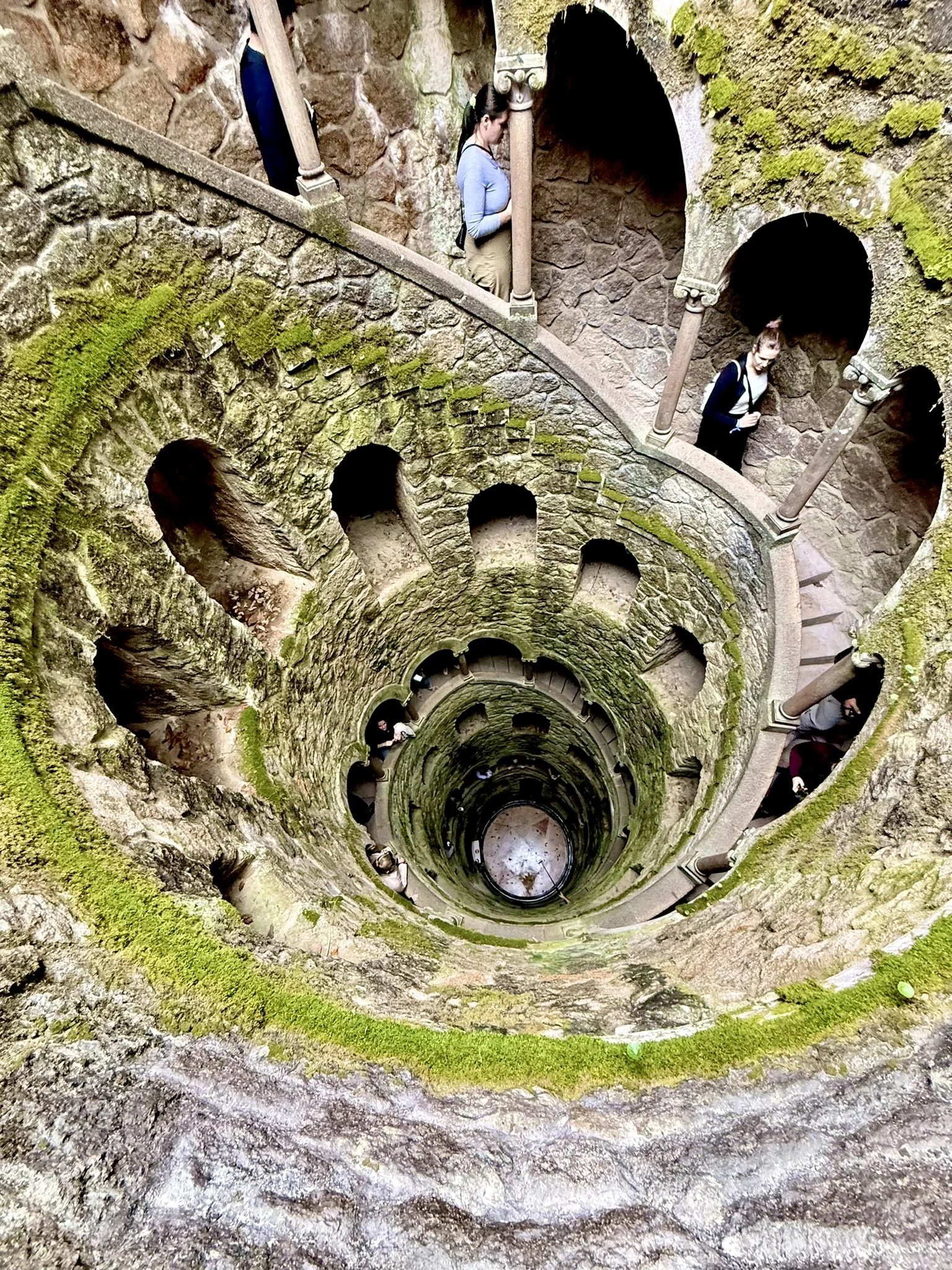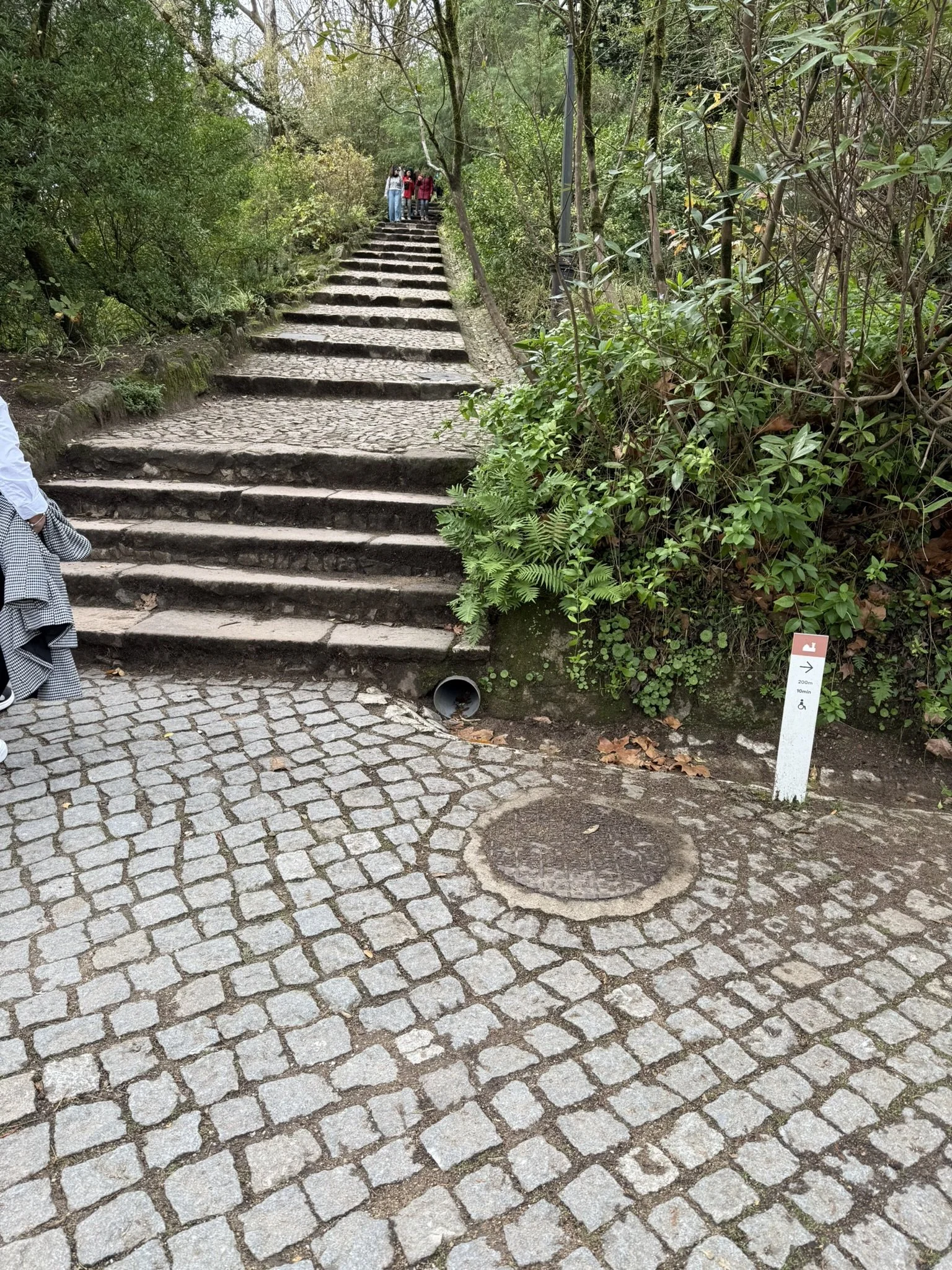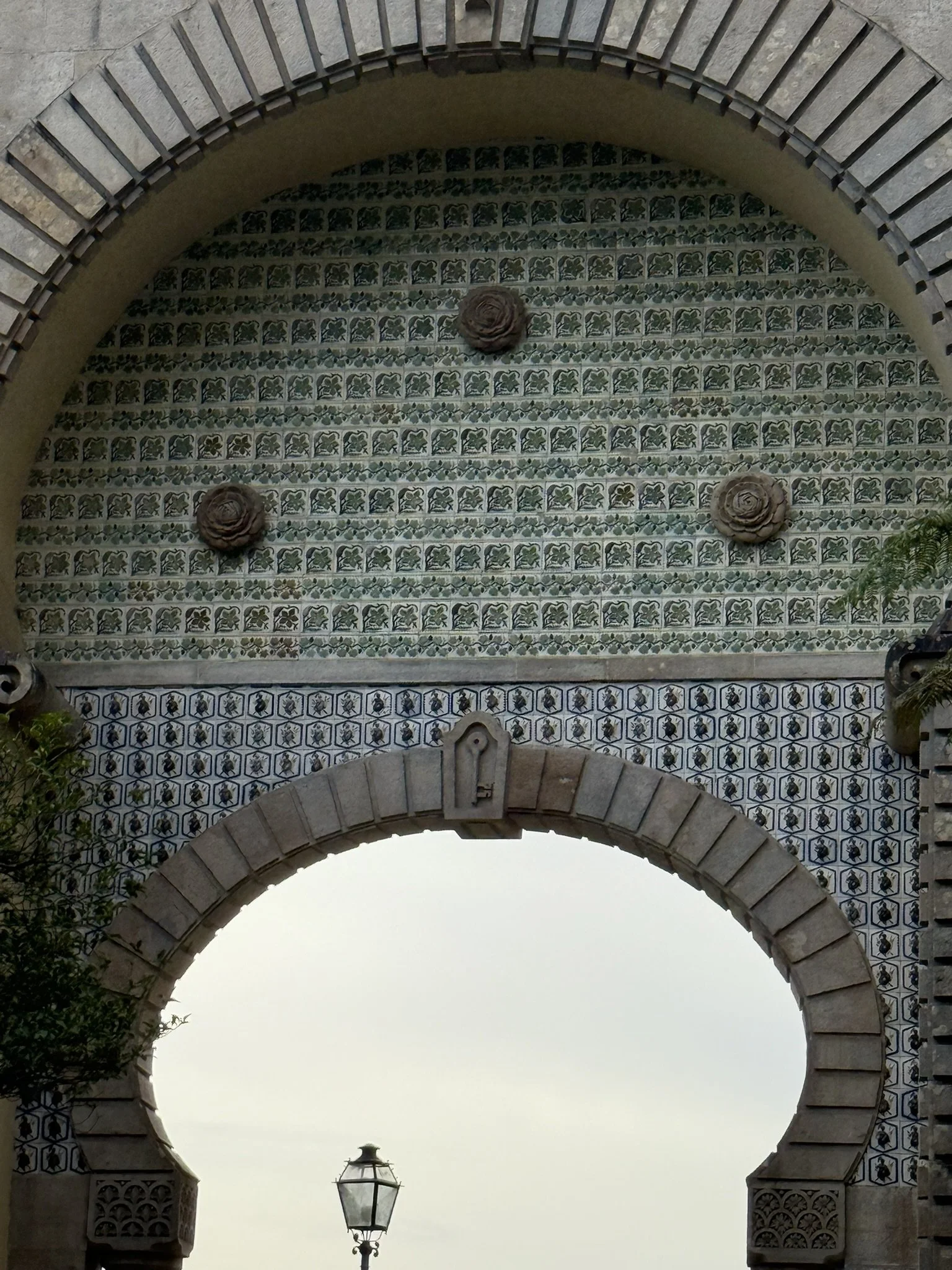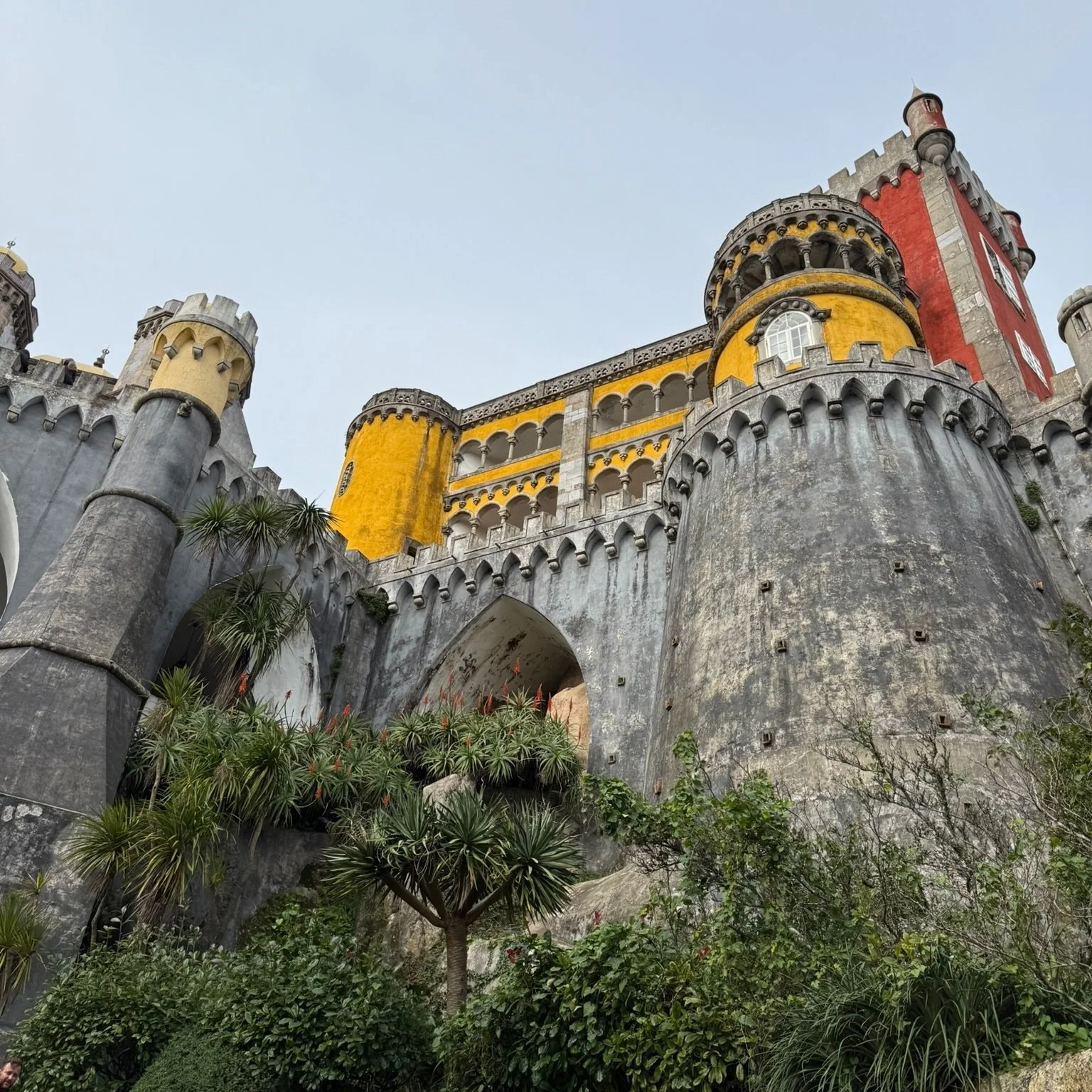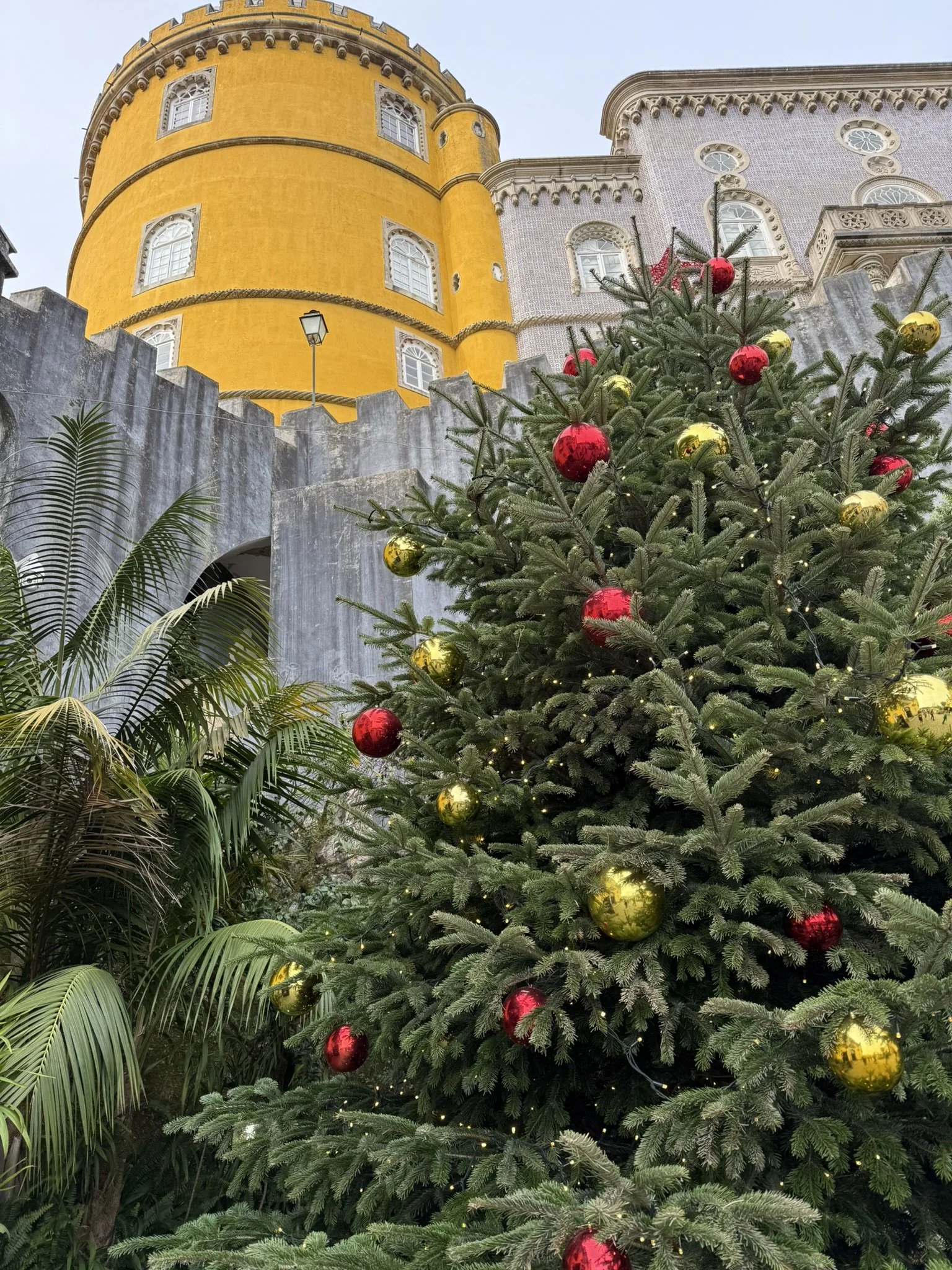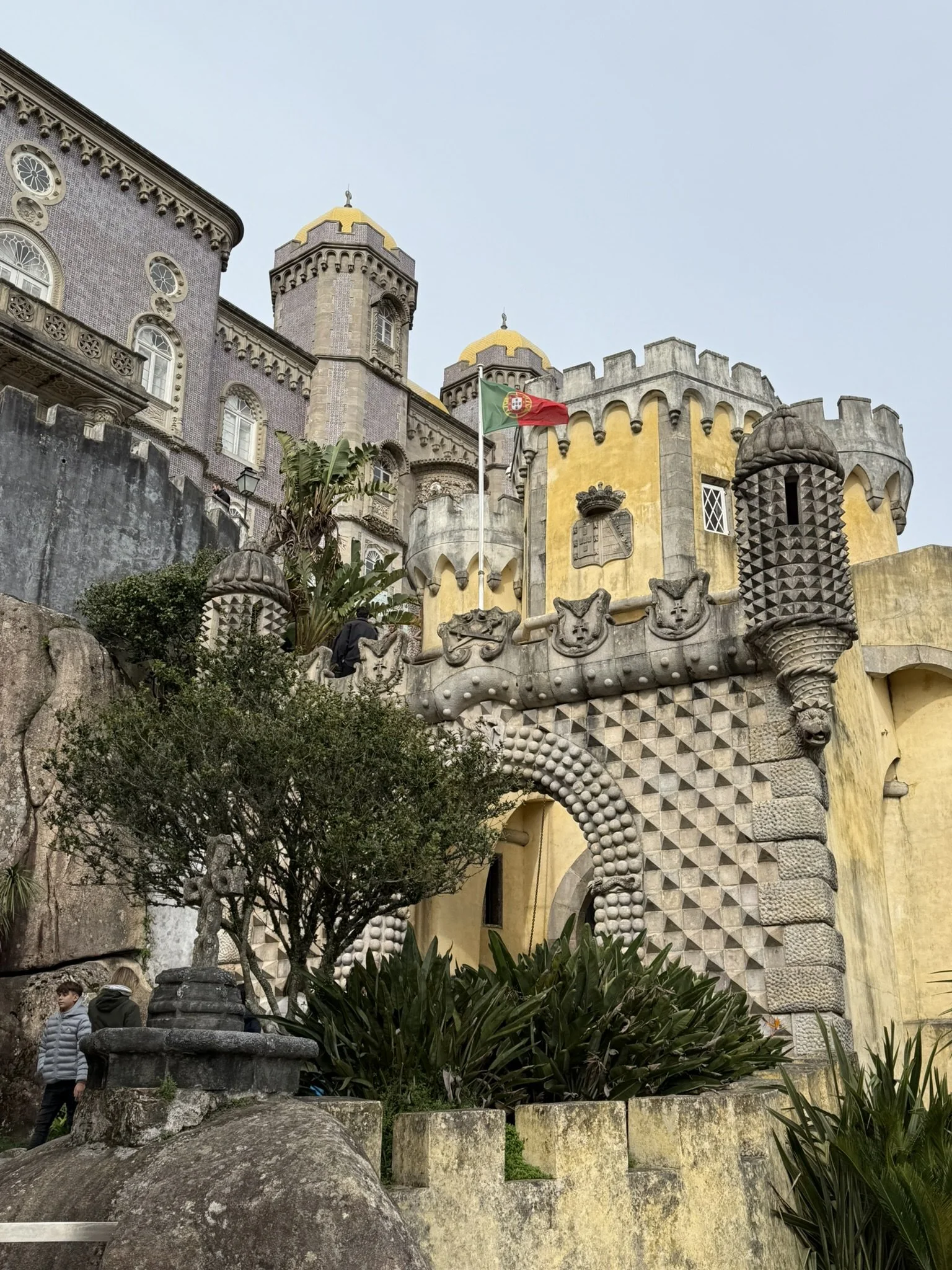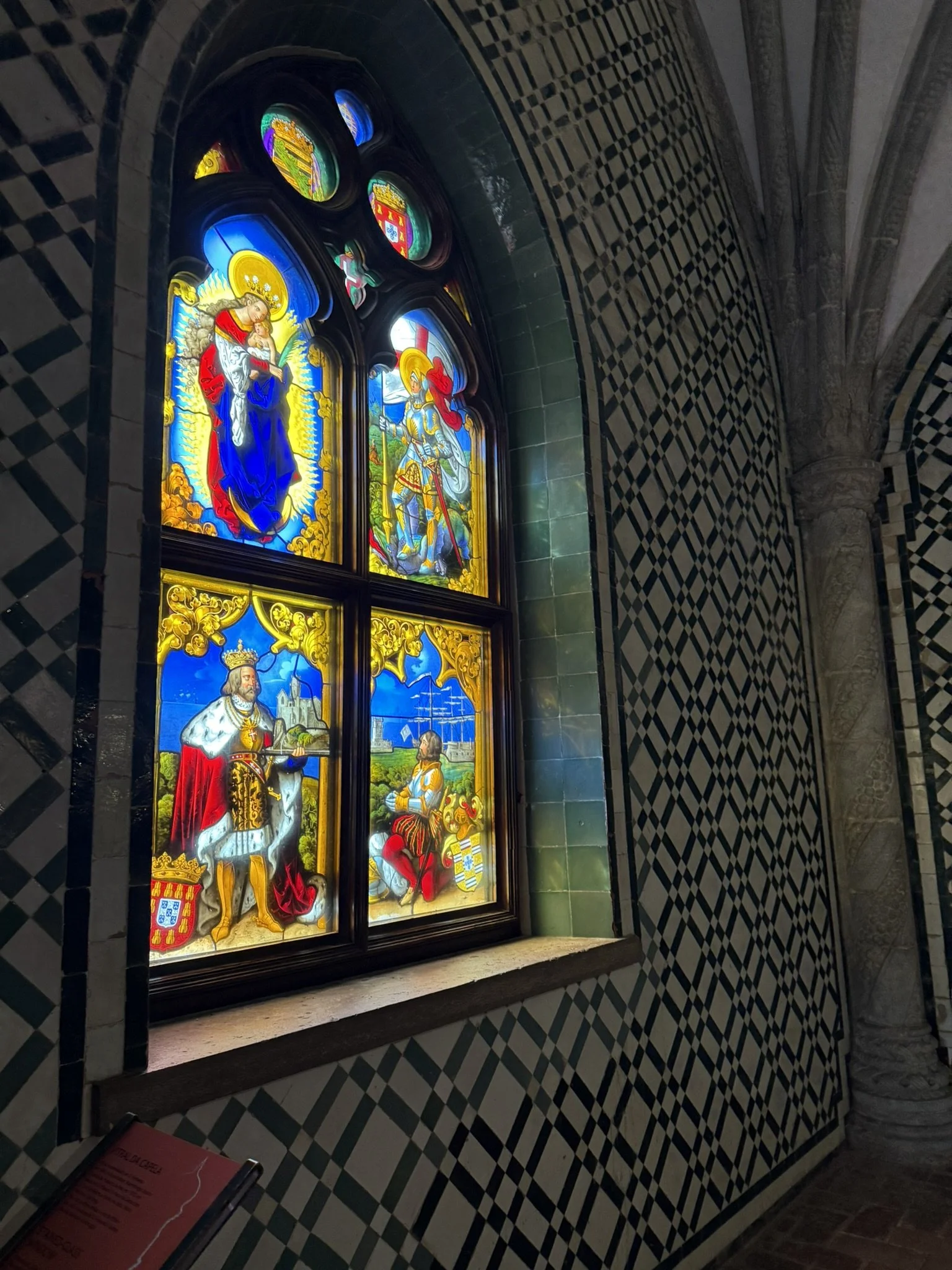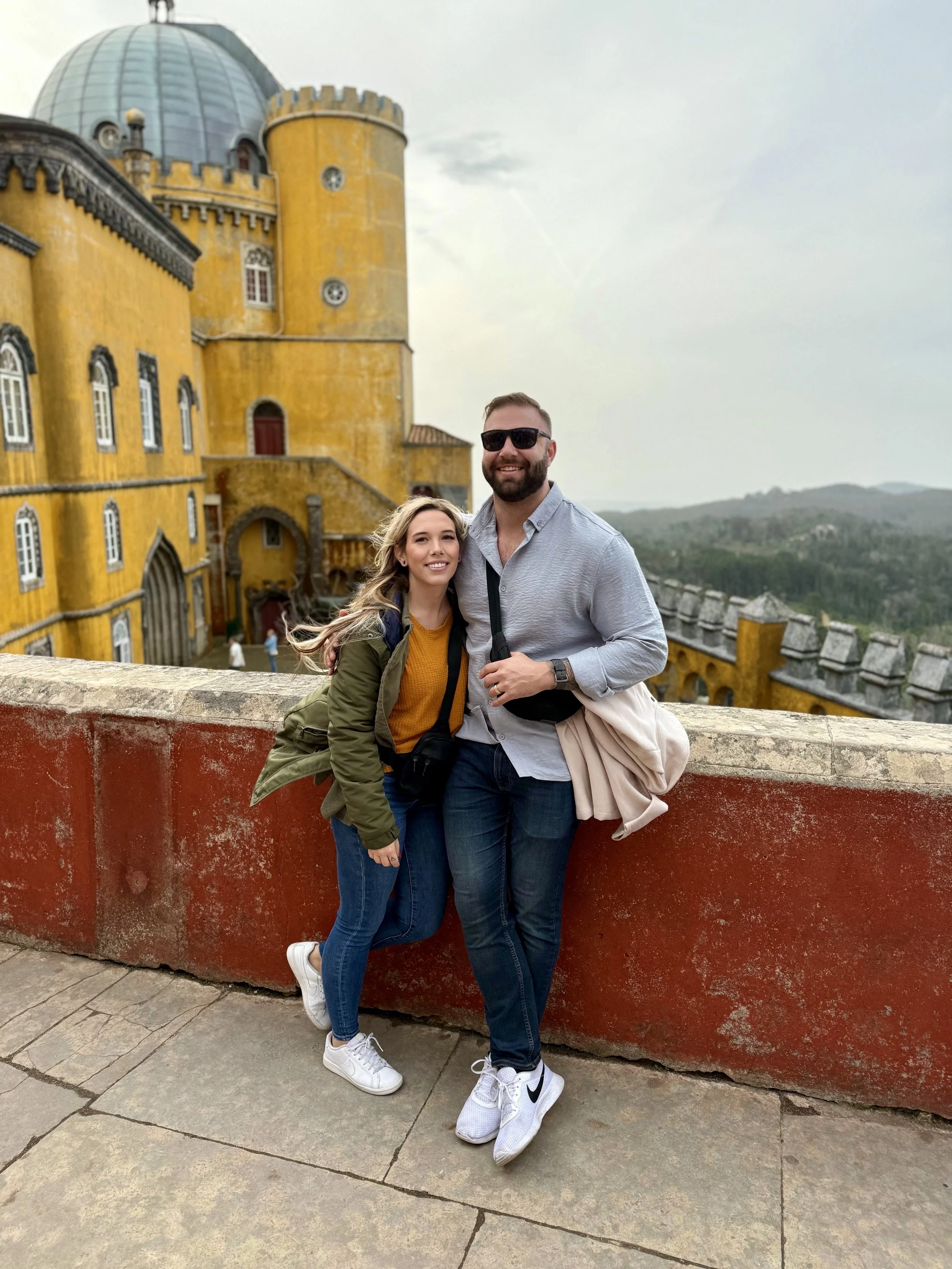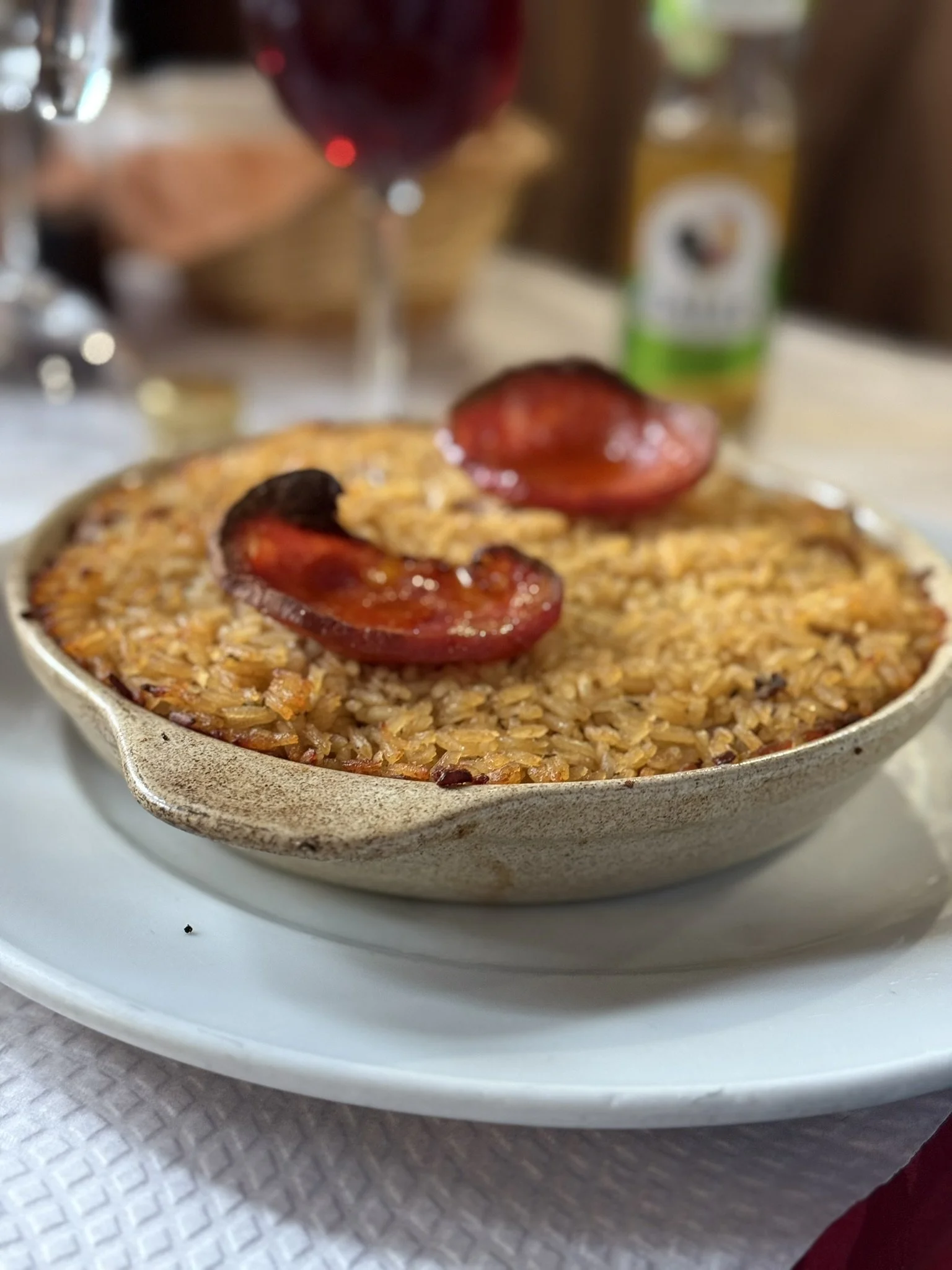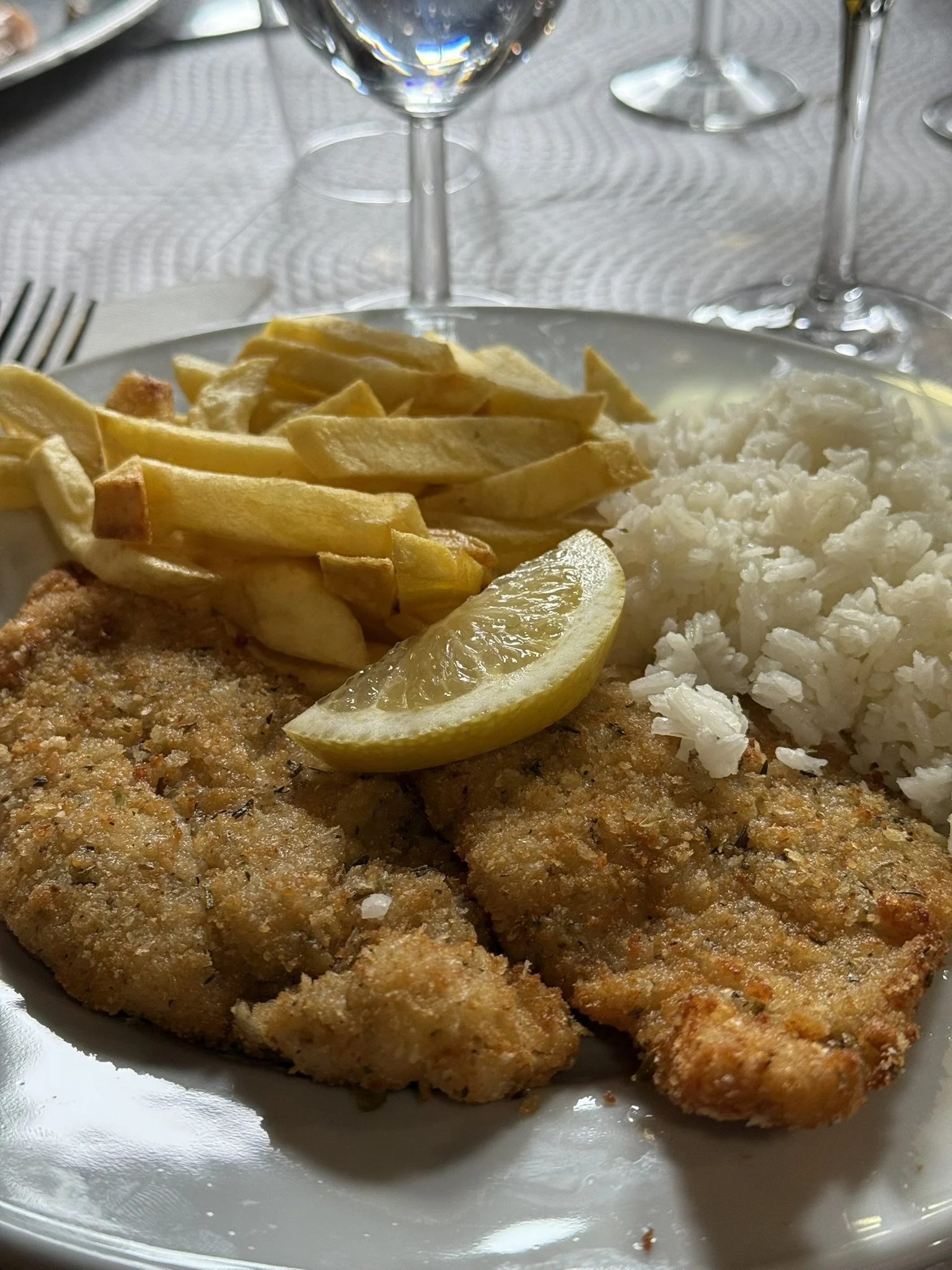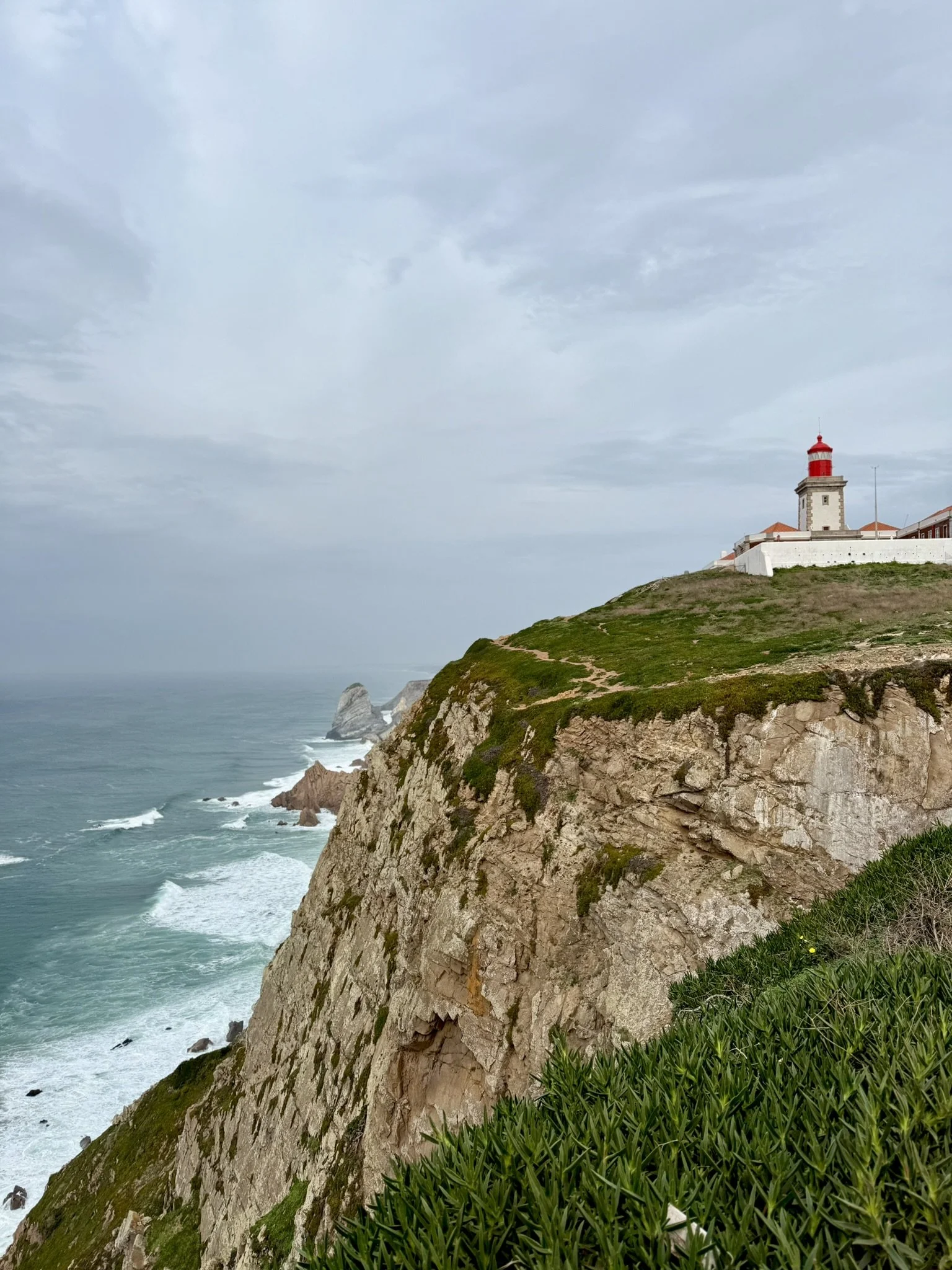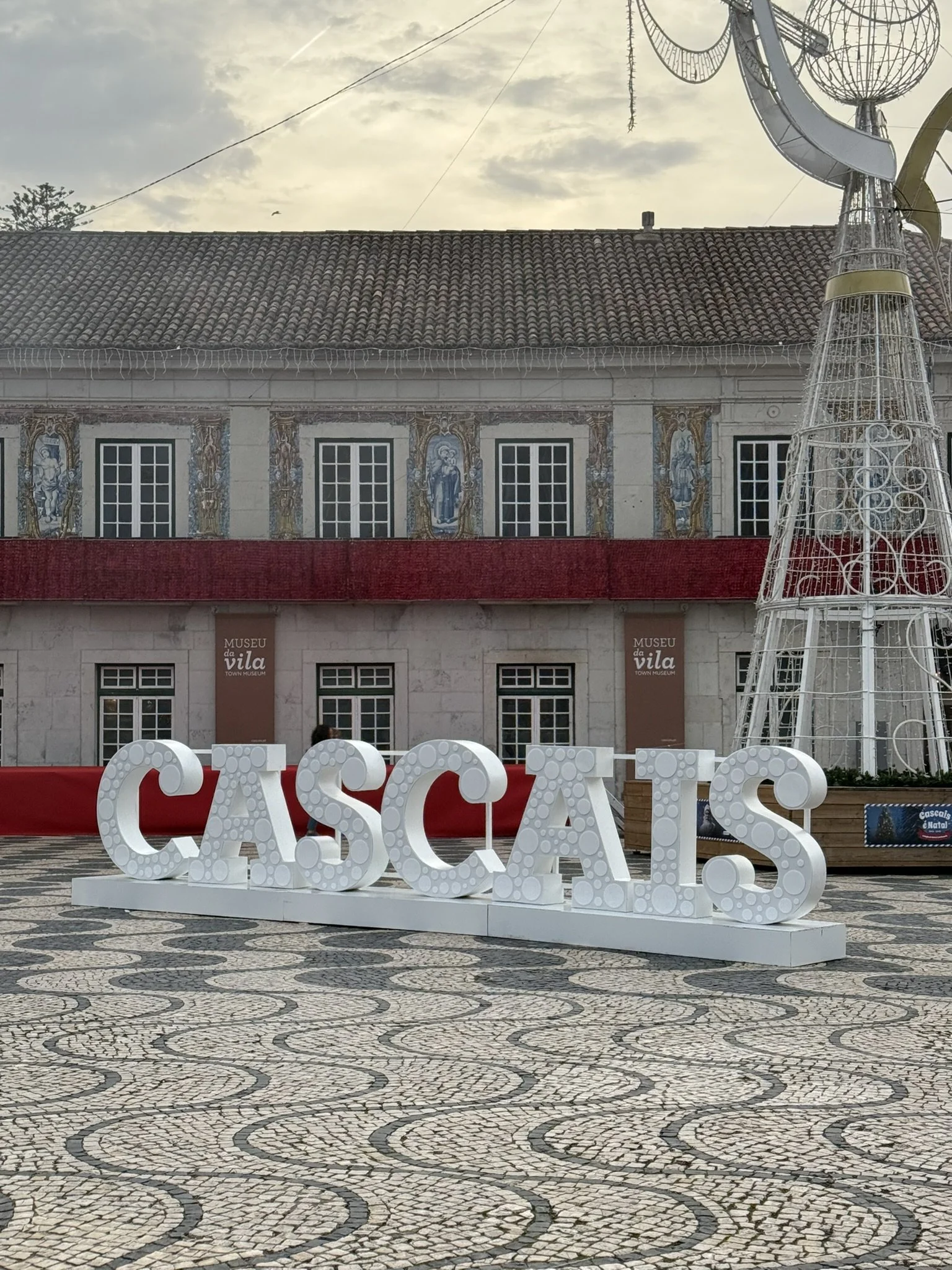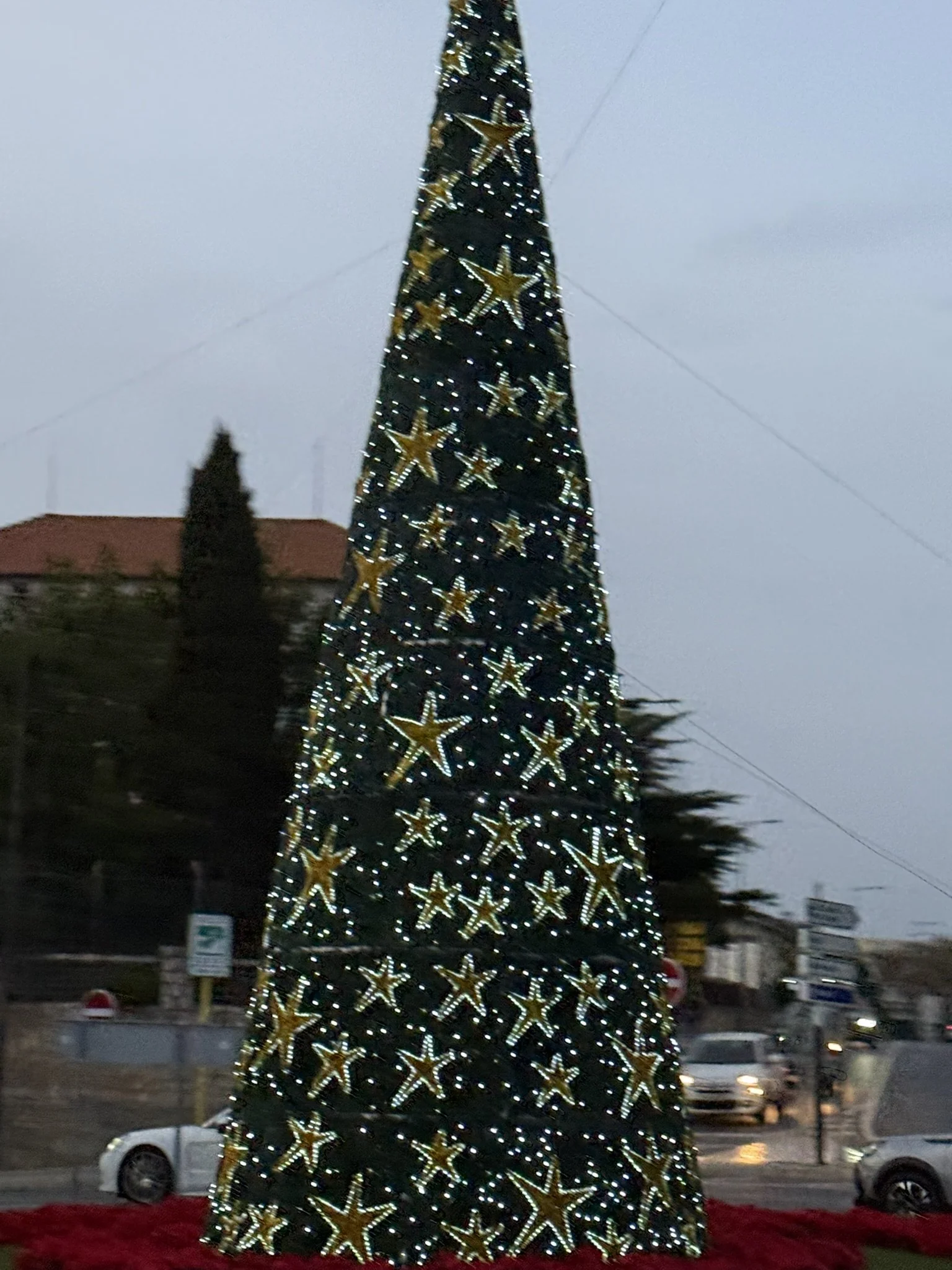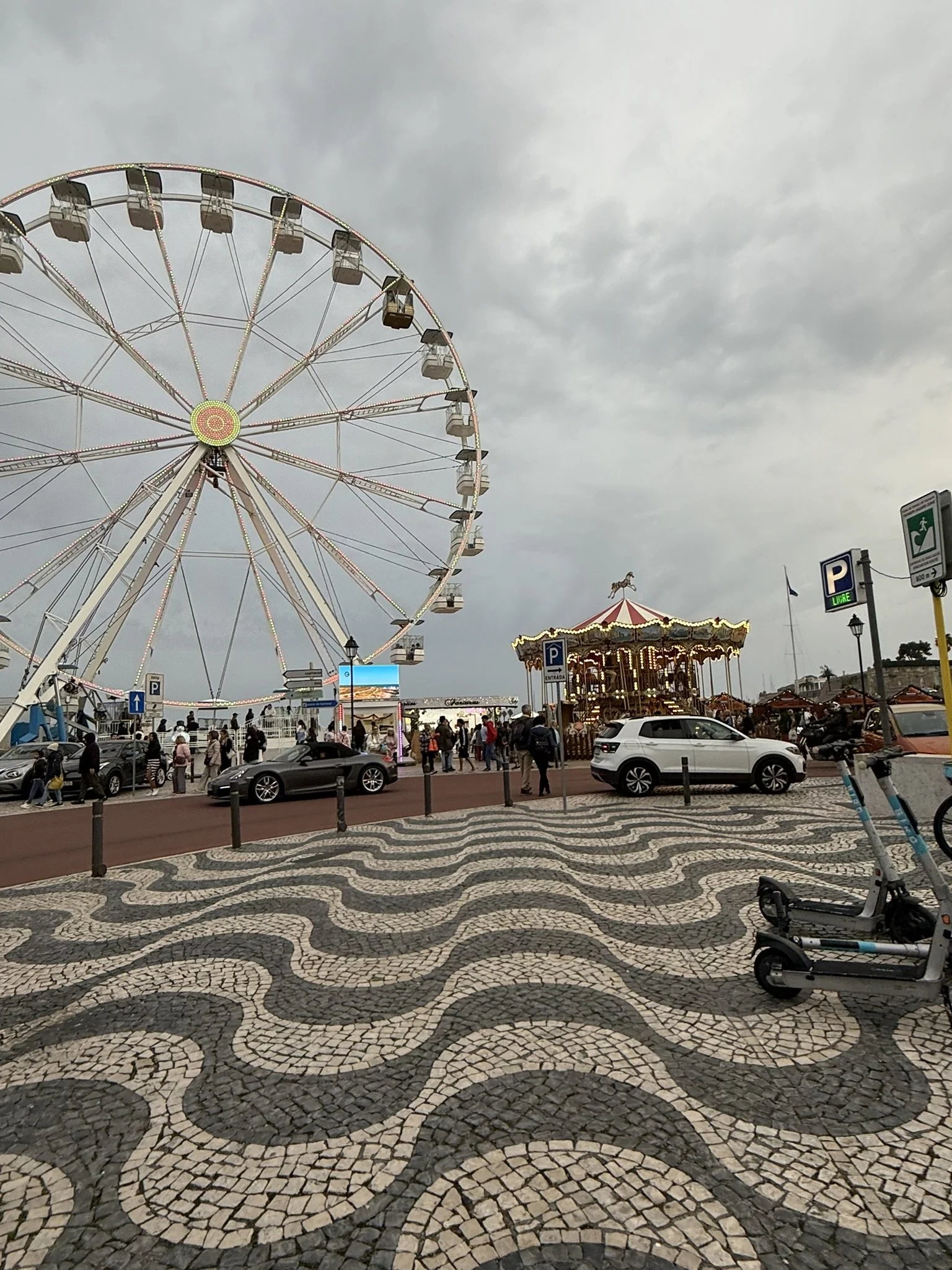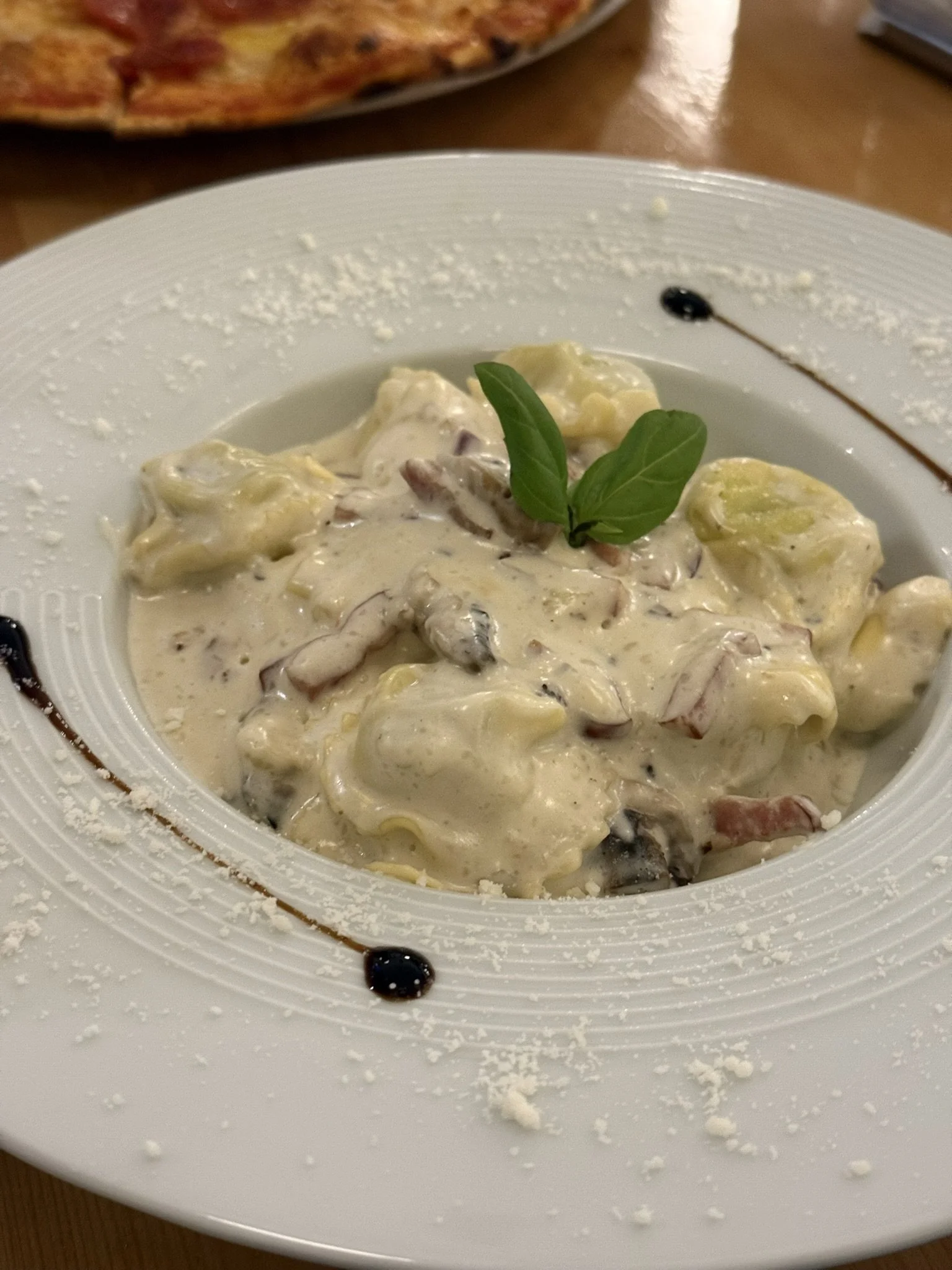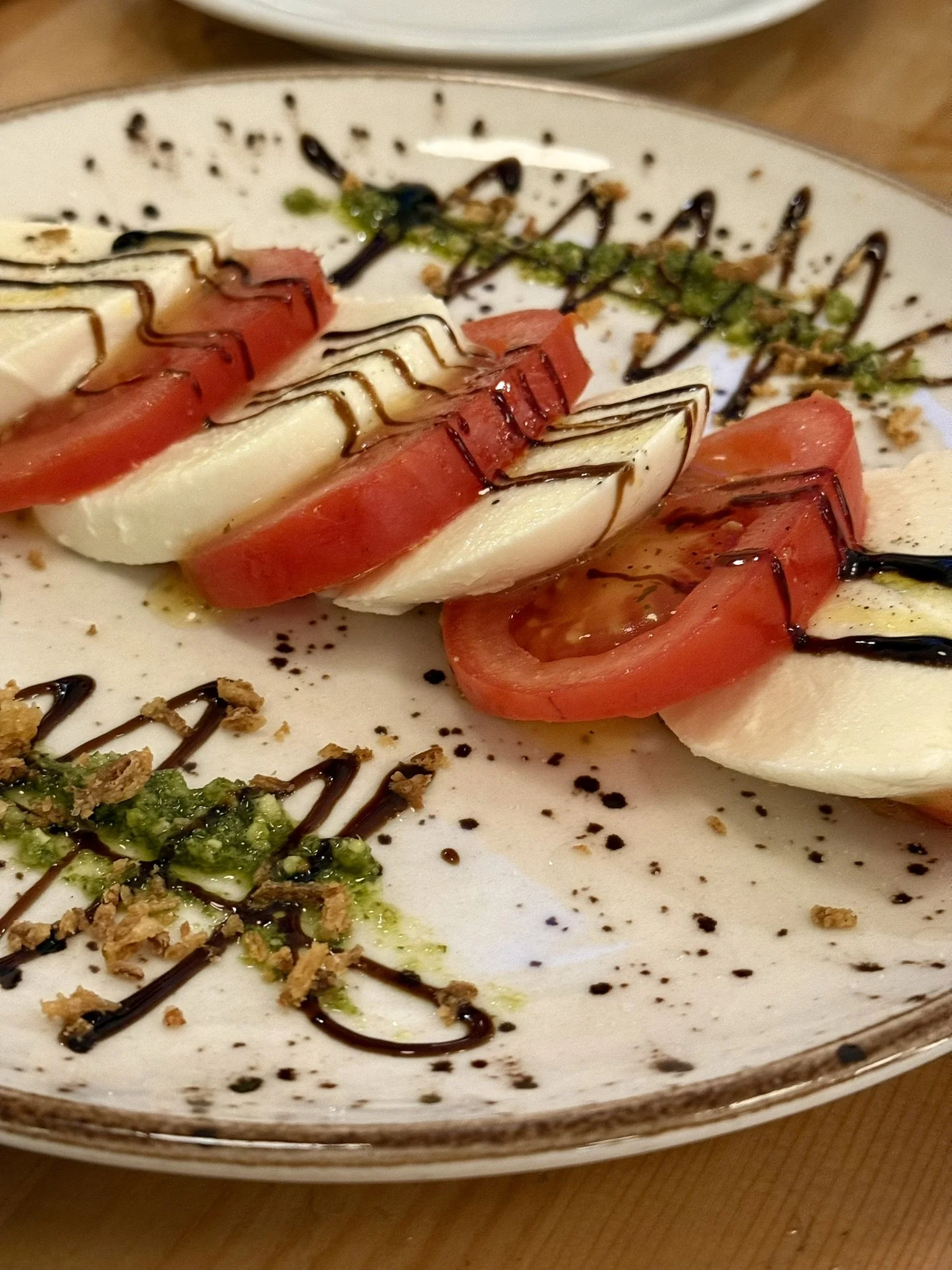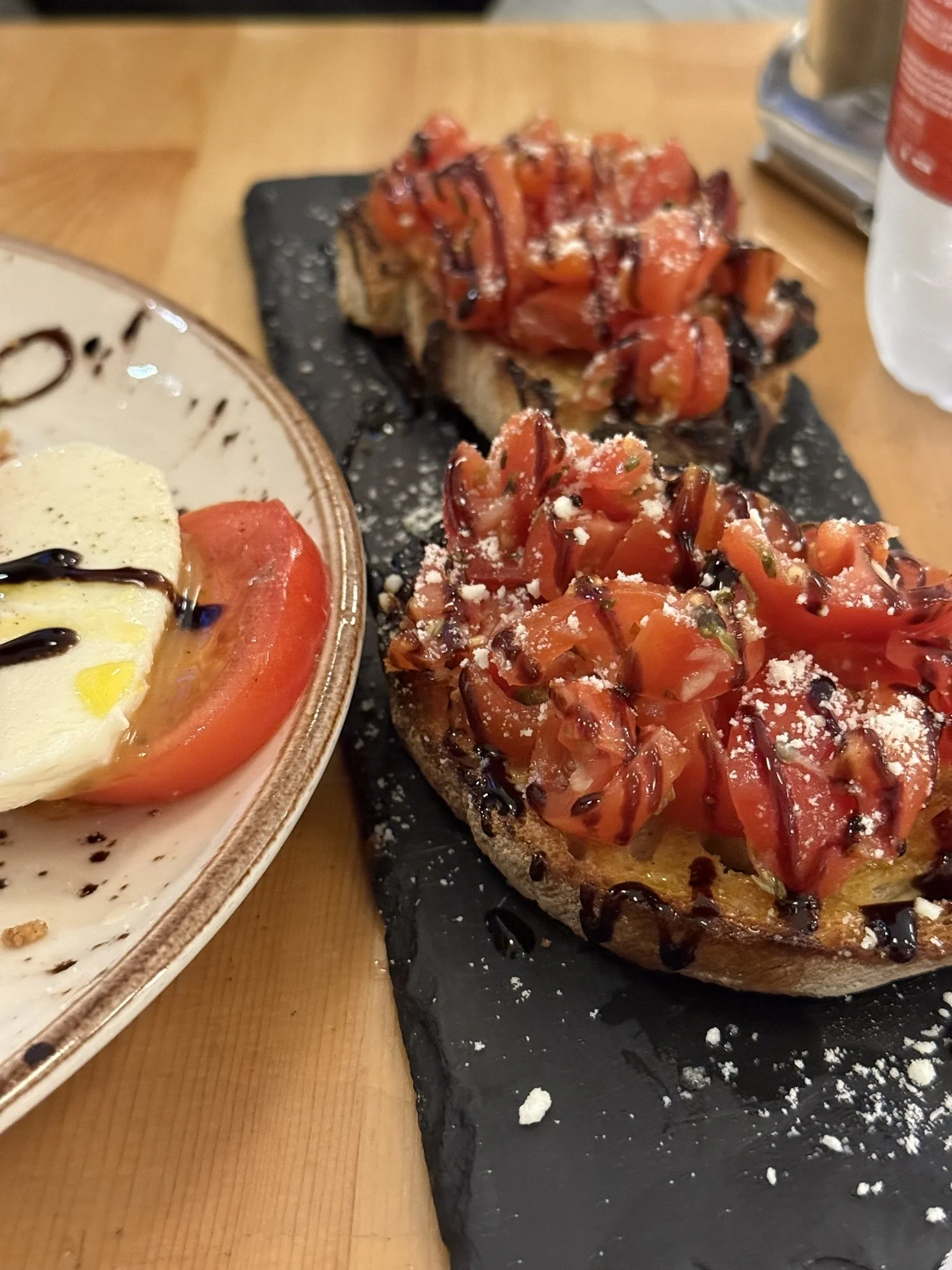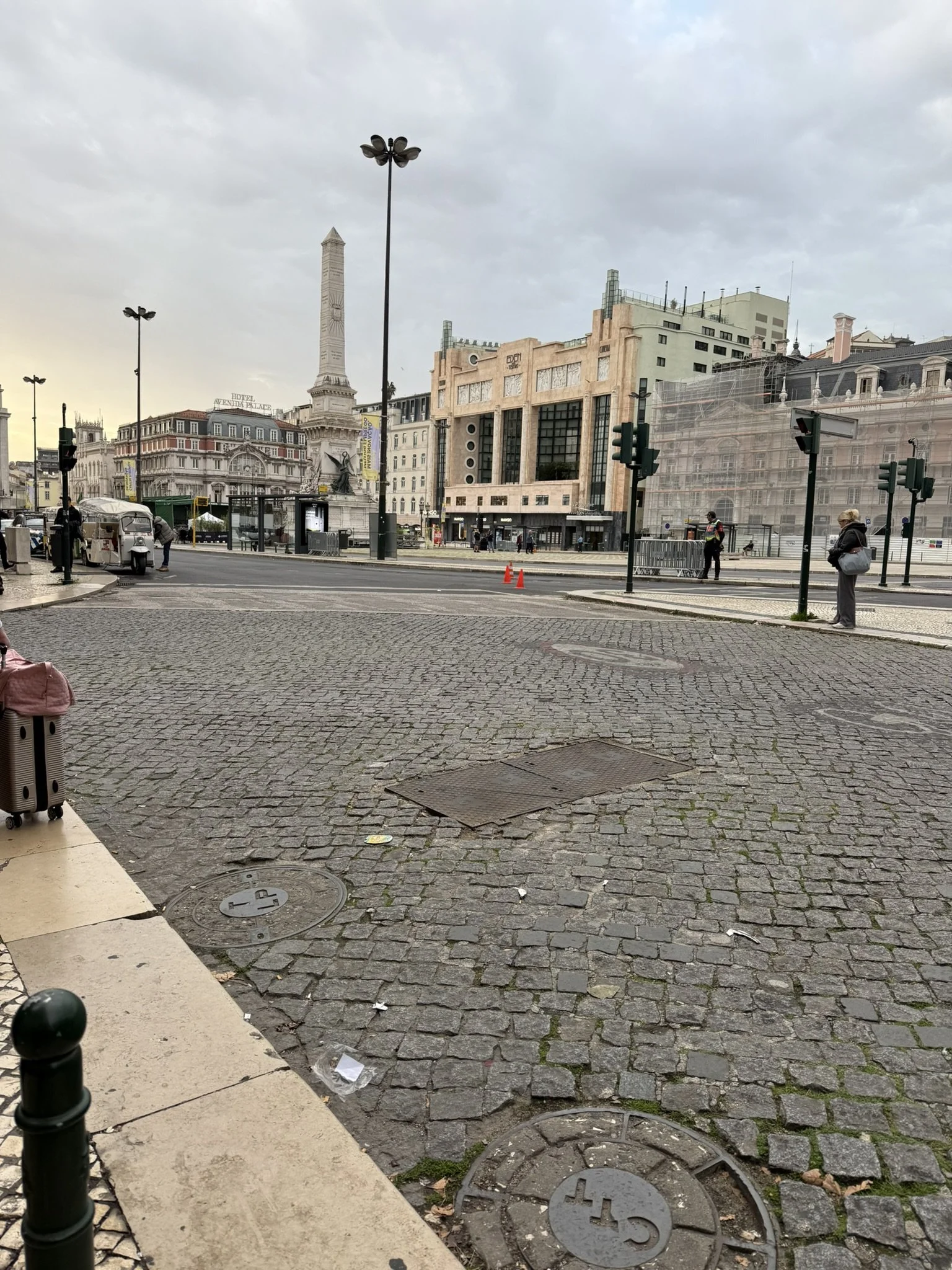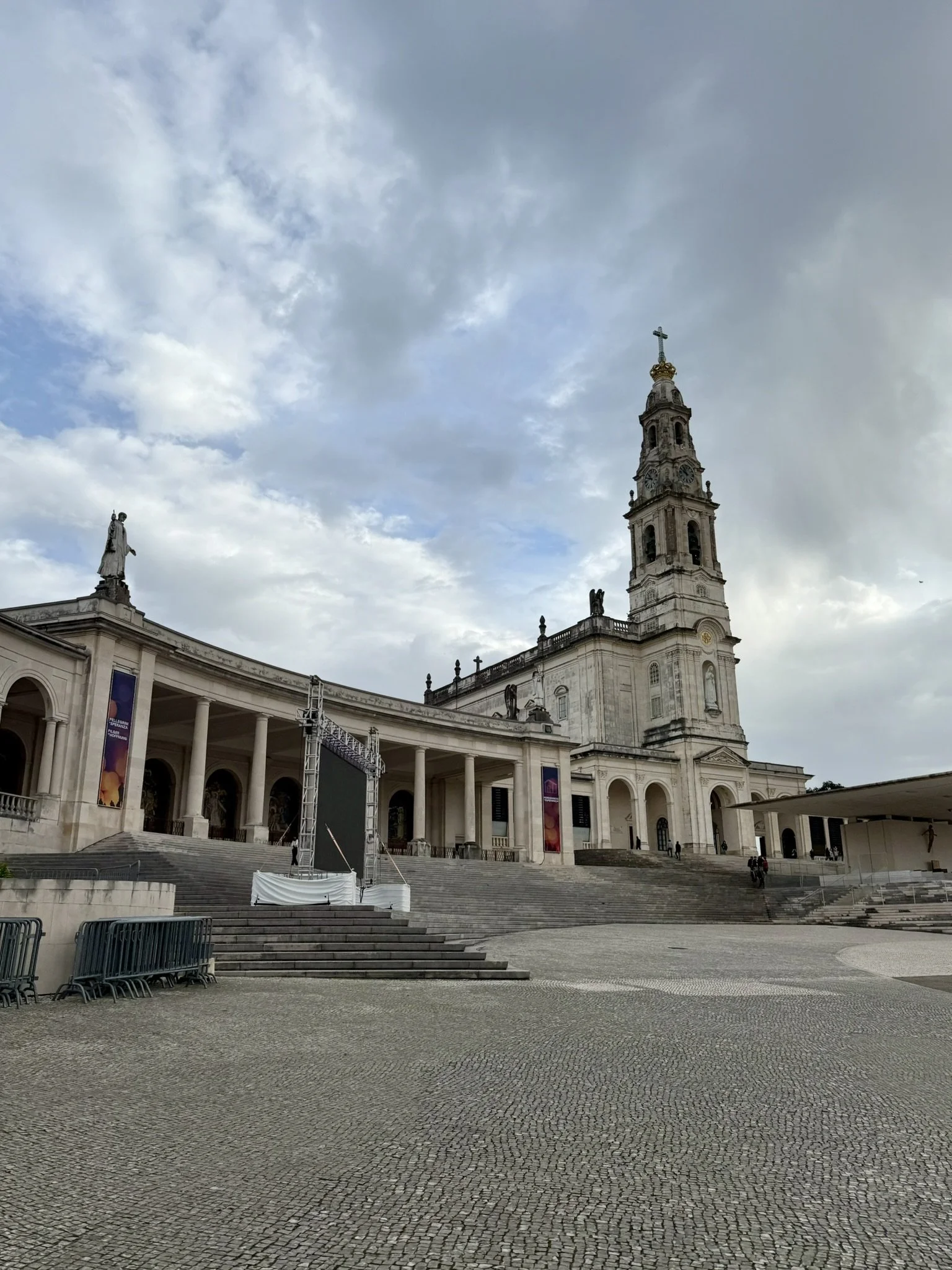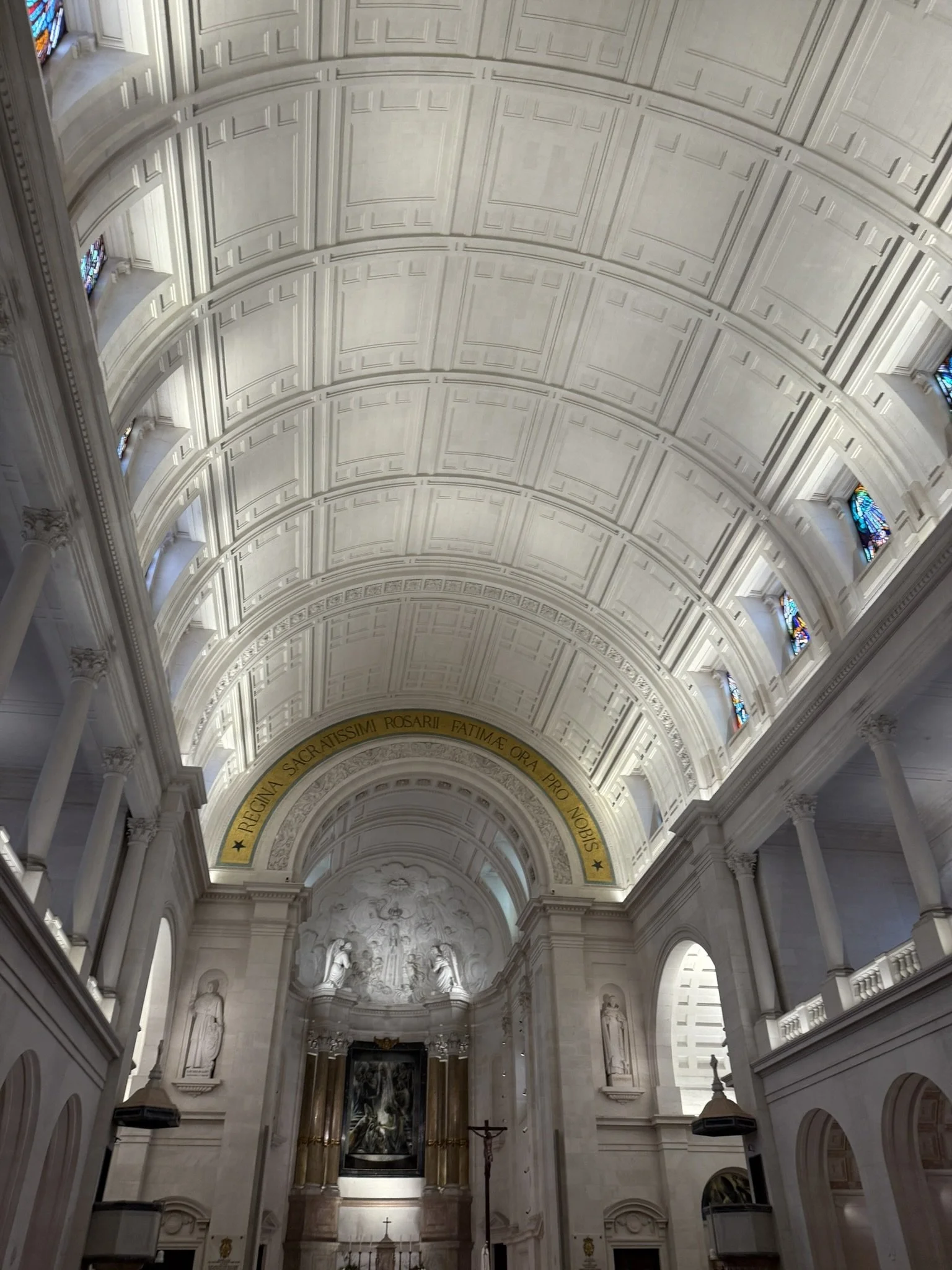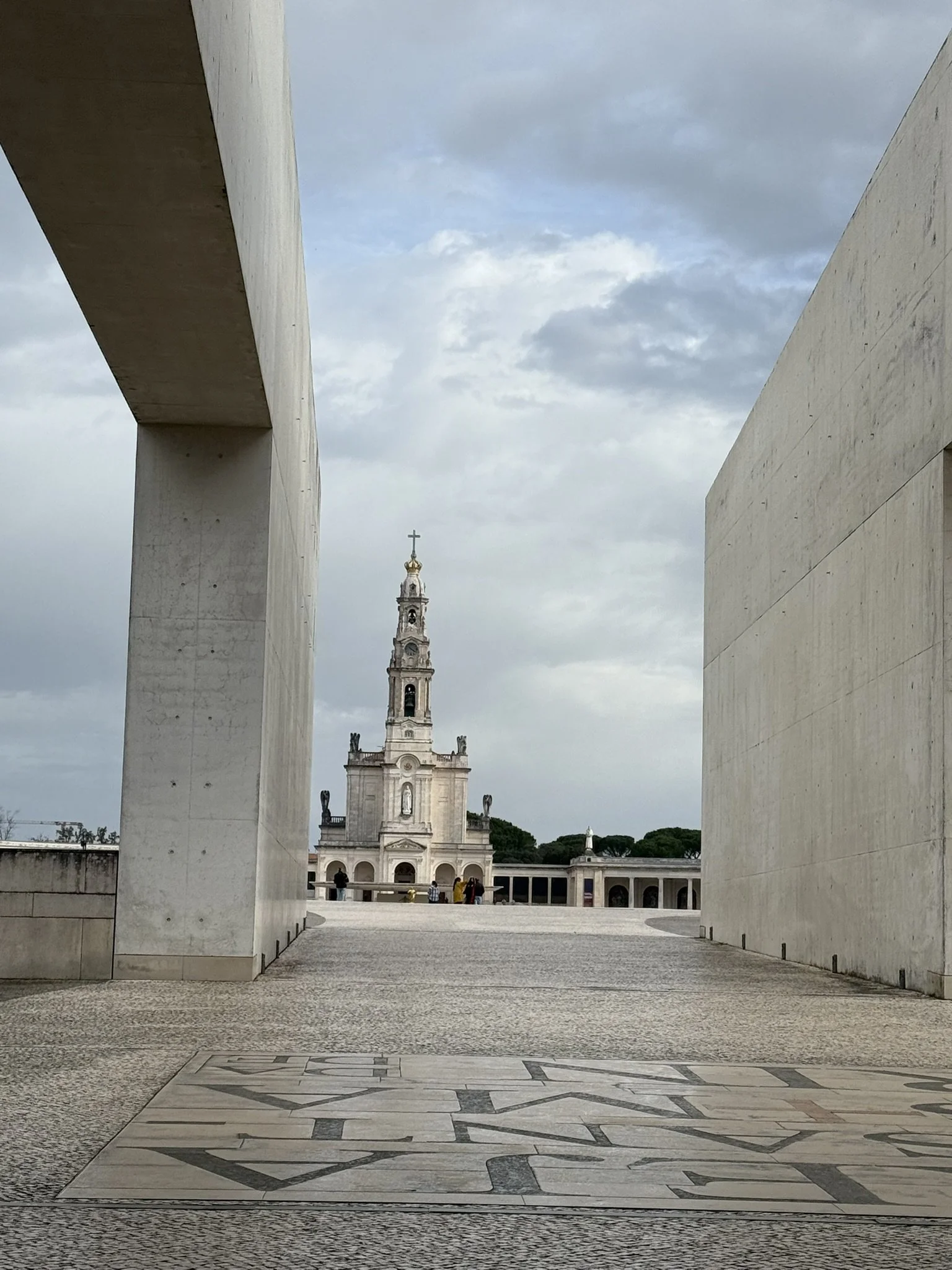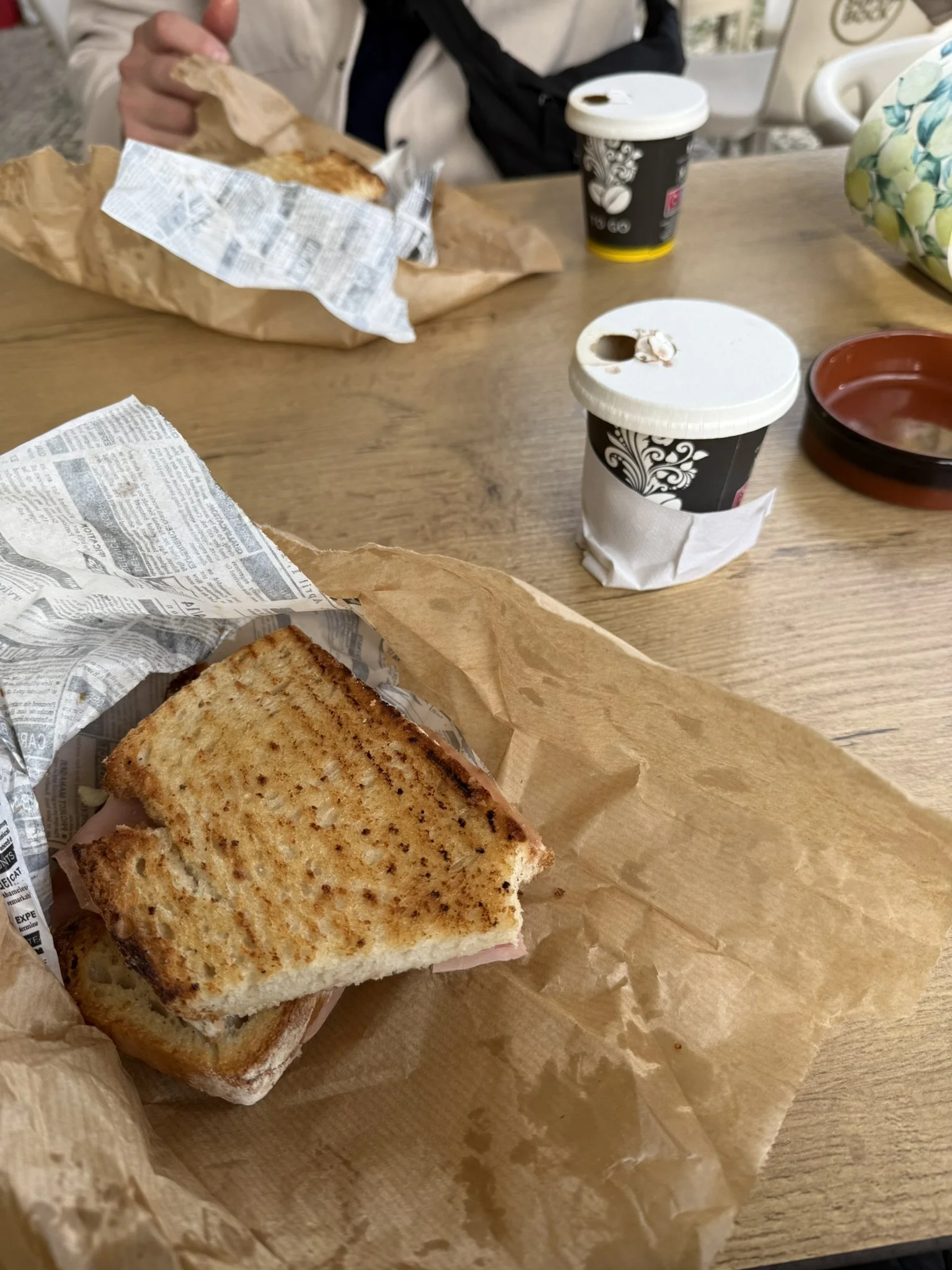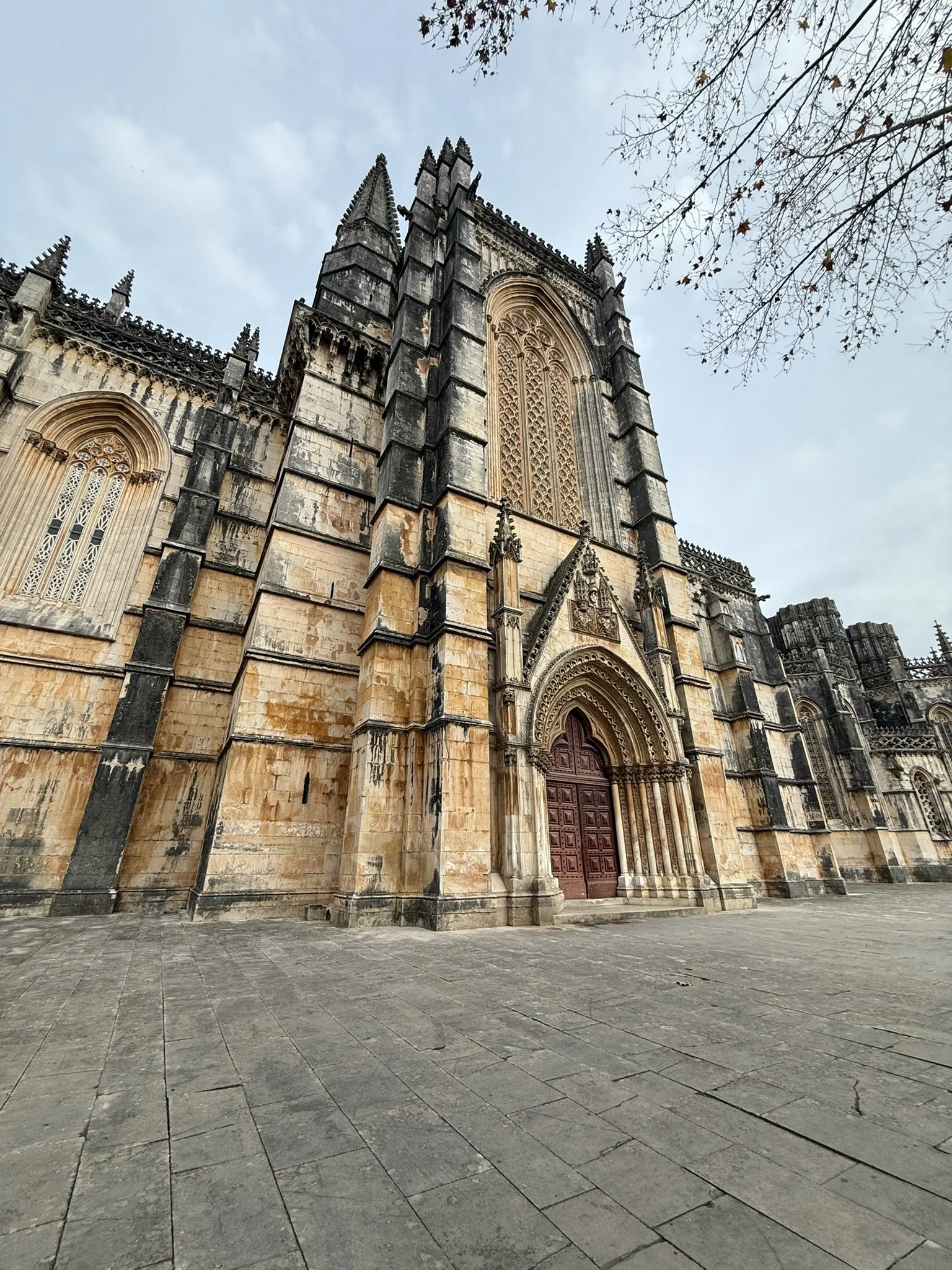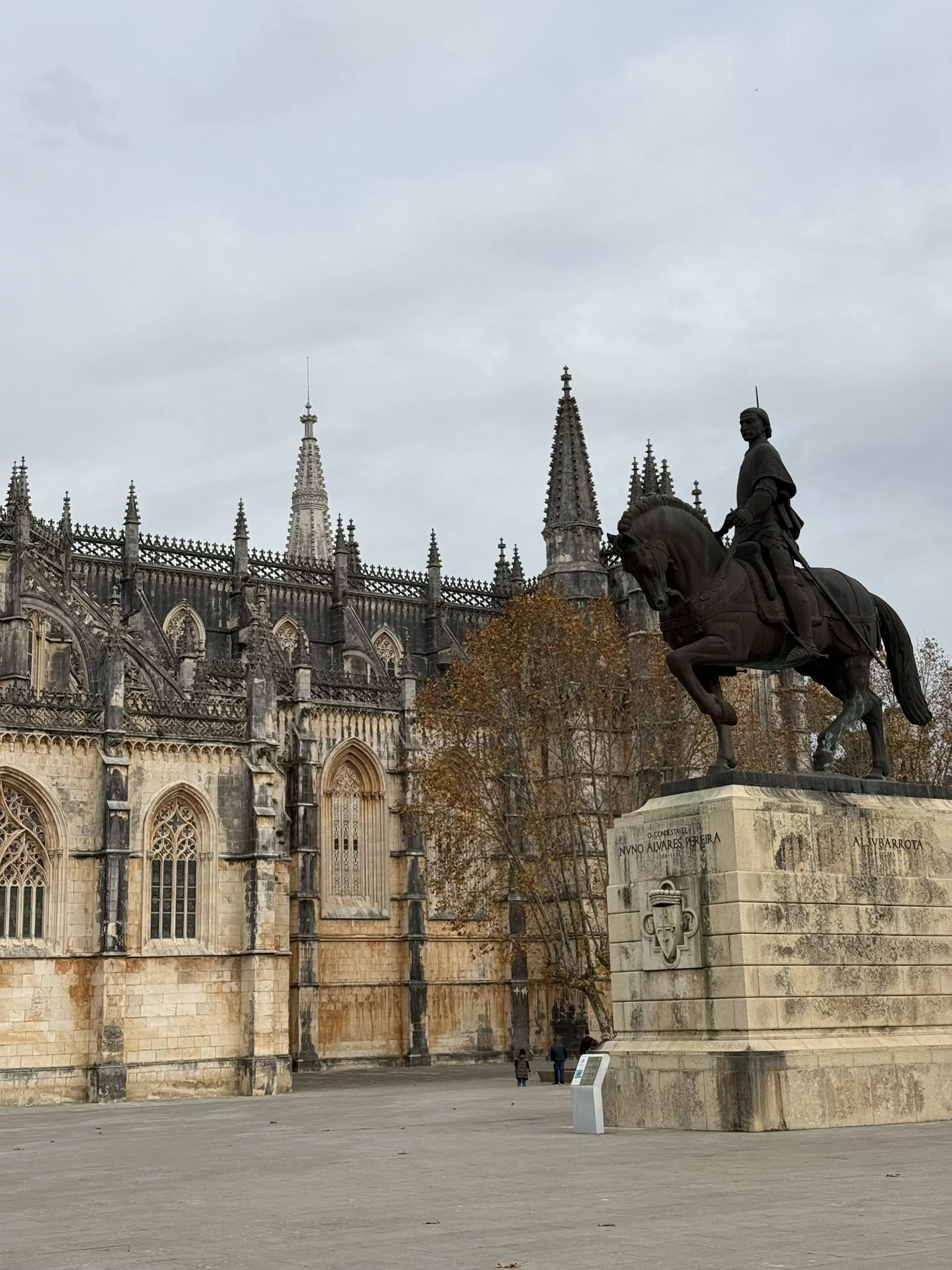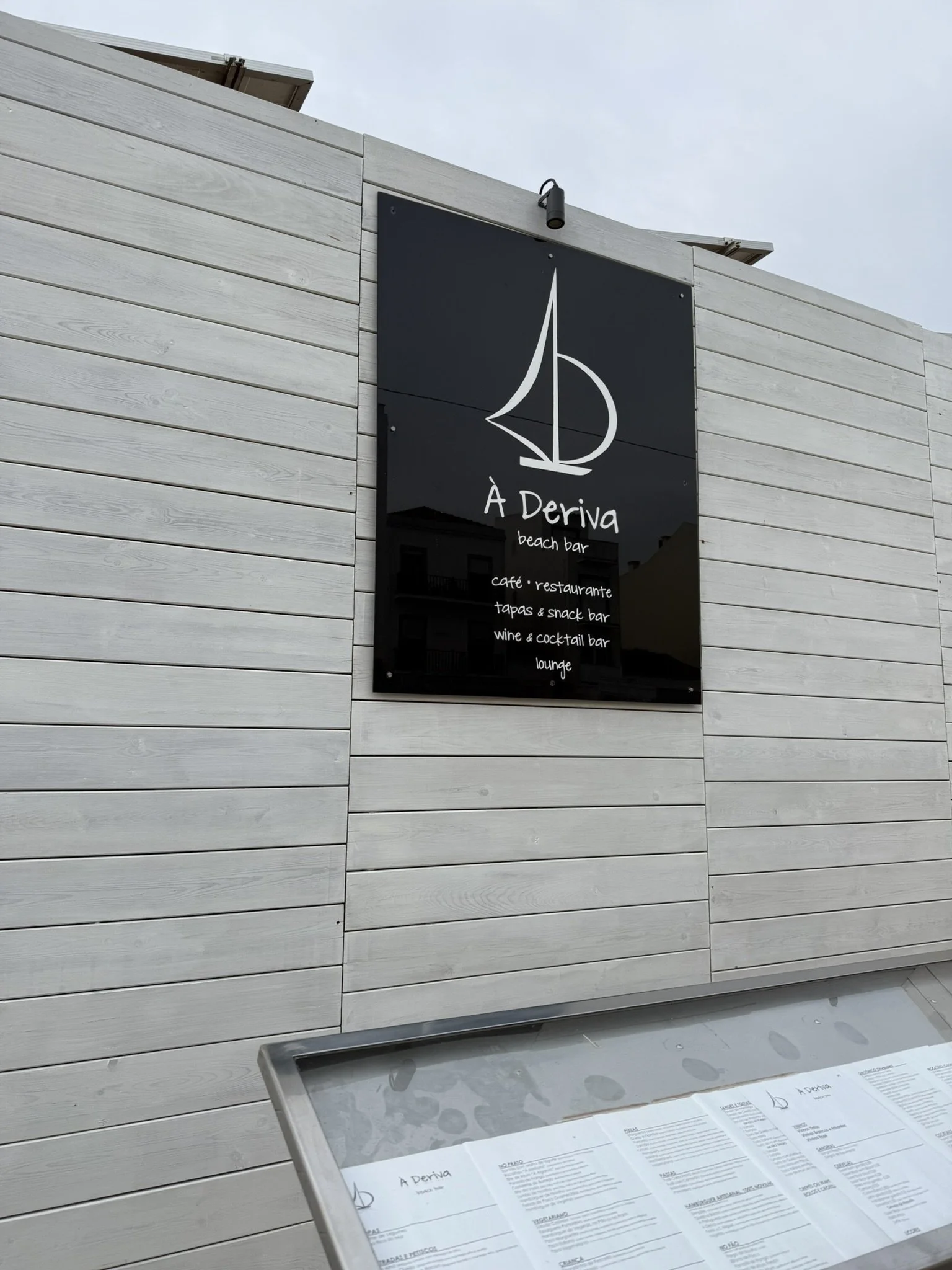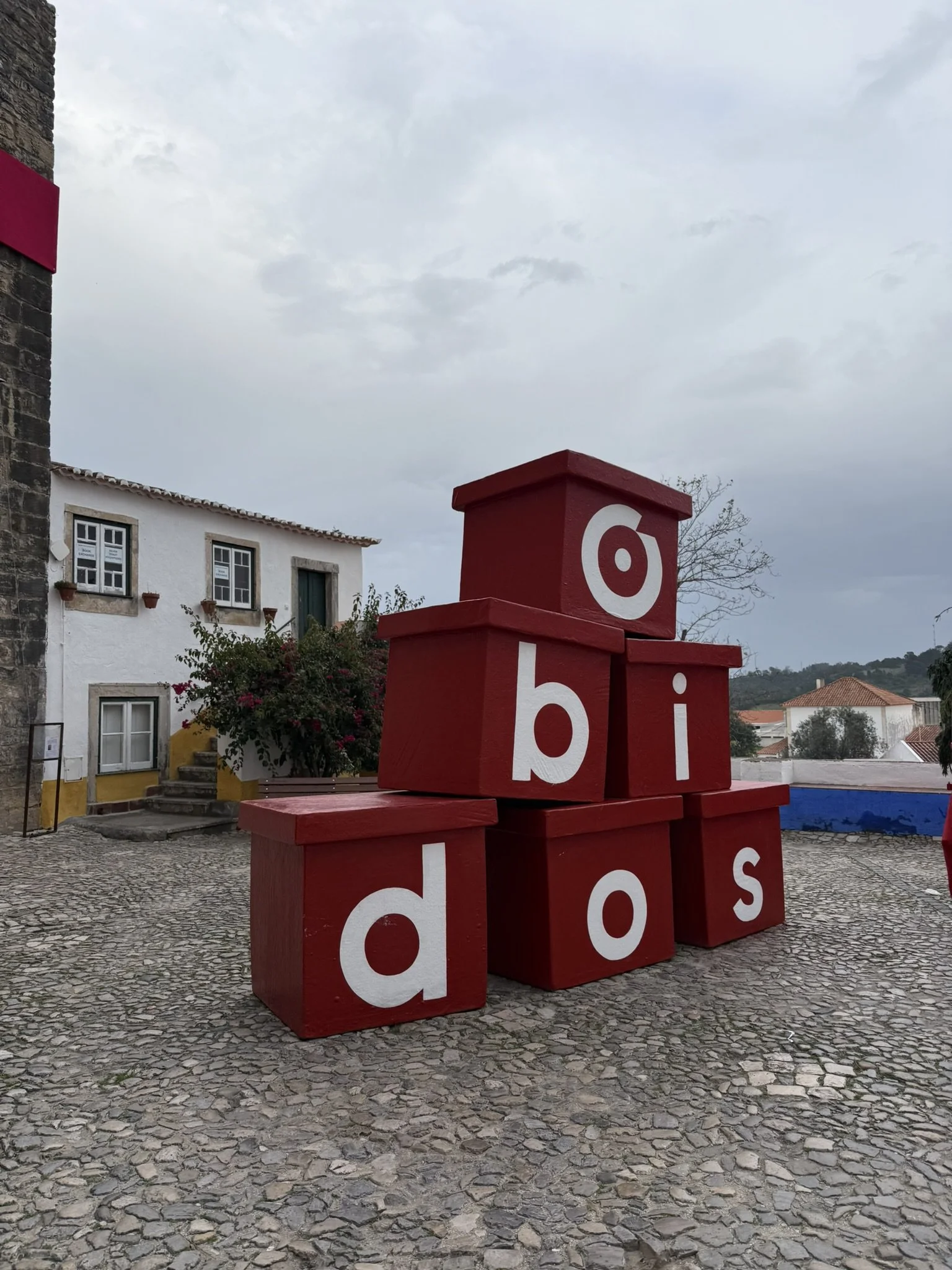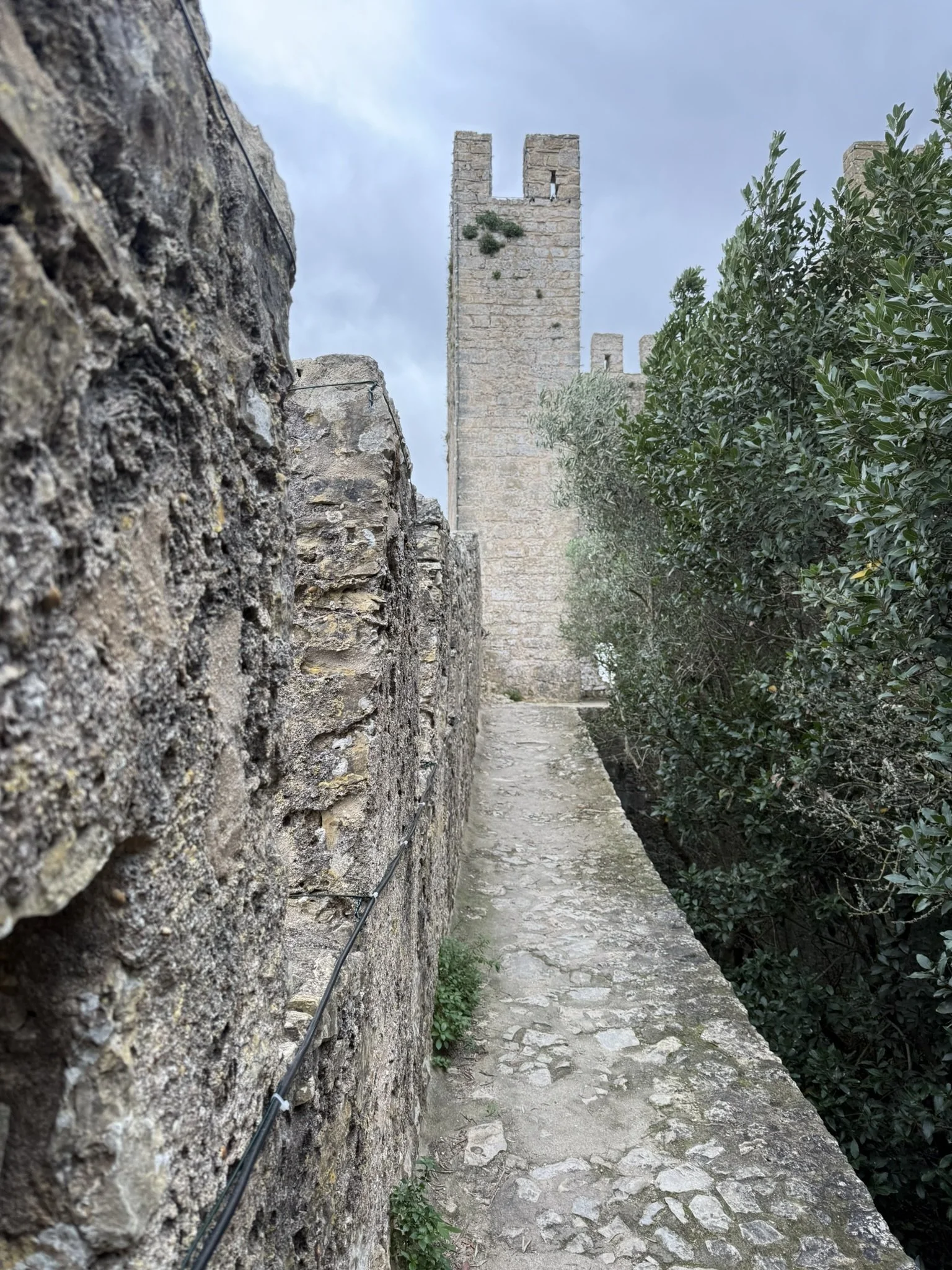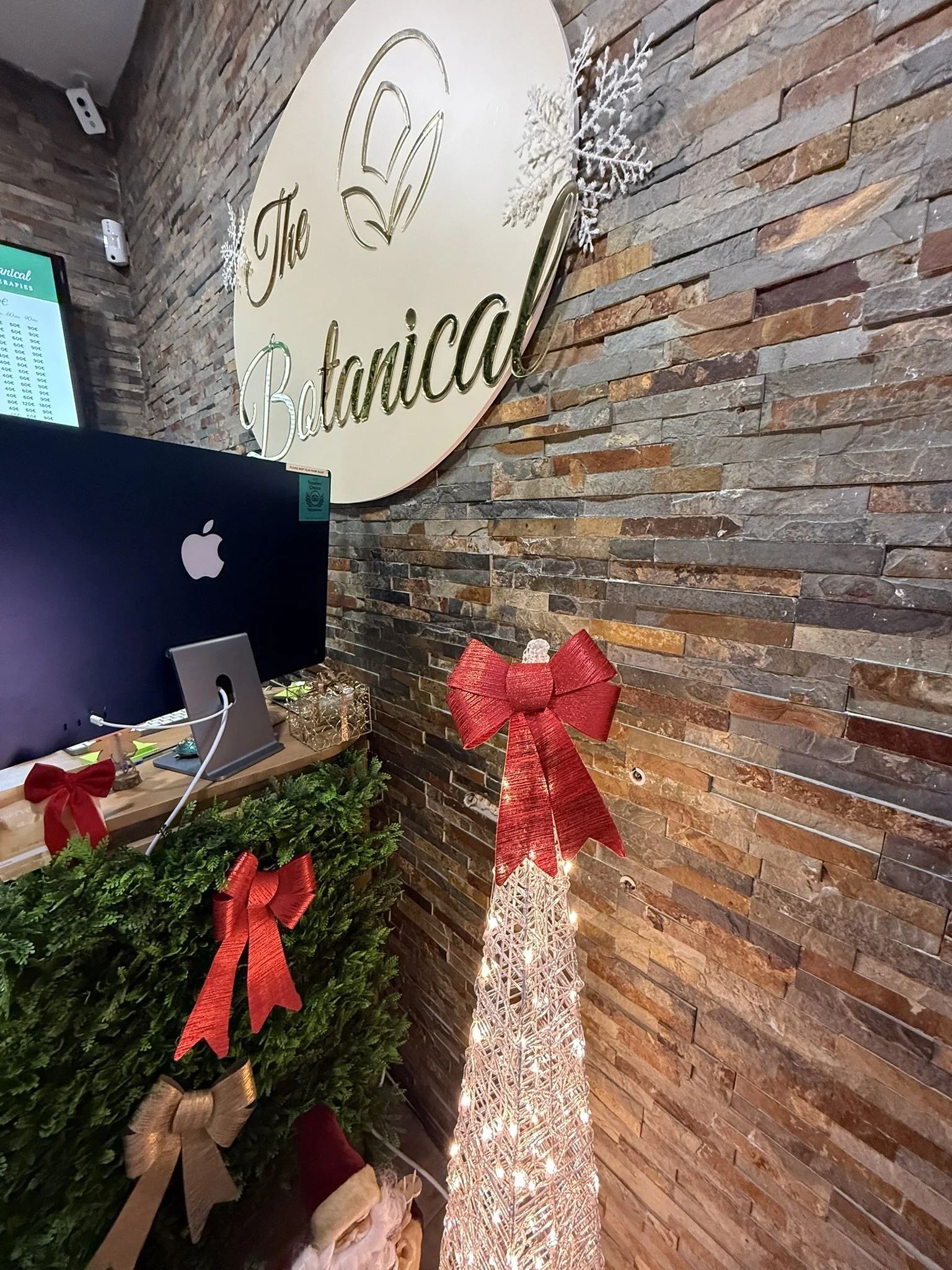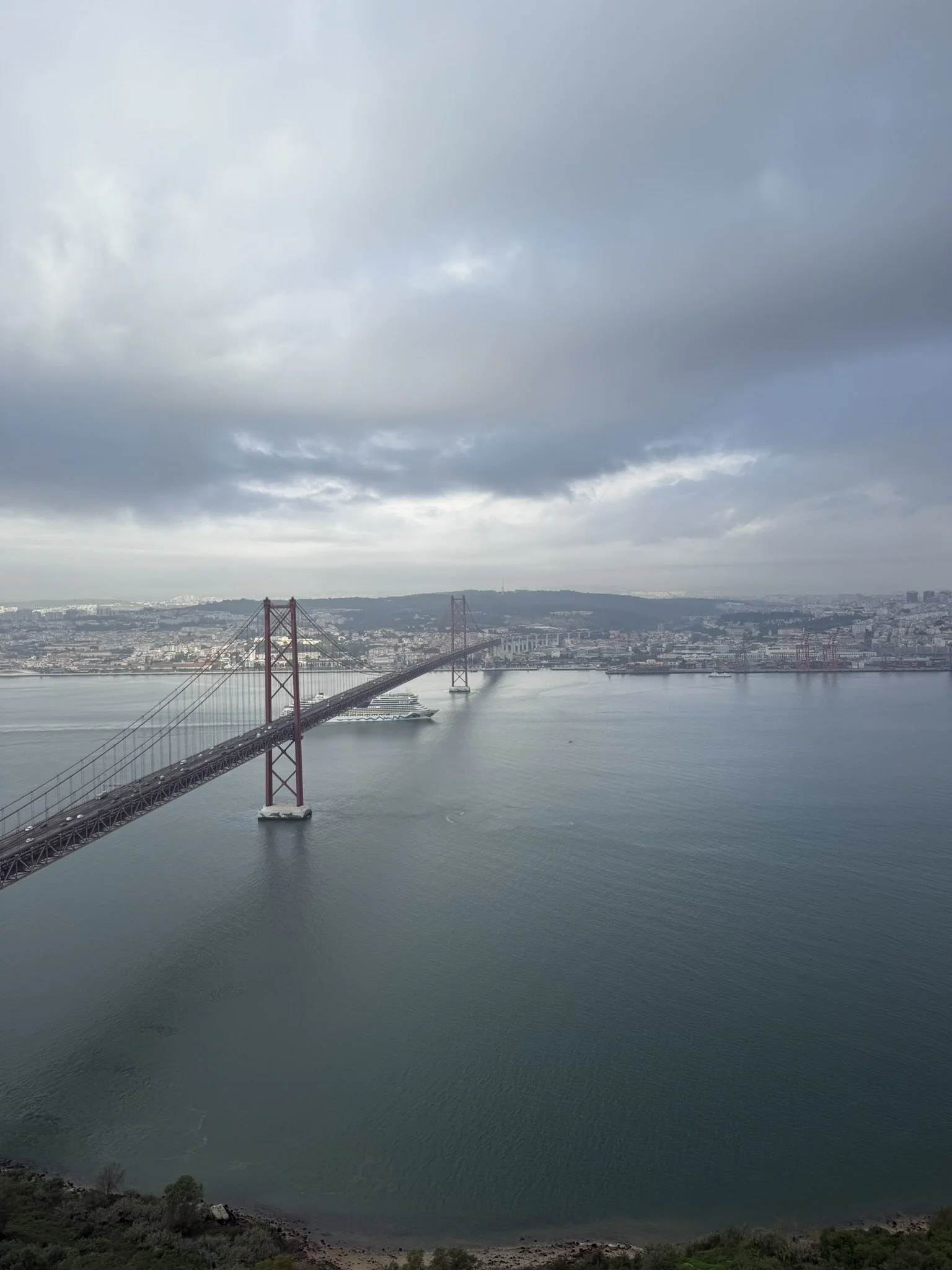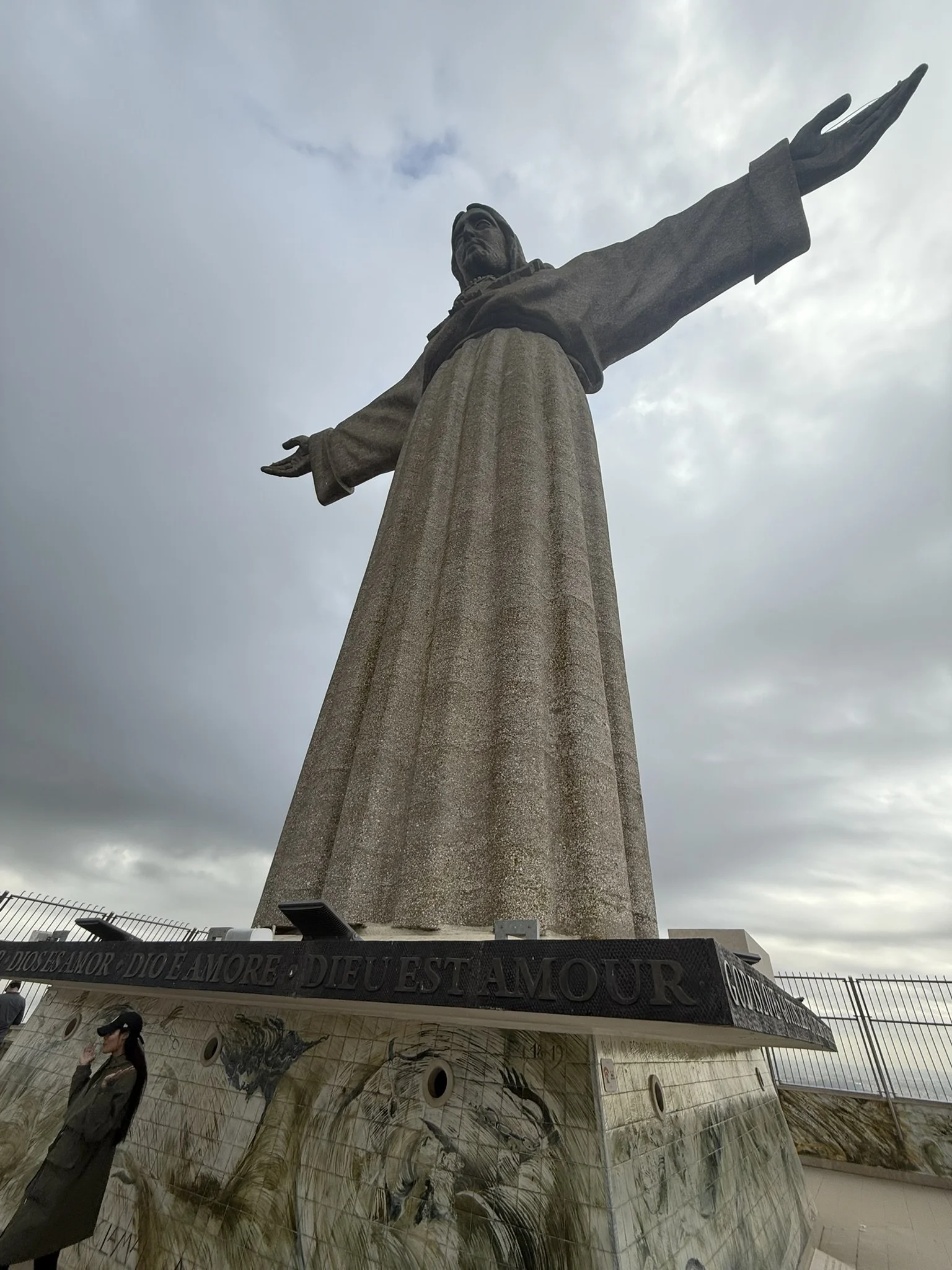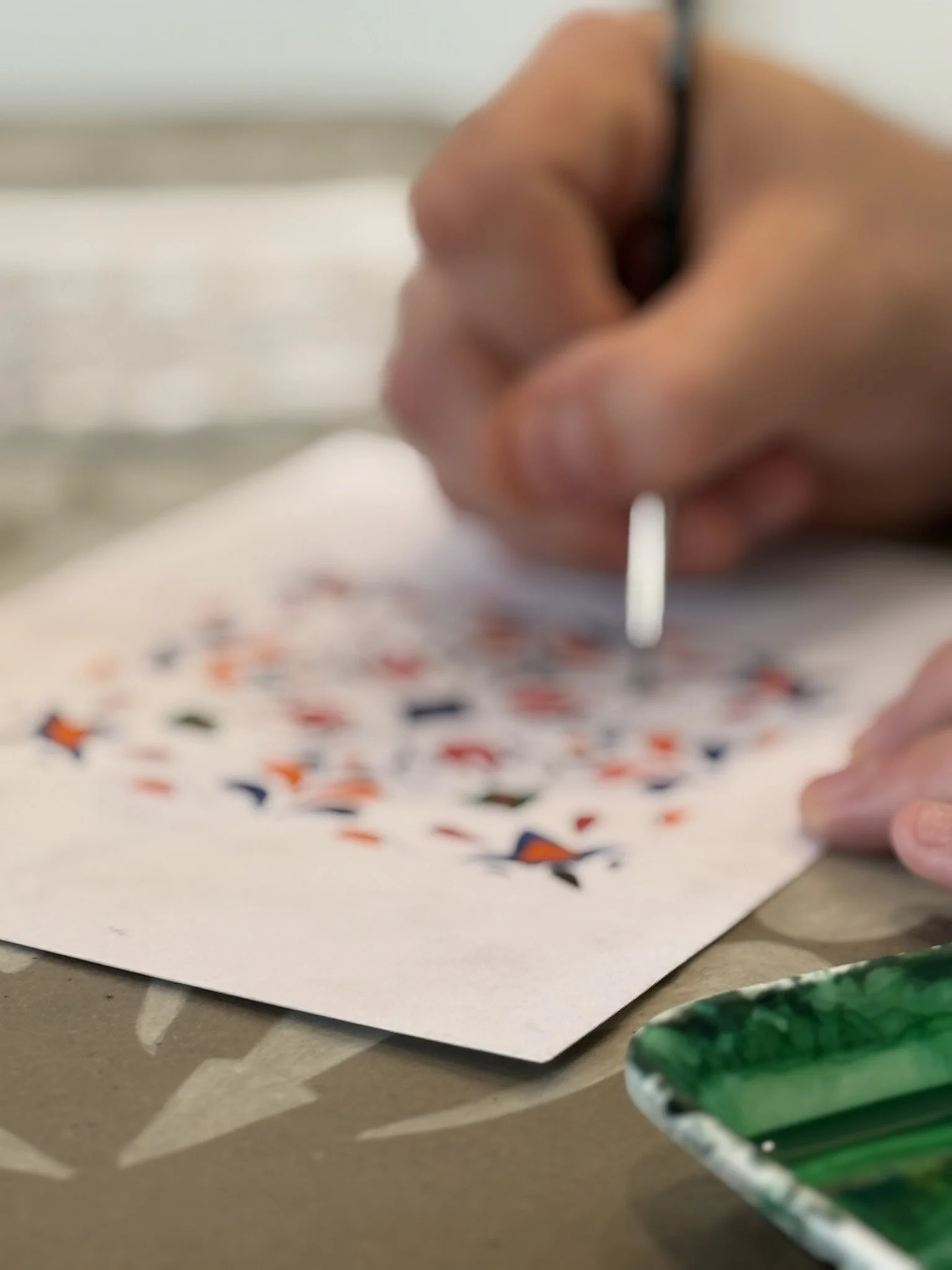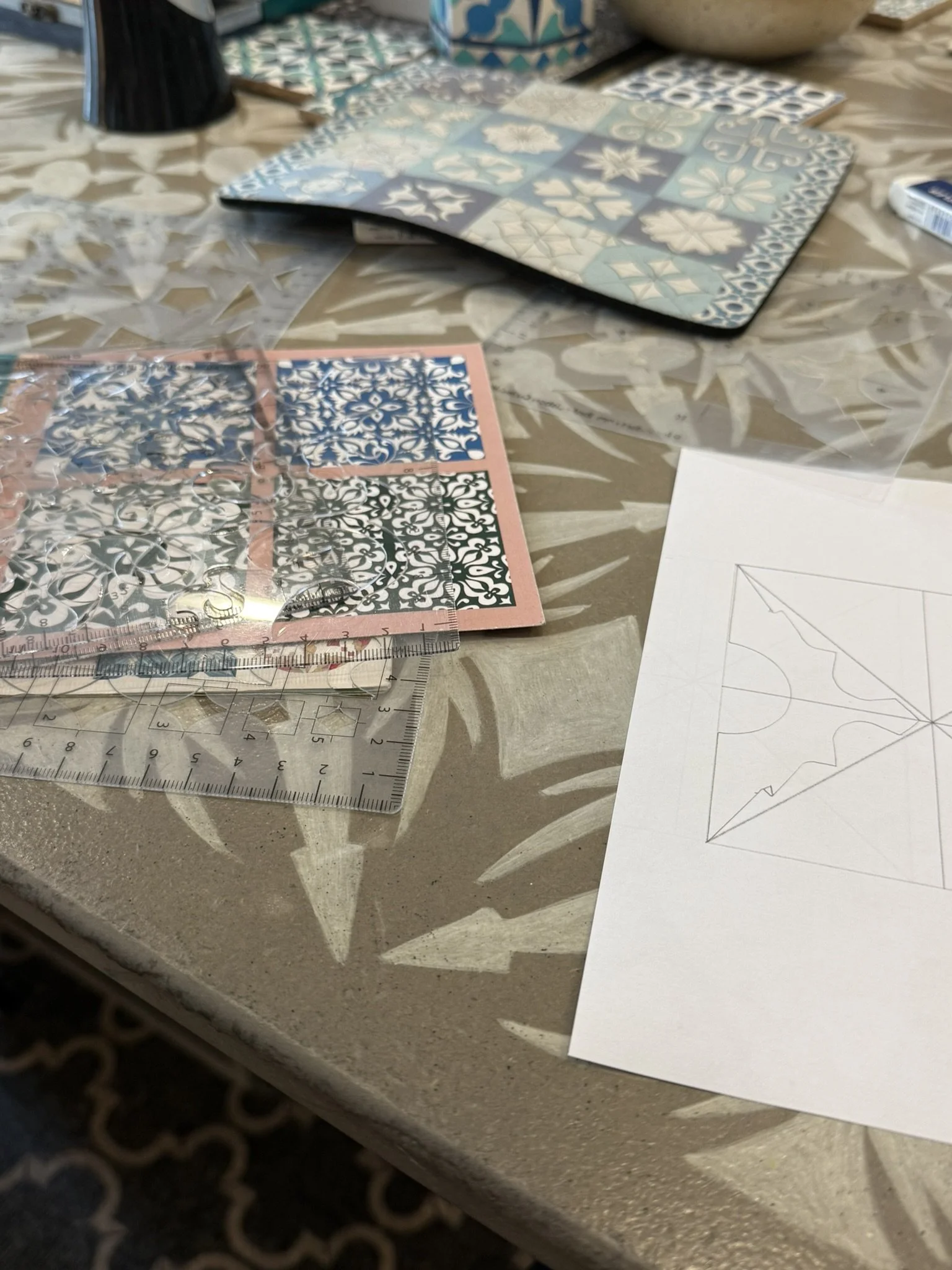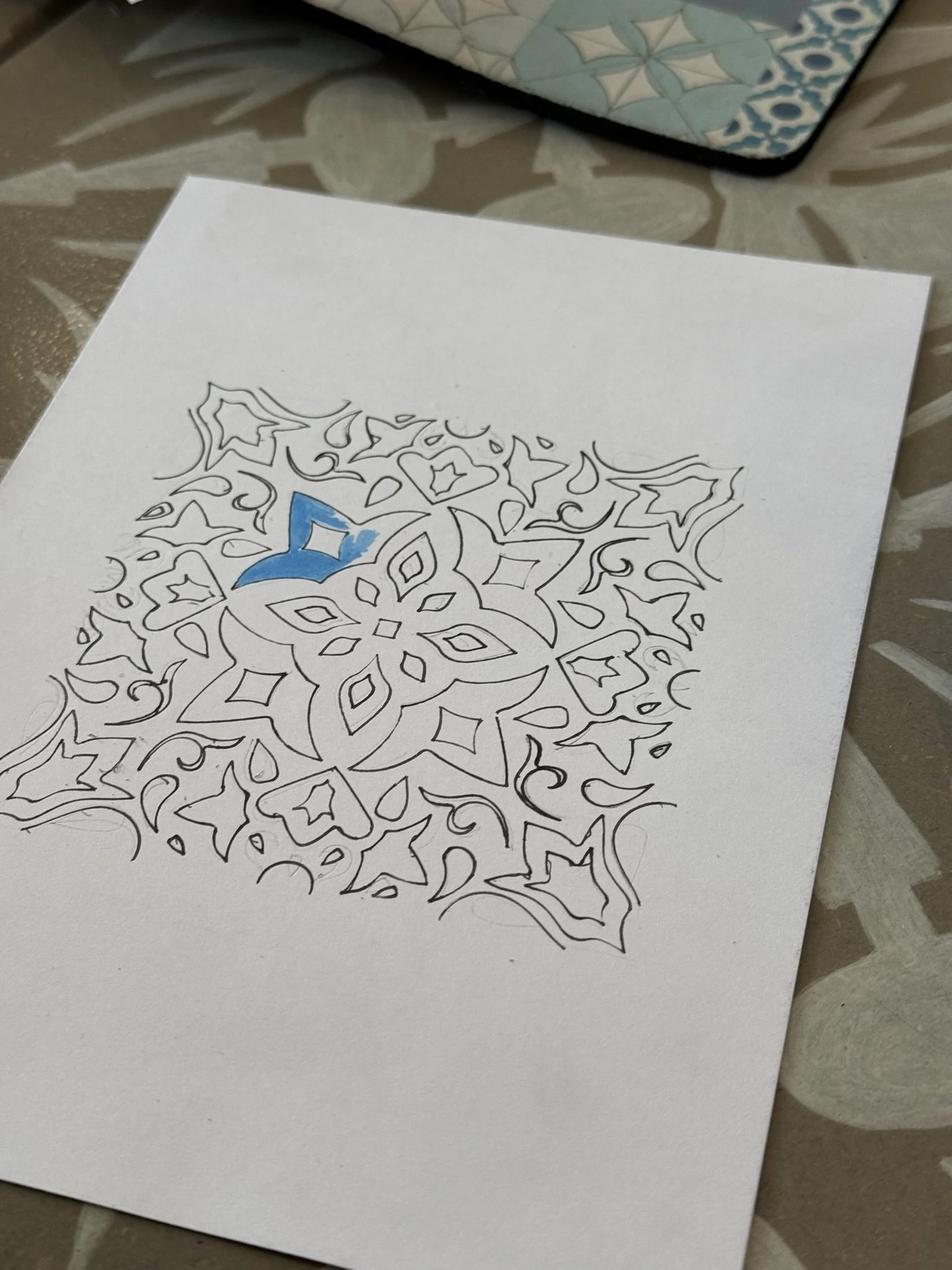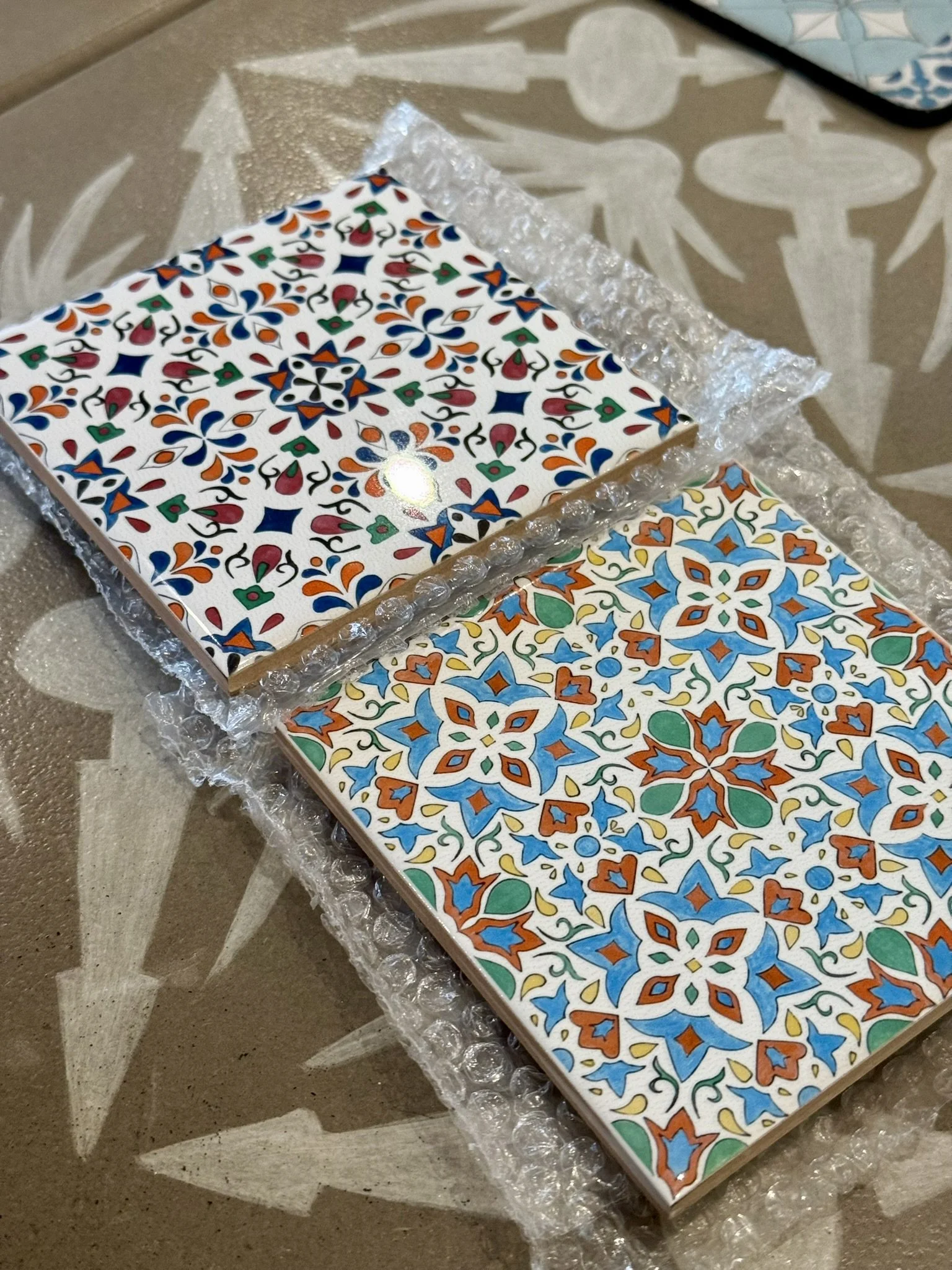Lisbon, Portugal
This Thanksgiving, we're swapping the traditional turkey for the delectable pastéis de nata and embarking on an unforgettable journey to Lisbon, Portugal! Our itinerary promises a rich tapestry of experiences in this captivating city and its surroundings.
We'll begin by immersing ourselves in Lisbon's vibrant soul, navigating its colorful neighborhoods on a thrilling Tuk Tuk tour. Next, we'll venture to the whimsical realm of Sintra, where fairytale palaces and lush gardens await exploration. The dramatic cliffs of Cabo da Roca will offer breathtaking panoramic views, followed by a leisurely stroll through the charming coastal town of Cascais.
Our adventure extends beyond the city with a day trip to Fátima, Nazaré, and Óbidos, a trio of destinations steeped in history and natural beauty. There, we'll witness the collision of the spiritual and the scenic. And because it's the holiday season, we'll also indulge in the festive atmosphere of Christmas markets, experiencing the magic of the holidays with a Portuguese twist.
So, prepare your suitcases (and maybe some extra room for culinary delights!) and join us as we uncover the wonders of this vibrant country, savoring every moment of this uniquely special Thanksgiving escape.
Aurea Museum by Eurostars
Our Thanksgiving adventure began the moment the wheels kissed the tarmac in sun-drenched Lisbon. After a smooth three-hour flight from Cologne, we were greeted by a city brimming with promise. Foreseeing a seamless arrival, I had pre-arranged a rental car through our hotel, and within moments, we were zipping towards our temporary haven: the Aurea Museum - A Eurostars Hotel.
The check-in process was a delight. As we crossed the threshold of the hotel's grand entrance, the warmth of the staff enveloped us. Genuine smiles and a genuine desire to welcome us made us feel instantly at home. And then, a touch of unexpected luxury: complimentary glasses of champagne, raised in a toast to the start of our Lisbon escapade.
This wasn't just a hotel; it was a portal to another era. Perched elegantly on the banks of the Tagus River, the Aurea Museum is a captivating blend of modern opulence and historical depth. Hallways whispered tales of the city's rich past, with carefully preserved artifacts and captivating displays. From ancient relics unearthed during the hotel's construction to narratives of Portugal's seafaring heritage, the Aurea Museum offered an immersive experience, not just a place to rest our heads.
Our room was a sanctuary of contemporary comfort, a perfect contrast to the historic surroundings. It was a masterful blend of old-world charm and sleek, modern design – the epitome of what one expects from a Eurostars property. Champagne in hand, room keys secured, we knew our Lisbon sojourn was off to a truly spectacular start. The hotel's thoughtful welcome and stunning ambience had set the stage for an unforgettable stay!
Our initial foray into Lisbon’s vibrant soul was a thrilling Tuk Tuk tour, the perfect introduction to the city’s colorful neighborhoods and iconic landmarks.
Tuk-Tuk Tour
The moment we climbed into the tuk-tuk, Lisbon embraced us. The little vehicle buzzed to life, whisking us away through a maze of sun-drenched cobblestone lanes. Wind tousled our hair, and the city’s vibrant symphony—a blend of distant chatter and echoing trams—became our soundtrack. It was an exhilarating, unconventional start to our exploration.
Pastéis de Belém
Our first pilgrimage was to the legendary Pastéis de Belém, a bakery whispered about in every corner of Lisbon. Since 1837, they've been crafting their iconic pastéis de nata, and let me assure you, the hype is entirely justified. Imagine: warm, freshly baked pastries, their golden crust shattering into delicate flakes, yielding to a heart of rich, silken custard. A dusting of powdered sugar and cinnamon completed the masterpiece, each bite a small explosion of creamy, sweet delight.
The café itself hummed with a captivating energy, steeped in the weight of history. Beautiful azulejo tiles adorned the walls, creating a vibrant backdrop to the bustling scene. The recipe for these heavenly tarts remains a closely guarded secret, adding to their allure. Satiated and buzzing with sugar, we eagerly hopped back into our tuk-tuk, ready for the next adventure.
Jerónimos Monastery
The Jerónimos Monastery, our next stop, was simply breathtaking. A UNESCO World Heritage site, it rose before us like a dream crafted from stone. Intricate Gothic and Manueline architecture soared towards the sky, a symphony of spires, carvings, and immense arches that whispered stories of Portugal’s past.
Our guide brought this architectural marvel to life, sharing a compelling narrative of its history and the surrounding Belém area. Commissioned in the early 1500s by King Manuel I to celebrate Vasco da Gama's momentous voyage to India, it was fueled by the wealth of Portugal’s spice trade during the Age of Discovery. He explained how this magnificent structure, along with others in the vicinity, marks Portugal’s brief yet spectacular period of prosperity, the Manueline Era.
King Manuel I’s vision was to showcase Portugal’s might and maritime prowess through the architecture. This is evident in the recurring nautical motifs like ropes, anchors, and sea creatures intricately woven into the design. The monastery was more than just a building; it was a proud and powerful symbol of a time when Portugal ruled the seas, completed in a remarkable feat of craftsmanship in just a few short decades.
Belém Tower
A highlight of our Tuk Tuk excursion was undoubtedly the Belém Tower (Torre de Belém), an iconic monument synonymous with Portugal's illustrious maritime history. Poised on the banks of the Tagus River, the tower's architectural beauty and deep historical roots make it an essential destination for any visitor to Lisbon.
Erected in the early 16th century, this UNESCO World Heritage Site served multiple functions. Originally, it was a key component of Lisbon’s coastal defenses, protecting the harbor from potential attacks. Simultaneously, it acted as a ceremonial portal, marking the return of ships from their long voyages. Our guide illuminated the distinctive features of the Manueline architectural style, showcasing elements like the elaborate sculptural detailing, maritime symbols including ropes and anchors, and the unexpected portrayal of a rhinoceros. This rhinoceros carving, we learned, holds significance as an early European artistic representation of the animal, highlighting Portugal’s far-reaching connections during the Age of Discovery.
The Belém Tower is more than just a physical structure; it’s a potent symbol of Portugal's explorative spirit during the Age of Discovery. It stands as a silent witness to the countless expeditions that embarked from this very location. Its riverside setting allowed us to vividly imagine the historical context, transporting us back to an era when Portugal dominated the maritime world. The panoramic views from the tower were equally captivating, showcasing the vastness of the Tagus and the sprawling cityscape in the distance. This visit not only underscored the visual beauty of Lisbon but also deepened our appreciation for its profound maritime heritage. The Belém Tower, therefore, is not only a landmark but a crucial historical touchstone.
Monument to the Discoveries
A short distance from the Belém Tower, the imposing Monument to the Discoveries (Padrão dos Descobrimentos) rose before us, a powerful testament to Portugal's Age of Exploration. Perched dramatically on the Tagus River's edge, its sleek, ship-like form seemed poised to embark on a journey into the past. Created in 1960 to mark the 500th anniversary of Prince Henry the Navigator's passing, this 52-meter (171-foot) monument embodies the spirit of Portugal's golden age, honoring the intrepid explorers who reshaped the world map. The caravel-shaped structure is crowded with statues of key figures from the Age of Discovery, all following Prince Henry, their leader in bronze.
Our guide helped us pick out various people including Vasco da Gama who established the sea route to India and Ferdinand Magellan, the first to circle the entire globe. Each explorer appeared to gaze purposefully toward the horizon, reflecting the bold spirit and foresight that drove Portugal’s historic journeys. At the monument's base, we were captivated by the intricate compass rose and world map mosaic, crafted in marble. This artwork vividly illustrates the explorers' routes, offering a tangible reminder of how their voyages transformed global history and initiated a legacy of discovery and cultural exchange that continues to resonate today.
Having explored the historical sights of Belém, our Tuk Tuk carried us to downtown Lisbon, where the city had fully embraced the holiday spirit. Festive displays lined the streets, twinkling lights created a magical ambiance, and the lively energy of the season was palpable. The Christmas tree at Armazéns do Chiado was a particular highlight, a spectacular centerpiece that came alive with music and a vibrant light show at scheduled times. This synchronized display transformed a simple sight into a truly special experience. As we traveled through the city, it was clear that Lisbon had embraced the festive season with remarkable creativity and joy.
Chafariz do Carmo
As our Tuk Tuk wound through Lisbon's vibrant downtown, we paused at the Chafariz do Carmo, an 18th-century fountain that whispered stories of the past. Our driver shared its origins as a key component of Lisbon's historic water supply, an elegant structure meticulously designed to deliver fresh water to the city. With its classical columns and delicate stonework, the fountain was a charming historical gem amidst the urban energy.
This seemingly simple fountain, we learned, also played a powerful role in Lisbon's recovery following the devastating 1755 earthquake. This catastrophe, compounded by a tsunami and fires, decimated the city's infrastructure. The Chafariz do Carmo, near the Carmo Convent, became more than just a source of water; it became a symbol of resilience, a testament to Lisbon’s determination to rebuild from the ashes.
Santa Justa Lift
Our next stop was the renowned Santa Justa Lift, a striking neo-Gothic iron structure designed to transport visitors between downtown Lisbon and the elevated Carmo Square. Though the lift itself was not operational during our time there, the visit was far from a disappointment. We ascended to the adjacent viewing platform, and our efforts were rewarded with a breathtaking panorama.
From this high vantage point, Lisbon unfolded before us: a tapestry of red-tiled roofs, winding cobblestone lanes, and the energetic hum of city life below. Even without a ride on the lift, the experience of gazing out over such a captivating cityscape proved to be a highlight, a chance to pause and fully absorb the city's unique blend of historical elegance and contemporary energy.
Basílica dos Mártires
Leaving the bustle of the streets behind, our Tuk Tuk pulled up to the Basílica dos Mártires, a stunning baroque church that felt like a sanctuary in the middle of Chiado. The basilica’s elegant facade, with its balanced design and finely crafted stonework, drew our eyes upward. We felt compelled to enter and discover the secrets within.
As we prepared to explore, our driver offered insight into the church's origins: it was built in the late 1700s to commemorate the Christian martyrs who gave their lives during the reconquest of Lisbon from the Moors in 1147. The basilica, therefore, was much more than just a beautiful building; it was a powerful symbol of the city’s history, its strength, and its religious roots.
Praça Júlio de Castilho
We ascended to Praça Júlio de Castilho, one of Lisbon's most celebrated miradouros, and were instantly captivated. This elevated square, a true jewel of the city, unfolded before us a breathtaking panorama: the shimmering Tagus River tracing its path, the terracotta roofs of Alfama painting a vibrant scene. It was a space that demanded a pause, a moment of quiet contemplation to absorb the sheer beauty - a perfect canvas for capturing unforgettable, postcard-worthy images.
As we lingered, mesmerized by the view, our Tuk Tuk driver drew our attention to the intricate azulejo tiles that embellished the surrounding walls. These hand-painted tiles, a defining element of Portuguese artistry, whispered stories of the past. Here, they unveiled glimpses of Lisbon's rich history, from the daring seafaring journeys of the Age of Discovery to the everyday rhythms of life in centuries past.
Our guide then illuminated the dual purpose of these exquisite tiles, explaining how they serve not only as captivating decoration, but also as a practical defense against the elements. This fusion of functionality and artistry, he noted, was a hallmark of Portuguese design. He even shared intriguing legends connected to the tiles, weaving a thread of folklore into our experience.
Statue of Saint Vincent of Saragossa
Our journey continued to the Statue of Saint Vincent of Saragossa, a powerful emblem of Lisbon's religious and historical roots. This elegant monument, standing proudly at the city's core, honors Saint Vincent, Lisbon's patron saint and a figure deeply embedded in Portuguese culture. Our Tuk Tuk driver unveiled the captivating story of this martyred saint: Vincent, originally from Saragossa, Spain, faced brutal persecution in the 4th century.
His relics were brought to Lisbon in the 12th century, cementing his place as a cornerstone of the city's spiritual identity. The statue portrays Saint Vincent holding a boat guarded by two ravens – a potent visual representation of the legend surrounding the arrival of his remains in Lisbon. According to the tale, these ravens protected the relic-bearing vessel during its voyage. This imagery's significance is so profound that it is also prominently displayed on the city's coat of arms.
Miradouro da Senhora do Monte
Our journey led us to the Miradouro da Senhora do Monte, a viewpoint that quite literally took my breath away. Situated in the elevated Graça district, it offered a panoramic spectacle unlike any other I've witnessed. Reaching this remarkable spot felt like discovering a hidden gem, a reward for the uphill trek. From this vantage point, Lisbon unfolded in all its glory. The familiar red rooftops of Alfama cascaded down the hills, the Tagus River sparkled under the sunlight, the 25 de Abril Bridge stretched across the horizon, and São Jorge Castle stood proudly atop its hill – each element contributing to a breathtaking tapestry.
The view was so expansive, so encompassing, that it felt as though we held the heart of Lisbon in our gaze. The setting itself was equally enchanting: lush greenery embraced the area, and a small, charming chapel dedicated to Our Lady of the Mount lent an air of serenity. Our knowledgeable Tuk Tuk driver shared that the spot is beloved by locals, not only for its stunning views but also for the peaceful ambiance and the spectacular sunsets it graces each evening.
Mosteiro de São Vicente de Fora
As we made our way back down, we were drawn to the Mosteiro de São Vicente de Fora, a monument that speaks volumes about Lisbon's past. Its Mannerist architecture, with its grand facade and balanced symmetry, was instantly compelling, a testament to its enduring historical importance. Our guide revealed that the monastery’s story began in the 12th century, established by King Afonso Henriques following the city's liberation from Moorish rule. Dedicated to Saint Vincent, Lisbon’s patron saint, its name, "de Fora," reflected its original position just outside the city walls.
For centuries, the monastery served as a crucial center within the religious and political landscape of Portugal. Under King Philip II of Spain in the 16th century, the monastery underwent a transformative expansion, adopting the elegant Mannerist style that defines its current appearance. The design skillfully blends simplicity and grandeur, characterized by its precise symmetry, clean lines, and understated sophistication.
Lisbon’s National Pantheon
Our Lisbon tour was punctuated by moments of breathtaking grandeur and charming everyday life. One such moment was our visit to the National Pantheon (Panteão Nacional), a majestic white dome that pierces the Alfama skyline. Our brief stop at this stunning monument left a lasting impression, revealing not only architectural beauty but also a complex history. Originally destined to be a church for Saint Engracia, its construction famously dragged on for nearly three centuries, leading to the popular expression “Obras de Santa Engrácia,” used to describe perpetually unfinished projects. This building, eventually consecrated as the National Pantheon in 1916, became a hallowed space honoring Portugal’s most significant figures. We were captivated by the building’s grand interior, from its lofty dome and patterned marble to its intricate Baroque and Neoclassical ornamentation. Here, the tombs of national heroes like Amália Rodrigues and other luminaries are nestled together, a testament to the country’s rich cultural, artistic, and political history.
From this place of quiet reflection, our tour then led us to the vibrant chaos of Feira da Ladra, or “Thieves’ Market.” A bustling affair held in the heart of Alfama each Tuesday and Saturday, this market is a long-standing Lisbon tradition dating back to the 13th century. Our guide shared the intriguing tales of its name, whether it refers to its potentially shady past or the market’s irresistible allure. Whatever its etymology, the Feira da Ladra, with its eclectic mix of goods and lively atmosphere, is inextricably woven into the fabric of Lisbon’s history.
On our return, we seized the chance to ask our Tuk Tuk driver for dinner recommendations. He readily offered several options, but his description of the famous Time Out Market, a lively food hall in Cais do Sodré, piqued our interest. He painted a picture of a buzzing hub, popular with both locals and tourists, showcasing dishes from Lisbon's top chefs and restaurants, all conveniently together. Intrigued by the prospect of sampling a bit of everything, we accepted his suggestion, and he kindly dropped us at the market's entrance.
What We Liked About the Tour:
Unique Transportation: Riding in a Tuk Tuk was such a fun and efficient way to explore Lisbon, especially navigating the city’s narrow cobblestone streets and hills. It added an adventurous and local touch to the experience.
Knowledgeable Guide: Our driver was fantastic—full of stories, historical insights, and great recommendations, from landmarks to dinner spots. His enthusiasm made the experience even more enjoyable.
Diverse Stops: The variety of landmarks we visited, from the historical Jerónimos Monastery and Belém Tower to the awe-inspiring viewpoints like Miradouro da Senhora do Monte, gave us a well-rounded taste of Lisbon’s beauty and history.
Personalized Experience: We loved how the tour felt tailored to us, with flexibility to stop, explore, and learn at our own pace.
Local Insights: The guide’s ability to share lesser-known facts, legends, and cultural tidbits added depth to the tour, making it feel like more than just sightseeing.
What We Didn’t Like:
Traffic Delays: Like any city tour, we encountered some traffic, which cut into our time at a couple of stops. Though our driver made the best of it by sharing stories while we waited, it was a bit of a drawback.
Santa Justa Lift Closed: It was a minor disappointment that the Santa Justa Lift wasn’t operational during our visit. However, the overlook area made up for it with stunning views.
Evening Chill: As the evening set in, the open Tuk Tuk ride became a bit chilly. It’s something to consider for comfort during colder months, though we were prepared with light jackets.
This tour provided an absolutely unforgettable experience. Our driver’s expertise wasn't limited to simply showing us the city’s landmarks and stunning viewpoints; he also offered a thoughtful dinner recommendation, going above and beyond to share the essence of Lisbon. This wasn't just a guided tour – it was a journey through the city's core, seamlessly blending culture, history, and local flavor into one incredible adventure. Lisbon truly came alive for us, and this experience proved to be the perfect start to our trip. We enthusiastically recommend this tour, especially to new travelers eager to gain a comprehensive understanding of the city's layout and atmosphere.
Time Out Market
Stepping out of the tuk-tuk, we were immediately swept into the vibrant energy of the Time Out Market. This place was a true feast for the senses! Dozens of food stalls beckoned, a dazzling array of choices stretching from traditional Portuguese delights like bacalhau and piri-piri chicken to tempting international fare and gourmet desserts. The lively atmosphere, a symphony of clinking glasses and animated conversations around communal tables, created the perfect, buzzing end to our evening.
I opted for a "Prego Geek" sandwich from O Prego da Peixaria – a delightful combination of juicy chicken, mozzarella, fragrant tomato jam, and fresh basil. The jam was the perfect sweet counterpoint to the savory chicken. William's experience was a bit more of a rollercoaster: his hot dog was met with a resounding "disgusting," thankfully redeemed by a bacon cheeseburger from Groundburger, which he found much more palatable. While we enjoyed the overall experience, we wondered if the market's proximity to closing time might have slightly diminished the usual quality.
Regardless, we were both ready to sink into the comfortable beds at the Aurea Museum - Eurostars Hotel. After such a packed and exciting day, we're looking forward to tomorrow's slower pace, giving us time to recharge and savor this incredible city at our own rhythm.
Cotidiano
The day's agenda was blissfully clear: no guided tours, just the freedom to wander Lisbon at our own rhythm – and the thrill of getting matching tattoos to permanently mark this journey!
We began with a leisurely walk to Cotidiano, a small, corner café that exudes charm. Its green-tiled interior created a fresh and inviting atmosphere, perfect for a tranquil morning. The service was warm and attentive, adding to the laid-back vibe. I opted for a classic breakfast of eggs, toast, and pancakes, while William enjoyed a substantial breakfast burrito.
Though the pancakes were slightly underwhelming, the vanilla lattes were an absolute revelation; their smooth, creamy sweetness provided the perfect start to our day. Despite the minor pancake hiccup, Cotidiano was a wonderful discovery. It felt like a hidden gem, a neighborhood retreat where good food, friendly service, and those unforgettable lattes came together for a truly enjoyable experience.
We give Cotidiano an 8/10 for its relaxed ambiance, enjoyable food, and impeccable service – a great place to begin any Lisbon adventure.
Route Lisbon Tattoo Shop
Following a leisurely breakfast, our anticipation peaked as we made our way to Route Lisbon Tattoo Shop, a place we'd eagerly marked as a highlight of our day. I'd contacted them via Instagram beforehand, securing our appointment and sharing the concept for our matching tattoos. Their communication was not only prompt but also incredibly professional, instantly putting us at ease and ensuring a seamless experience.
Our chosen design was a seahorse azulejo, a tribute to the exquisite Portuguese tiles (azulejos) that grace Lisbon's cityscape. These hand-painted ceramic works, vibrant and steeped in history, are a true emblem of Portugal's rich heritage. We were captivated by the idea of embedding this cultural touchstone into our tattoos. The seahorse, with its simple yet resonant form, felt incredibly apt – a seamless fusion of Lisbon’s coastal essence and its deeply artistic spirit. Moreover, the romantic symbolism of seahorses, with their loyal monogamous pairings and shared swims, resonated deeply with us. This added an extra layer of meaning to our matching tattoos, making them both a testament to our shared affection and a celebration of our passion for travel.
Arriving a few minutes early, we were immediately struck by the shop's vibrant atmosphere. The place exuded a cool, relaxed energy, with creative decor that reflected its unique identity – a perfect echo of Lisbon’s own artistic soul. We were greeted warmly by the staff, and our artist, who we'd been emailing with, emerged to finalize the intricate details of the design.
The final sketch laid before us was a miniature marvel. The artist had perfectly captured the delicate balance of detail and elegance we'd envisioned. The intricate azulejo-inspired patterns, with their uniquely Portuguese flair, transformed the design into a deeply personal homage to our time in Lisbon. Knowing that this art, this tiny piece of Lisbon – complete with the romantic symbolism of the seahorse – would become a permanent part of us, filled us with excitement. The entire process, from initial planning to the final inked lines, felt smooth and effortless, making the shared experience of our matching tattoos all the more significant.
While we rate Route Lisbon Tattoo Shop a 7/10 overall, the artistry is undeniable. The studio was clean and professional, immediately instilling trust in their capabilities. However, a slightly more communicative approach from the artist during the process would have elevated the experience further. Some check-ins during the session, simply inquiring about comfort or need for a break, would have made the time more engaging and personalized. While the final results are beautiful and expertly executed, a bit more connection during the session could have pushed it to exceptional. We are ultimately delighted with the quality of the tattoos, which will forever serve as a beautiful reminder of our shared adventure.
Pink Street
Newly inked and energized, our post-tattoo wanderings led us to the legendary Pink Street (Rua Nova do Carvalho), a visual feast that lives up to its vibrant reputation. The entire pedestrian thoroughfare is painted an audacious shade of pink, a color that instantly grabs your attention and pulls you into its playful embrace. Above, a canopy of colorful umbrellas danced in the air, casting shifting patterns of light and shadow onto the rosy pavement below – a truly whimsical scene. It’s a testament to the street's iconic status that even Apple Maps recognizes its unique aesthetic, marking it with a matching pink hue—a truly delightful digital detail!
Once Lisbon’s red-light district, Pink Street has undergone a stunning transformation into a trendy hub. Now, it pulsates with life, lined with hip bars, cafes, and restaurants that spill out onto the vibrant street. Eclectic street art and glowing neon signs complete the scene, creating an atmosphere that’s both playful and artistically inspiring. Of course, we couldn't resist capturing the magic with a few photos, reveling in the pure joy of discovering such a unique corner of the city.
Oasis by Ache
And right there, amidst the joyful chaos, we found Oasis by Ache. This charming little eatery beckoned us in with its inviting vibe, where we secured a cozy outdoor table, perfect for soaking in the Pink Street energy and watching the world go by. The service was impeccable—friendly and attentive—adding another layer of enjoyment to our experience. We both opted for their chicken tacos, and they were nothing short of spectacular. The flawlessly seasoned, melt-in-your-mouth chicken, combined with fresh toppings and a zesty kick, was a flavor explosion that left us wanting more. To complement the meal, I sipped on a perfectly balanced mojito, while William chose a refreshing sangria. Both were exceptional, enhancing the relaxed, summery atmosphere of the evening.
Overall, Oasis by Ache deserves a solid 9/10. The outstanding food, expertly mixed drinks, and vibrant setting combined to create a truly memorable dining experience. The restaurant’s meticulous attention to detail, from the flavorful dishes to the perfectly crafted cocktails, set it apart. While no experience is absolutely flawless, Oasis by Ache came incredibly close, and we wholeheartedly recommend it to anyone looking for a standout meal in Lisbon.
Wonderland Lisbon & Rossio Christmas Market
Following a delectable meal at Oasis by Ache, we embraced the vibrant Lisbon evening, strolling through its lively streets. Festive decorations began to twinkle, casting a magical glow and amplifying the city's charm. We meandered, anticipation building, until it was time for the much-anticipated Wonderland Lisbon Christmas Market to open its gates in Parque Eduardo VII.
Eager to experience this holiday highlight for ourselves, we stepped into a world of sparkling lights and cozy atmosphere. The market felt like a true winter escape, a festive haven nestled in the heart of Lisbon. William decided to brave a cup of Glühwein, the traditional spiced wine, but found the lingering cloves made it less than perfect. I, on the other hand, discovered pure bliss in a warm batch of churros - perfectly crispy on the outside, soft on the inside, and dusted with just the right amount of sugar. These were, without a doubt, the ultimate festive treat.
Our exploration didn't end there. We ventured onwards to the Rossio Christmas Market, a smaller, yet equally charming space brimming with handcrafted ornaments and seasonal delicacies. The air buzzed with holiday cheer as we sampled white wine sangria, its fruity notes complementing the festive scene. As the evening deepened, we found ourselves drawn to Rua Áurea, where strands of lights wove a breathtaking canopy overhead. And then, the magic happened: we were treated to a mesmerizing light show, the lights dancing perfectly in time to a medley of Christmas carols. It was a completely unexpected and enchanting experience, washing us over in the genuine holiday spirit. Content and full of wonder, we made our way back to the hotel, a relaxed dinner beckoning after such a day packed full of festive joy.
Guacamole
After a long day of exploring, we opted for the convenience of Uber Eats and landed on Guacamole, a highly-rated Mexican restaurant. Our order was nothing short of a fiesta – vibrant elotes, cheesy chicken quesadillas, flavorful chicken tacos, and crunchy tortilla chips. Each dish was a revelation, a burst of fresh, bold flavors that perfectly satisfied our post-adventure hunger. Guacamole was exactly what we craved.
Without hesitation, we’d give Guacamole a perfect 10/10. The food was truly exceptional; each bite was a testament to the chef's mastery of fresh ingredients and vibrant seasonings. The dishes surpassed our expectations in every way, boasting layers of flavor that were both exciting and comforting.
The Uber Eats delivery was flawless, and remarkably, the food maintained its superb quality even as takeout. Guacamole quickly became a culinary highlight of our Lisbon trip, an instant favorite. We wholeheartedly recommend it to anyone seeking authentic and delectable Mexican cuisine.
Completely satisfied and happily full, we drifted off to sleep, buzzing with anticipation for our next day's adventures: a guided tour to Sintra, Pena Palace, Quinta da Regaleira, Cabo da Roca, and Cascais. Lisbon had already charmed us, and we were eager to discover what wonders lay ahead.
Sintra
Excitement buzzed through us as we rose early, ready for our Viator tour. A day filled with incredible Lisbon destinations awaited! Knowing the pace would be brisk, we opted for a little more sleep instead of breakfast—a decision that felt incredibly luxurious at the time. Our tour guide, Nelson, arrived promptly at our hotel, and we secured the prime seats, feeling fortunate and ready for the day. After collecting six more travelers, our group was complete, and our adventure towards Sintra began. Sintra, a place seemingly plucked from a storybook, beckoned with its renowned palaces, lush landscapes, and magical allure.
Nestled within the hills of the Sintra-Cascais Natural Park, this captivating town has long been a sanctuary for Portuguese royalty and nobles, offering a respite of cooler temperatures and stunning beauty. Nelson’s captivating tales of Sintra’s history and cultural importance enriched our journey. A UNESCO World Heritage Site, Sintra boasts a distinctive 19th-century Romantic architecture, a style unlike any other in Portugal. The colorful palaces crowning hilltops, enchanting gardens, and estates steeped in mystery create an immersive experience that transports visitors to another realm.
São Martinho
Our journey through Sintra began with a breathtaking panorama from a viewpoint in São Martinho. The town unfolded before us, a tapestry of colorful buildings nestled beneath a landscape dominated by the singular cones of the National Palace. These weren't mere architectural elements; they were the kitchen chimneys, towering over the town like surreal sentinels, drawing our gaze and sparking our curiosity. Nelson, our guide, revealed their history, explaining how these 15th- and 16th-century structures, designed to channel smoke from royal feasts, had become iconic symbols of Sintra. Their unexpected form, a blend of function and whimsy, added to the town's undeniable fairytale charm. From our vantage point, the chimneys stood in stark contrast to the lush greenery and the town’s vibrant hues, further emphasizing their unique presence.
Later, we meandered through Sintra's enchanting streets, each turn revealing more of its captivating allure. Our path led us to a plaque, a silent tribute to Lord Byron, one of Sintra's most fervent admirers. The plaque marked the poet's sojourn in this "glorious Eden," a phrase he immortalized in his "Childe Harold's Pilgrimage." Nelson explained how Byron's words had helped cement Sintra's status as a place of inspiration and romance, a legacy that continues to draw travelers to this captivating town. The plaque served as a reminder of the profound connection between the poet and the place, and the power of words to transform the perception of a destination.
Casa Piriquita
With a walk ahead, Nelson wisely proposed a pre-emptive snack. The consensus was a resounding "yes," leading us to the esteemed Casa Piriquita, a Sintra landmark baking magic since 1862. This charming establishment was a must-experience, and we eagerly settled in. While the group collectively sampled the iconic travesseiros, those delicate almond-filled puff pastries the bakery is famous for, we chose a more grounding option: cheesy toast.
The simple perfection of melted cheese clinging to golden bread was exactly the hearty sustenance we needed for our upcoming trek. The warm and welcoming ambiance, coupled with the friendly staff, made it a truly memorable pit stop. The contrast between the light and sweet travesseiros and our savory toast perfectly reflected the diversity of culinary experiences available in Sintra.
Quinta da Regaleira
Fortified by a hearty breakfast, we embarked on our climb towards Quinta da Regaleira, a Sintra estate that promised both intrigue and mystery. As we ascended, Nelson unveiled the captivating history of this place. Constructed in the early 20th century by António Augusto Carvalho Monteiro, a wealthy Brazilian-Portuguese businessman deeply drawn to the mystical, the Quinta is a testament to architectural brilliance and symbolic expression. Monteiro's collaboration with Italian architect Luigi Manini resulted in an estate that served as a canvas for his fascination with alchemy, Freemasonry, and the occult.
The estate itself is a visual symphony, blending Gothic, Renaissance, and Manueline architectural motifs. As Nelson guided us, he explained how the grounds became an intricate tapestry of symbols representing mythology, esoteric knowledge, and secret societies such as the Knights Templar and the Rosicrucians. Statues of gods and mythical beings were glimpsed amongst the verdant foliage, while ornate towers offered panoramic vistas of the surrounding landscape.
Quinta da Regaleira is a truly mesmerizing experience, an enchanting fusion of hidden symbolism, labyrinthine paths, and a harmonious interplay between architecture and nature. Every turn seemed to reveal a secret waiting to be deciphered, as if we had entered a mystical realm conjured from a dream.
Within the tapestry of wonders that adorned the estate, two locations resonated most deeply. The first, a scene plucked from the heart of a fairytale, was the Lake of the Waterfall. Emerald foliage embraced its shores, while a gentle cascade tumbled into water so clear it seemed to hold secrets within its depths. Stepping stones, like a playful path, invited one to cross the tranquil expanse. The air hummed with an otherworldly serenity, a feeling akin to stumbling upon a hidden realm where the veil between worlds was thin. It was a place that tugged at the heart, making it difficult to tear oneself away from its enchanting embrace.
The second, a stark counterpoint to the lake's gentle beauty, was the iconic Initiatic Well – a structure steeped in mystery and symbolism. More than mere architecture, the well served as a conduit for esoteric traditions and mystical beliefs. The well's spiral staircase, divided into nine symbolic landings, was a journey unto itself. Each step evoked the realms of Dante's Divine Comedy, from the darkness of Hell to the transformative potential of Paradise, a descent into the self followed by an ascent towards enlightenment. This inverted tower, plunging into the earth rather than reaching for the sky, challenged conventional thought. And at its base, a compass rose intertwined with a Knights Templar cross spoke of exploration and the secret paths of the spirit.
The well's allure extended beyond its singular structure, for it was interconnected with a labyrinth of tunnels snaking throughout the estate, a hidden network that linked it to places like the ethereal Lake of the Waterfall. Conceived by the collaboration of Luigi Manini and the visionary António Augusto Carvalho Monteiro – a man captivated by mysticism and the occult – the well stood as a testament to the pursuit of spiritual awakening. Leaving the captivating Quinta da Regaleira, we returned down the hill to our awaiting transport, our minds still filled with its magic.
The descent had been a delightful stroll, but the peaceful atmosphere dissolved upon reaching the base. A sudden surge of activity had created a chaotic scene. Traffic was snarled, and what appeared to be unregulated individuals had taken it upon themselves to direct the flow. These self-appointed traffic controllers, clearly unaffiliated with the estate or any official body, were soliciting payment from visitors seeking an alternative to the uphill climb. This impromptu and disorganized transportation system exacerbated the existing congestion, hindering the movement of legitimate vehicles and tour groups. The unusual spectacle injected an element of unexpected drama into an otherwise tranquil morning.
After a period of observation, punctuated by the unfolding traffic pandemonium, our van finally arrived. We boarded, eager to leave the chaotic scene behind and move on to the next part of our itinerary. The van ascended another hill, carrying us toward our highly anticipated destination: the Palace of Pena, a dazzling and iconic landmark of Sintra.
Palace of Pena
Nelson, a veteran of Sintra’s labyrinthine roads, expertly maneuvered our van up the steep, twisting ascent to the Palace of Pena. His confident driving was a small masterclass in navigating the region’s tricky terrain. Reaching the summit, we were presented with a choice: a short bus ride to the palace entrance or a challenging hike on foot. Nelson, with a knowing smile, warned us the latter would be a vertical climb.
The majority of our group, save for a discerning elderly couple, opted for the hike. Thus began our ascent, a physical challenge, yes, but not an unpleasant one. A welcome breeze kissed our faces, mitigating the exertion. The path, flanked by lush greenery, offered pockets of natural beauty, our reward—the promise of the magnificent palace—firmly in our sights. It was a climb that tested us, but one we faced eagerly, anticipation fueling our steps.
We reached the palace grounds ahead of the bus, finding ourselves with a few spare moments. Nelson used the time to discuss our lunch plans. He proposed a group meal, explaining his ability to call ahead and expedite our orders. The idea of saving time and enjoying a pleasant lunch together was a welcome one, and we readily agreed.
Finally, the elderly couple arrived, a clear signal to begin our exploration of the Palace of Pena. Inside, Nelson transformed into a storyteller, breathing life into the history and beauty of this iconic landmark. Perched atop its hill within the Sintra-Cascais Natural Park, the palace commanded breathtaking vistas of the surrounding countryside. On a clear day, Nelson informed us, you could even glimpse Lisbon and the vast expanse of the Atlantic.
He began by tracing the palace's humble beginnings. Its site was initially home to a small, medieval chapel dedicated to Our Lady of Pena. In the 16th century, King Manuel I expanded it into a monastery for the Order of St. Jerome, a place of quiet contemplation until the devastating 1755 Lisbon Earthquake crumbled it into ruins. It lay abandoned for almost a century until King Ferdinand II, in the 19th century, acquired the land, his vision focused on creating a summer royal residence.
Ferdinand, Nelson explained, was deeply influenced by the Romanticism movement, a celebration of art, nature, and emotion. To realize his unique vision, Ferdinand enlisted the German architect, Wilhelm Ludwig von Eschwege. Eschwege masterfully blended Neo-Gothic, Neo-Manueline, Neo-Islamic, and Neo-Renaissance styles, resulting in the whimsical, fairy-tale palace we now beheld. Completed in 1854, its eclectic design was, and still is, a marvel of European architecture.
As we gazed at the palace’s vibrant colors, Nelson highlighted the bold yellow, red, and blue tones that made it stand out so dramatically against the lush green landscape. The intricate carvings, gargoyle-like sculptures, and tiled walls, he noted, were all nods to Portugal’s rich artistic and cultural heritage. The Moorish-inspired domes and towers served as reminders of the country’s historical links to North Africa.
We paused on the terraces, the panoramic view stealing our breath. Nelson, our guide, gestured towards distant landmarks, weaving them into the rich tapestry of Portugal's royal history. He revealed that these terraces weren't merely decorative; they were strategically designed to offer the royal family and their guests unobstructed vistas of the surrounding landscape, a concept deeply rooted in the Romantic ideal of marrying architecture with nature.
Inside the palace walls, Nelson’s narrative continued, leading us through exquisitely preserved rooms. The Arab Room, a symphony of Moorish-inspired designs, echoed Ferdinand's passion for diverse cultures. In the King's Room, we admired opulent furnishings and intimate displays of the royal family's personal effects. The Chapel, with its original 16th-century stained glass casting a gentle glow and a breathtaking altarpiece, offered a moment of quiet contemplation amidst the palace's opulence.
Stepping outside, we entered Pena Park, a sprawling garden born from Ferdinand's own vision, a whimsical counterpoint to the palace itself. Winding paths led us through a world of exotic flora, serene ponds, and secret havens like the Valley of the Lakes and the Queen's Fern Valley. Nelson explained how Ferdinand's deep love of nature had transformed the park into a Romantic paradise, a tangible extension of the palace’s spirit.
As we strolled, Nelson underscored the profound cultural and historical significance of the Palace of Pena. He described it as a powerful symbol of Portugal's artistic identity and royal legacy. Its eclectic design, a harmonious blend of disparate architectural styles, reflected King Ferdinand II’s singular creativity and progressive vision.
By the time we departed, Nelson had vividly brought the palace's past to life, immersing us in its architectural brilliance and transporting us to the heart of Portugal’s Romantic era.
Restaurante Adega das Azenhas
Leaving the stunning Palace of Pena behind, we eagerly anticipated lunch at Restaurante Adega das Azenhas, a hidden gem tucked away in a breathtaking locale. Thanks to Nelson's foresight, our arrival was seamless; a table laden with appetizers awaited us, and drinks flowed almost instantly. The spread of fresh bread, olives, cheeses, and cured meats was a delightful introduction, each element harmonizing beautifully with the proffered wine, sangria, and juice. The sangria, in particular, proved a welcome refresher on the warm afternoon.
Soon, our main courses arrived, each dish a testament to the chef's skill and passion, bursting with local, vibrant flavors. This exquisite meal provided the perfect respite after a morning of exploration, allowing us to relax and reconnect. The restaurant's cozy atmosphere and impeccable service amplified the experience, creating a space where we could share our day's highlights. While the portions could have been a touch more generous, leading to a minor craving for more, Restaurante Adega das Azenhas earned a solid 8/10. The food was not only delicious but also thoughtfully prepared, complemented perfectly by the restaurant's charm and attentive service. It was, without a doubt, a memorable stop on our journey, and one we would happily recommend for its quality and overall ambiance.
Cabo da Roca
With lunch behind us, we piled back into the van, our minds set on Cabo da Roca, a place whispered about as a jewel of Portugal. Nelson shared the significance of this spot; it's the westernmost edge of mainland Europe, immortalized by Luís de Camões as "where the land ends and the sea begins." The drama of the setting was immediately apparent – rugged cliffs rising majestically from the churning Atlantic, offering a panoramic tapestry of blue that seemed to have no end.
A lone lighthouse stood guardian, a beacon against the vastness, perfectly punctuating the wild aesthetic. We paused, letting the intense wind sweep over us, both a challenge and a thrill, as we took in this dramatic meeting of land and sea. Cameras clicked, salt-tinged air filled our lungs, and we were captivated by the raw, untamed energy of the waves carving their path against the cliffs.
Cascais
Our final destination was the charming coastal town of Cascais, but first, Nelson led us past the awe-inspiring Boca do Inferno, or Hell's Mouth. This dramatic natural wonder, etched into the coastline, captivated our attention. Nelson explained how centuries of relentless Atlantic waves have carved the striking natural arch in the limestone cliffs. The name, fittingly "Hell's Mouth," captures the raw, booming sound of the waves as they crash into the cavern below, creating a powerful and almost haunting atmosphere. The stormy weather that day amplified the drama, with waves exploding against the cliffs, sending plumes of mist and foam skyward. We could feel the ocean's untamed energy, even from within the van, a truly mesmerizing sight.
Cascais greeted us as a haven of beauty after the dramatic display at Boca do Inferno. Once a quiet fishing village, it evolved into a sophisticated summer retreat for Portuguese royalty, earning the moniker "Portuguese Riviera." We were enchanted by its vibrant marina, delightful beaches, and bustling historic core. Charming cobblestone streets, vibrant buildings, and inviting cafes and boutiques filled the town. The picturesque beachfront promenade offered captivating ocean views, inviting leisurely strolls. Nelson shared stories of Cascais's rich past, highlighting its significant role during World War II, and pointing out historical landmarks like the Fortress of Our Lady of Light and the Cidadela de Cascais, now a luxury hotel overlooking the sparkling marina. The town's unique fusion of historical gravitas and contemporary allure made it an ideal finale to our tour.
Further enhancing our visit, we stumbled upon a charming Christmas market in the town square. The market, albeit small, exuded festive cheer with its decorated stalls offering holiday treats, handcrafted gifts, and seasonal crafts. The sweet scent of mulled wine and warm roasted chestnuts mingled perfectly with the salty sea breeze. We wandered through the scene, mesmerized by the twinkling lights and festive spirit, creating a magical sense of tranquility. As we returned to Lisbon along the scenic coastline, memories of the day's unforgettable beauty and experiences filled our thoughts and left us grateful for such a remarkable journey.
What We Liked:
Diverse Destinations: The itinerary included a great mix of stops, from the magical Quinta da Regaleira and the iconic Palace of Pena to the stunning views at Cabo da Roca and the charming town of Cascais.
Informative Guide: Nelson was knowledgeable, engaging, and kept the group on track while still allowing us time to explore each site. His stories and insights added so much depth to the experience.
Stress-Free Travel: Not having to worry about driving, parking, or figuring out directions was a major plus. The van was comfortable, and Nelson’s expert driving on narrow, winding roads was impressive.
Group Lunch Option: The pre-arranged lunch was convenient and delicious, giving us more time to enjoy the experience without worrying about finding a place to eat.
Well-Timed Stops: The pacing of the tour was great, with just enough time at each location to appreciate the highlights.
What We Didn’t Like:
Traffic at Quinta da Regaleira: The traffic jams near the estate and the unregulated individuals directing cars caused some delays, though this wasn’t the fault of the tour.
Steep Walk to Palace of Pena: While walking to the palace saved time, the steep incline was challenging. It might not be ideal for those with mobility issues, though the bus option was available.
The tour was an unforgettable experience. It offered a well-rounded itinerary that combined engaging learning, exciting exploration, and truly breathtaking views. Nelson was an exceptional guide, whose expertise and passion enhanced every aspect of the tour, making the experience effortless and enjoyable. We highly recommend this tour as a fantastic way to discover the beauty beyond Lisbon, all while enjoying seamless, stress-free travel.
Ecomassages
Following Nelson's farewell at the hotel, we were determined to reward ourselves with a spa retreat. Ecomassages, a well-regarded downtown establishment, was our chosen sanctuary. Eager to relax, we set off.
Upon arrival, we were greeted by friendly, efficient staff who instantly made us feel at ease. The spa's ambiance was wonderfully calming, featuring soft lighting and tranquil music, creating an ideal environment for relaxation.
We selected couples massages, and the experience was precisely what we needed. The therapists were exceptionally attentive, carefully avoiding the areas around our new tattoos, clearly prioritizing our comfort. This attentiveness allowed us to completely relax and enjoy the session.
The massage itself was superb—gentle yet powerfully effective in relieving the muscle tension accumulated from our days of walking. We emerged feeling entirely rejuvenated, ready to continue our trip feeling refreshed and energized.
La Famiglia
Following restorative massages at Ecomassages, we eagerly anticipated our dinner at La Famiglia, an Italian restaurant that had been on our list. Stepping inside, we were instantly enveloped in a warm embrace — soft lighting, rustic charm, and the happy murmur of fellow diners created an inviting atmosphere. A friendly server quickly escorted us to a cozy corner, setting the stage for a delightful evening. To start, a bottle of Portugal's vibrant Vinho Verde, a crisp and slightly effervescent white, arrived – the perfect refreshing counterpoint to the day's adventures.
Our appetizers, a vibrant bruschetta and a classic Caprese salad, were just as captivating as the ambiance. The bruschetta, bursting with the summery sweetness of ripe tomatoes and garlic, drizzled with olive oil, was a simple delight. The Caprese offered a cool contrast, combining creamy mozzarella, fragrant basil, and juicy tomatoes, all kissed by a balsamic glaze. For the main event, we indulged in a decadent black truffle pasta and a satisfying pizza. The pasta, with its al dente texture and rich, earthy truffle cream sauce, felt luxurious without being heavy. The pizza, with its perfectly crisp crust, tangy sauce, gooey cheese, and judicious scattering of toppings, offered a simple but immensely satisfying counterpoint.
Each bite was a celebration of flavor and texture, creating a truly memorable meal. We would rate this restaurant an 8 out of 10. The attentive service, the warm ambiance, and the exquisite food made La Famiglia a true highlight. Despite a minor annoyance – a few gnats that occasionally buzzed by – we left feeling wonderfully full and content.
Our post-dinner stroll back to the hotel under the quiet charm of Lisbon's night was the perfect way to wind down. The gentle breeze and the city's twinkling lights created a tranquil scene. Back at the hotel, we prepared ourselves for another adventure: a long-awaited day tour of Fátima, Nazaré, and Óbidos. We drifted off to sleep, filled with anticipation for the coming day, ready to once again immerse ourselves in Portugal's beauty.
Exploration of Fátima, Nazaré, and Óbidos
The day began with an early start and eager anticipation for our exploration of Fátima, Nazaré, and Óbidos. We made our way to the designated meeting point at the Hard Rock Café, ready to join our tour. The scene upon arrival was somewhat chaotic. Several groups milled about, and tour guides were calling out names, each seemingly managing their own contingent. Our Viator voucher had recommended arriving 30 minutes ahead of schedule, leaving us momentarily uncertain if we were too early or had missed our slot. A quick inquiry to a passerby reassured us that our group was still to be called.
While we waited, we discovered a charming little coffee shop just down the street, where we enjoyed a quick drink and took in our surroundings. The street was cordoned off for Portugal’s Restoration of Independence Day, a celebration commemorating the country’s reclaiming of independence from Spanish rule in 1640 after six decades under the Spanish crown. This added a vibrant, festive backdrop to our morning, with flags waving and people bustling about with a palpable sense of national pride.
Eventually, about five minutes after the scheduled start time, several tour guides appeared. Our early arrival had turned out to be somewhat pointless. Once they'd sorted the participants and called out the names to form our group, we climbed into the van. Our journey began towards our first stop: Fátima. This once-quiet rural village had transformed into a significant pilgrimage site following the reported apparitions of the Virgin Mary in 1917.
Sanctuary of Fátima
Our journey led us to the Sanctuary of Fátima, a vast religious complex dedicated to the Virgin Mary's apparitions to three young shepherd children: Lucia dos Santos and her cousins, Jacinta and Francisco Marto. Our guide vividly recounted the events of 1917, the year these extraordinary occurrences unfolded.
Between May and October of that year, the children claimed that Mary appeared to them six times, urging them to pray for peace and repentance. The final encounter, famously known as the Miracle of the Sun, reportedly drew tens of thousands of witnesses who testified to seeing the sun "dance" in the heavens. This event cemented Fátima’s status as a sacred pilgrimage site for Catholics around the world.
The sanctuary is thoughtfully divided into several distinct areas:
The Basilica of Our Lady of the Rosary: This older basilica, consecrated in 1953, boasts a neo-Baroque architectural style. Its tall bell tower and pristine white exterior exude a classic, solemn beauty. Inside, the basilica’s ambiance is enhanced by frescoes and stained glass windows depicting scenes of the apparitions. Significantly, it also houses the tombs of Lucia, Jacinta, and Francisco.
The Basilica of the Most Holy Trinity: A striking contrast to the older basilica, this modern structure was completed in 2007. Its sleek, contemporary design reflects its purpose: to comfortably accommodate the millions of pilgrims who visit each year.
Chapel of the Apparitions: This small, open-air chapel is the heart of Fátima, marking the very spot where the Virgin Mary is said to have appeared to the shepherd children. The space promotes prayer and contemplation, featuring a statue of Mary and a tree that symbolizes the location of the apparitions.
Each year, millions of Catholic pilgrims flock to the sanctuary, actively participating in candlelight processions, prayer vigils, and masses. Our guide highlighted a common practice among visitors, many journeying from all corners of the globe: the devotional act of walking on their knees along the long path leading to the chapel, an expression of penance and faith.
We were given ample time to explore the sanctuary and absorb its history and spiritual weight. While the site was undeniably awe-inspiring, the allotted time began to feel slightly extended. We chose to take a brief respite in the nearby town, enjoying a quick snack of cheesy toast and coffee before rejoining the group at the van, refreshed and ready for the next destination on our journey.
Batalha Monastery
Our next stop transported us back in time: the Batalha Monastery, a majestic 14th-century UNESCO World Heritage site. Formerly known as the Monastery of Santa Maria da Vitória, this structure felt less like a building and more like a living embodiment of Portuguese history. It was commissioned by King João I to commemorate Portugal's triumph over Castile in the Battle of Aljubarrota, securing the nation’s independence and the reign of the Aviz Dynasty. As we gazed at the monastery's striking Gothic and Manueline architecture— the intricate stone pinnacles, the delicate stained glass, the graceful arches—we were overwhelmed by its sheer scale and artistic detail.
Our guide pointed out the Founder’s Chapel, the royal burial site of King João I, Queen Philippa of Lancaster, and their son, Prince Henry the Navigator. These figures, foundational to both Portugal’s medieval period and its later maritime exploits, further grounded the site in national history. Sadly, our time was limited, allowing us only to appreciate the monastery's breathtaking exterior and briefly peek inside. Its immense towers and intricate carvings, visible even from afar, sparked a desire to delve deeper. We understood that full exploration required a ticket and a more generous timeframe, which, unfortunately, we could not accommodate on this visit.
Nazaré
Our next stop transported us to the breathtaking Miradouro da Nazaré, a dramatic viewpoint clinging to the coastline. From this elevated perch, the entire town of Nazaré unfolded beneath us, a charming tapestry of red-roofed houses nestled against the golden sands and the vast expanse of the Atlantic that stretched to the horizon. The panorama was simply spectacular, a perfect postcard scene that demanded to be captured with our cameras.
After feasting our eyes on the view, we descended into Nazaré itself, eager for lunch. Although our tour guide offered several recommendations, we were drawn to A Deriva, a restaurant seemingly situated directly on the beach. The location was undeniably idyllic, with the ocean practically lapping at our feet, and offered an unparalleled view of the beach. Sadly, the restaurant's offerings failed to live up to its stunning backdrop.
The service was a palpable letdown, characterized by lengthy waits and a distinct lack of attentiveness from the staff. The food, too, proved disappointing. I ordered a strawberry vodka cocktail, which was cloyingly sweet and ultimately undrinkable, while William's white wine sangria was unfortunately bland and lackluster. We opted to share a margarita pizza and a caprese salad, both of which fell far short of satisfactory. The pizza was decidedly uninspired, and the tomatoes in the caprese salad were surprisingly unpleasant, lacking the fresh, vibrant flavor one expects from such a basic dish. Overall, while the ocean view was captivating, the dining experience at A Deriva was a significant letdown, earning the restaurant a meager 2/10, its seaside location being its sole saving grace.
Seeking to move beyond our disappointing meal, we strolled along Nazaré's short boardwalk, a promenade dotted with the usual tourist shops selling souvenirs, beachwear, and various trinkets. It was a pleasant enough walk, but the area offered little beyond the typical tourist fare and lacked true character.
To salvage the experience, we decided to indulge in some gelato. We stumbled upon Gelatomania, and it proved to be a delightful discovery. The gelato was exceptionally fresh, boasting a wonderfully creamy texture and a burst of delicious flavor, instantly boosting our morale and providing a sweet highlight to our time in Nazaré.
Determined to make the most of our remaining time, we navigated the village streets, but found there was little to see beyond the main beach area. The town seemed quiet and lacked a palpable pulse. After some further exploration, we ultimately returned to the van, concluding that Nazaré, despite its reputation for a breathtaking coastline and colossal waves that attract surfers globally, had felt rather underwhelming on this particular visit, aside from the incredible views from Miradouro da Nazaré and, of course, our wonderful gelato.
Finally, back in the van, we embarked on the final leg of our day's journey towards Óbidos Village. Throughout the drive, our tour guide kept us enthralled with his captivating narratives, sharing fascinating stories and insights into Portugal's rich history and culture. His knowledge and passion added significant depth to the experience, transforming the drive into an engaging and enjoyable part of our day.
Óbidos
Óbidos, a village seemingly plucked from the pages of a medieval fairytale, greeted us with its timeless charm and rich history. Its story, etched in stone and echoed in its cobblestone lanes, began in 208 BC. Over the centuries, it bore witness to Roman and Moorish rule before finally becoming a part of Portugal in 1148. But it's the romantic tale of King Dinis gifting Óbidos to his bride, Queen Isabel, in 1282 that truly cemented its legacy as the "wedding present town." This tradition, continued for generations, ensured the careful preservation of its unique character.
Our exploration commenced at a family-run Ginja shop, where the air was thick with the scent of cherries and tradition. Our guide unveiled the secrets of this local liqueur, a sweet infusion of cherries and alcohol, often served in delicate chocolate cups. The first sip was a revelation, a smooth sweetness that surpassed expectations.
Stepping into the heart of Óbidos, the ancient fortress, felt like stepping back in time. Narrow cobblestone streets, a mosaic of color, unfolded between charming houses adorned with Gothic doorways and quaint shops brimming with local crafts and delicacies. The festive spirit was palpable, Christmas decorations twinkling alongside the melodies of carolers, enveloping the village in a warm embrace.
We scaled the fortress walls, rewarded with breathtaking panoramas of the surrounding valley. This vantage point offered a unique perspective, highlighting the village's intricate layout and the beauty of the landscape. Beyond the fortress, we discovered a modest Christmas market where the aroma of frying churros wafted through the air. While delightful, they didn’t quite reach the heights of Lisbon’s offerings.
As the day waned, a chill and rain descended, and we realized we had explored Óbidos thoroughly. Our kind guide readily allowed us to seek refuge in the van, a welcome respite from the elements.
Despite a longer visit than perhaps anticipated, Óbidos’s medieval allure, rich history, and festive ambiance made it a thoroughly memorable experience.
Leaving Óbidos behind, we journeyed back to Lisbon, where our tour concluded at Wonderland Lisbon. Energized by the vibrant lights, we strolled through downtown, captivated by the beautifully illuminated streets, carrying the holiday spirit from Óbidos into the Lisbon night.
The Botanical Massage & BREW
The long hours spent confined in the van had left us feeling stiff and restless. A much-needed escape was in order, and fortunately, we stumbled upon The Botanical Massage, a haven of tranquility that beckoned with its promise of serenity. An hour-long wait was a small price to pay, and we eagerly seized the opportunity to grab a bite at BREW. The aroma of crisp bread and hops lured us in.
BREW proved to be a delightful surprise. A surprisingly delicious slice of pizza, devoured in minutes, fueled our appetites. I opted for a sparkling rosé cider, its subtle sweetness a perfect counterpoint to the savory pizza, while William indulged in a classic German beer. The friendly service and charming view from the patio added to the enjoyment. It was an ideal and refreshing interlude before our appointment.
The hour melted away quickly, and soon we found ourselves back at The Botanical Massage, stepping into a world of calm. The professional yet welcoming atmosphere immediately put us at ease. The massage itself was a continuation of the blissful experience we'd had previously – expertly executed, deeply soothing, and customized to melt away the day's aches and tension. We left feeling lighter, both physically and mentally.
Our relaxed state propelled us back to the hotel, where pangs of hunger, a reminder of our earlier snack, nudged us towards another culinary adventure. Guacamole, delivered via Uber Eats, was the obvious choice, a repeat performance from a previous culinary triumph. The arrival of the vibrant dishes did not disappoint. Each bite was a burst of fresh, flavorful goodness – the perfect way to cap off a day of exploration and relaxation.
Content and blissfully relaxed, we settled in for the night. We were fully recharged and ready to soak up every last moment of our final day in Lisbon.
Sanctuary of Christ the King
The following morning, we cautiously approached the hotel breakfast, finding a pricey spread that failed to impress. My palate, in particular, was left thoroughly unsatisfied. The silver lining, however, was that we hadn’t committed to the breakfast for the entire trip. With that lesson learned, we set out to maximize our final day, calling an Uber to take us to the Sanctuary of Christ the King.
The Sanctuary is more than just a monument; it's a statement. Across the Tagus River in Almada, its presence is undeniable, a towering figure inspired by Rio's iconic statue. Built in 1959 as an expression of gratitude for Portugal’s preservation during the war, it promised, and delivered, panoramic views.
We arrived, and after a brief consideration, we knew we couldn't resist the opportunity to ascend. The elevator ticket was a ticket to a whole new perspective, one above the city’s rooftops.
The view from above was a revelation. Lisbon was laid out before us in all its glory, the Tagus River coiling its way through the heart of the city like a silver ribbon. The 25 de Abril Bridge, reminiscent of the Golden Gate Bridge, stood as a proud monument to engineering, connecting us to Lisbon in the distance. Beyond it, the city’s signature red roofs tumbled across the landscape, eventually melting into the horizon where the Atlantic Ocean shimmered. The view was unforgettable.
With the river and bridge stretching out below us, and the stoic statue of Christ above us, the experience was moving and peaceful. We lingered there for a while, capturing the view (and the moment) in photos, letting the spirit of the location soak in. It was a view of Lisbon that you simply couldn’t get anywhere else, and a worthwhile destination.
With our time at the Sanctuary completed, we took an Uber back to the hotel, checked out, and made our way to the last stop on our Lisbon itinerary: a tile-making class I'd eagerly arranged through GetYourGuide.
Tile Making Class
Stepping into the instructor's home, we were immediately enveloped in a warm, welcoming atmosphere. The intimate setting, a class of just two, felt incredibly personal. Our guide, a kind and talented French artist residing in Lisbon, along with her daughter, radiated genuine hospitality. She effortlessly introduced us to the captivating world of azulejos, a traditional Portuguese art form, sharing not just techniques but also a palpable passion. With each step clearly explained and all materials readily provided, we embarked on our artistic journey.
From sketching initial shapes and patterns to carefully applying paint, we were fully immersed in the creative process. The instructor and her daughter then delicately refined our designs, gently correcting imperfections before transferring them onto ceramic tiles using a specialized paper and pressing method. Witnessing the transformation was truly fascinating. We learned not only about the craft itself, but also about the deep cultural significance of azulejos in Portugal.
By the end of our session, we proudly held handcrafted tiles, tangible mementos of our Lisbon adventure. The experience was both creatively stimulating and wonderfully peaceful, made all the more special by the intimate, home-based setting. It was the perfect culmination to our trip, seamlessly blending artistic expression with an immersion in Portugal's rich cultural heritage.
What We Liked About the Tour
Well-Planned Itinerary: The tour covered a great variety of destinations, giving us a mix of religious significance at Fátima, stunning coastal views in Nazaré, and historical charm in Óbidos.
Knowledgeable Guide: Our tour guide was engaging and informative, sharing interesting stories and historical facts throughout the trip. Their enthusiasm made the experience more enjoyable.
Miradouro da Nazaré Viewpoint: The breathtaking coastal views from this vantage
Ginja Liqueur Stop: The small family-run shop in Óbidos was a delightful touch, and sampling the local Ginja liqueur added a fun cultural experience to the tour.
What We Didn’t Like About the Tour
Overly Long Stops: Some stops, particularly at Fátima and Óbidos, felt too long, leaving us with more time than we needed to fully explore those areas.
Lunch in Nazaré: The food and service at the beach restaurant we chose in Nazaré were disappointing, which detracted from our experience at this stop.
Nazaré Village Exploration: Beyond the viewpoint, Nazaré itself didn’t have much to offer in terms of things to do or see, leaving us with time to fill.
Overall, we thoroughly enjoyed the Tile Making Class and found it to be one of the highlights of our trip. The intimate setting and warm hospitality created a unique and personal experience that went far beyond simply learning a craft—it felt like a genuine cultural immersion. The instructor and her daughter were not only incredibly skilled but also kind and welcoming, which made the entire process enjoyable and engaging. The hands-on aspect of the workshop gave us a deeper appreciation for the intricate art of azulejos while allowing us to create a tangible and meaningful keepsake from our time in Lisbon. We wholeheartedly recommend this activity—it was a delightful blend of art, history, and creativity, making it a must-do experience for anyone visiting Lisbon!
Closing
After the tile-making class, we called an Uber and headed to the airport to catch our flight home. As we reflected on our time in Portugal, we couldn’t help but feel grateful for all the amazing experiences we had—from exploring Lisbon’s vibrant streets and indulging in delicious food to touring the stunning countryside and trying unique activities like the tile-making class.
Overall, it was a truly unforgettable Thanksgiving trip, filled with adventure, culture, and memorable moments. It was the perfect mix of relaxation and exploration, and we left feeling inspired and thankful for the opportunity to experience such a beautiful part of the world. Lisbon and its surrounding areas will always hold a special place in our hearts.
Table of Contents
- Aurea Museum by Eurostars
- Tuk-Tuk Tour
- Pastéis de Belém
- Jerónimos Monastery
- Belém Tower
- Monument to the Discoveries
- Chafariz do Carmo
- Santa Justa Lift
- Basílica dos Mártires
- Praça Júlio de Castilho
- Statue of Saint Vincent of Saragossa
- Miradouro da Senhora do Monte
- Mosteiro de São Vicente de Fora
- Lisbon’s National Pantheon
- Time Out Market
- Cotidiano
- Route Lisbon Tattoo Shop
- Pink Street
- Oasis by Ache
- Wonderland Lisbon & Rossio Christmas Market
- Guacamole
- Sintra
- São Martinho
- Casa Piriquita
- Quinta da Regaleira
- Palace of Pena
- Restaurante Adega das Azenhas
- Cabo da Roca
- Cascais
- Ecomassages
- La Famiglia
- Exploration of Fátima, Nazaré, and Óbidos
- Sanctuary of Fátima
- Batalha Monastery
- Nazaré
- Óbidos
- The Botanical Massage & BREW
- Sanctuary of Christ the King
- Tile Making Class
- Closing
At The Tattooed Travelers, our travel diary offers a personal and immersive look into our adventures around the world. It’s a vibrant collection of stories, reflections, history, sights, and even the smells that make each journey unforgettable. From breathtaking destinations and mouthwatering meals to behind-the-scenes moments and valuable lessons learned, our travel diary captures the magic of exploring the world, one memory at a time. Whether you’re seeking inspiration, practical advice, or a spark of wanderlust, our diary invites you to wander with us and feel the thrill of discovery.
Looking for something more to the point? Our blog is here for you! Packed with concise itineraries, practical tips, and easy-to-follow guides, it’s the ultimate resource for planning your next adventure effortlessly. Skip the storytelling and dive straight into the essentials—your next destination is just a click away!


